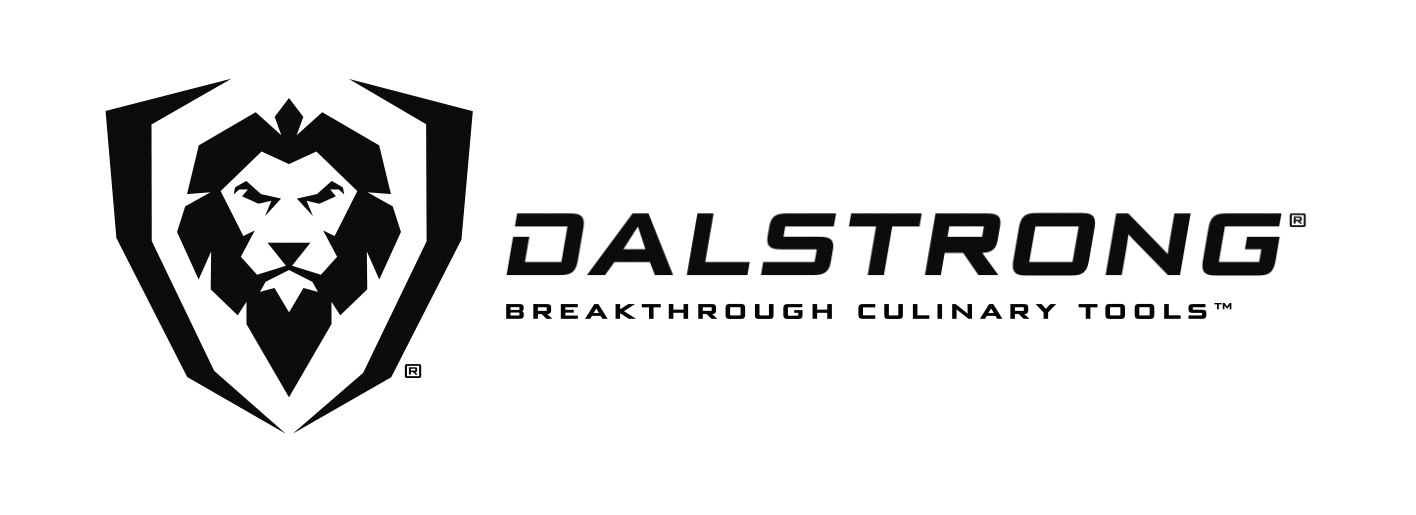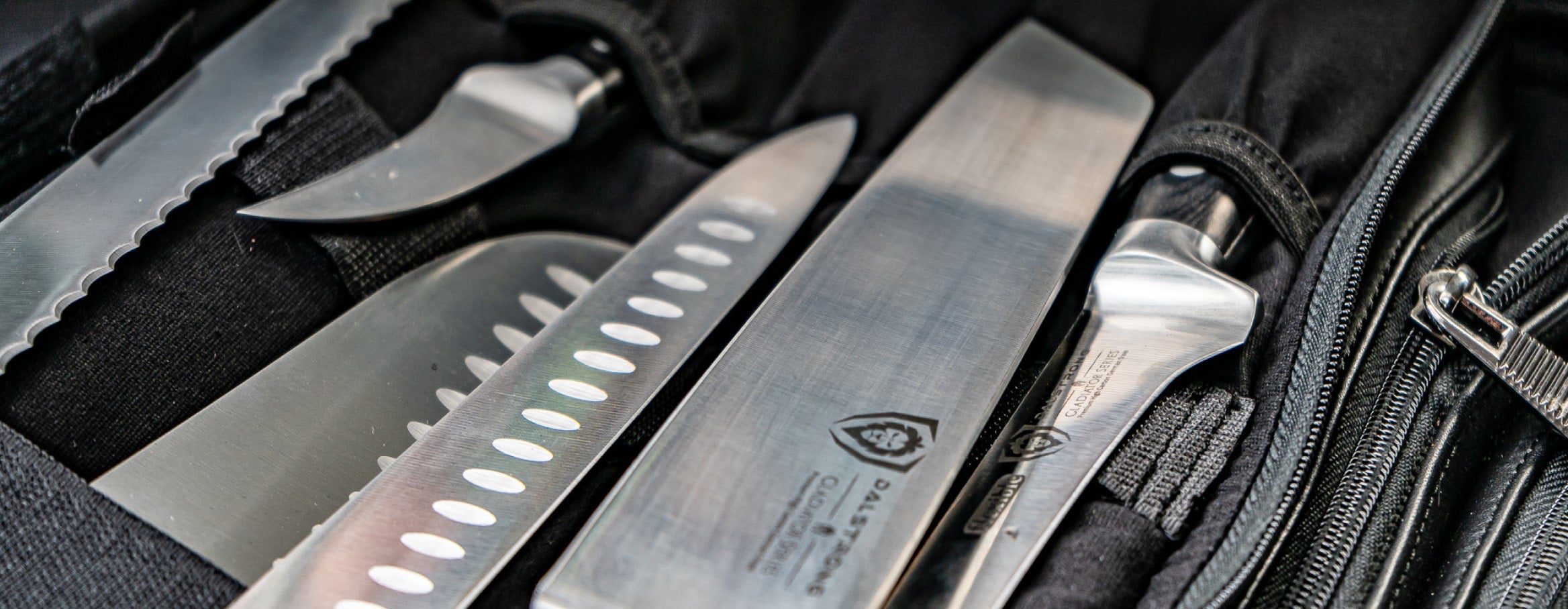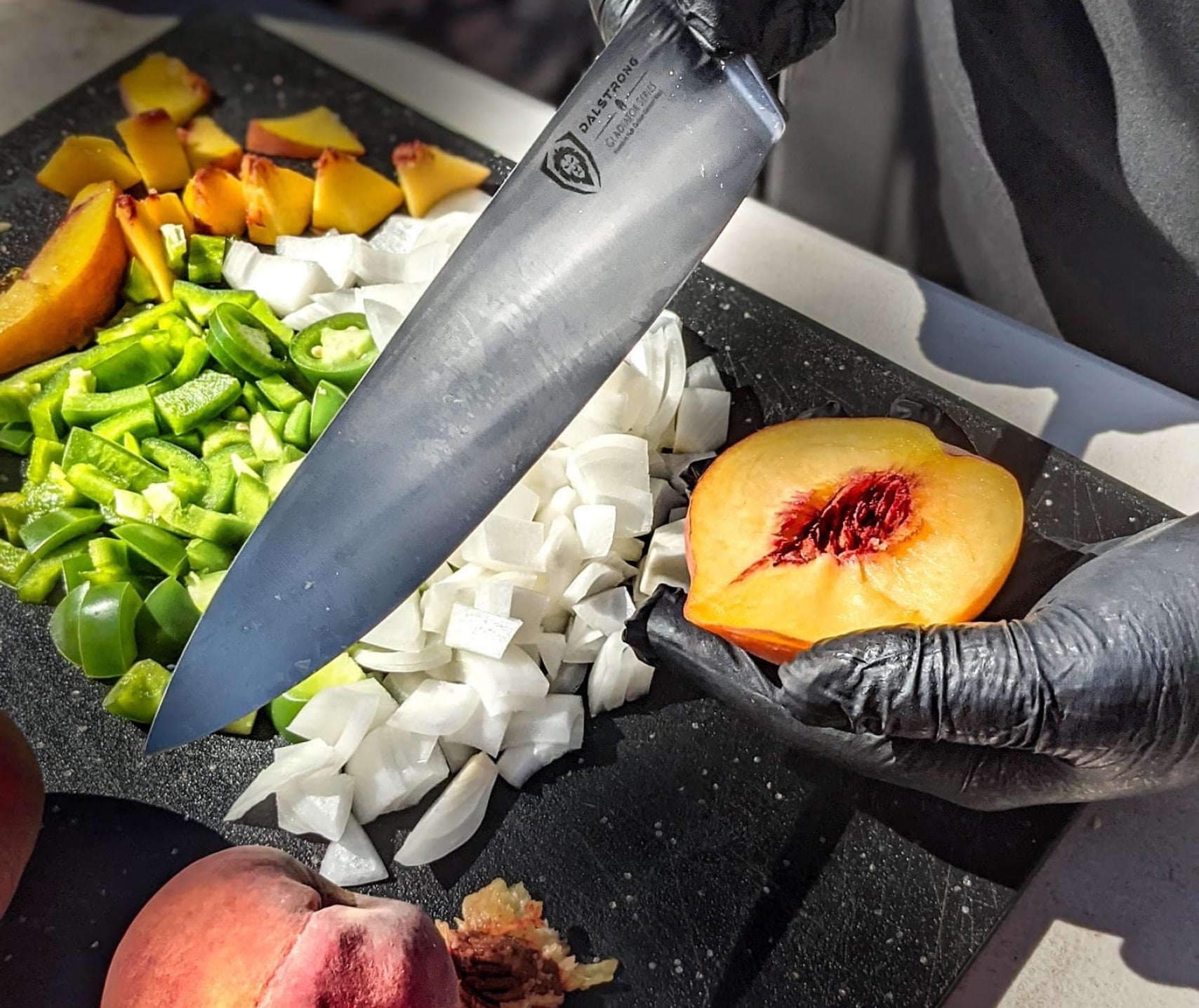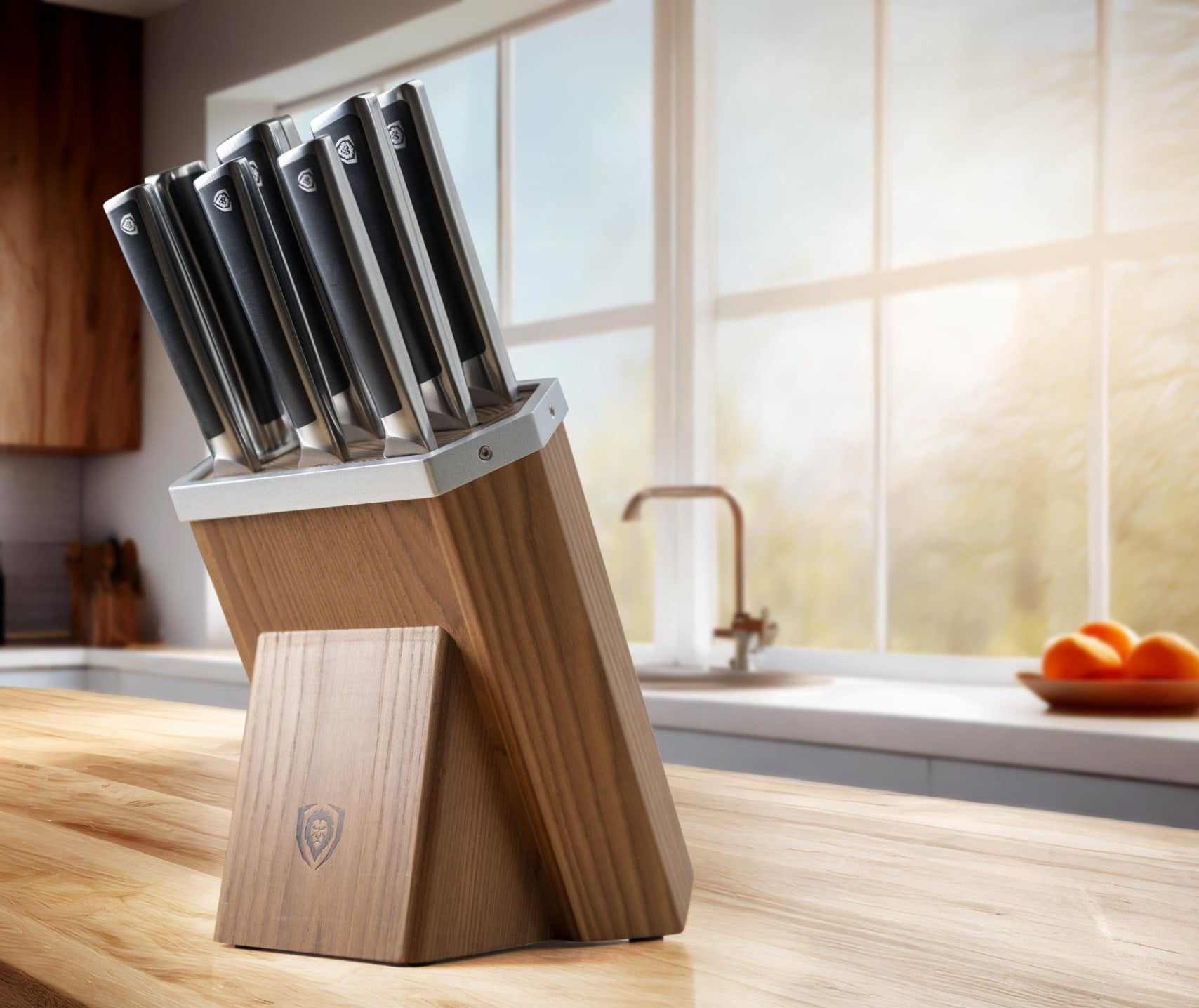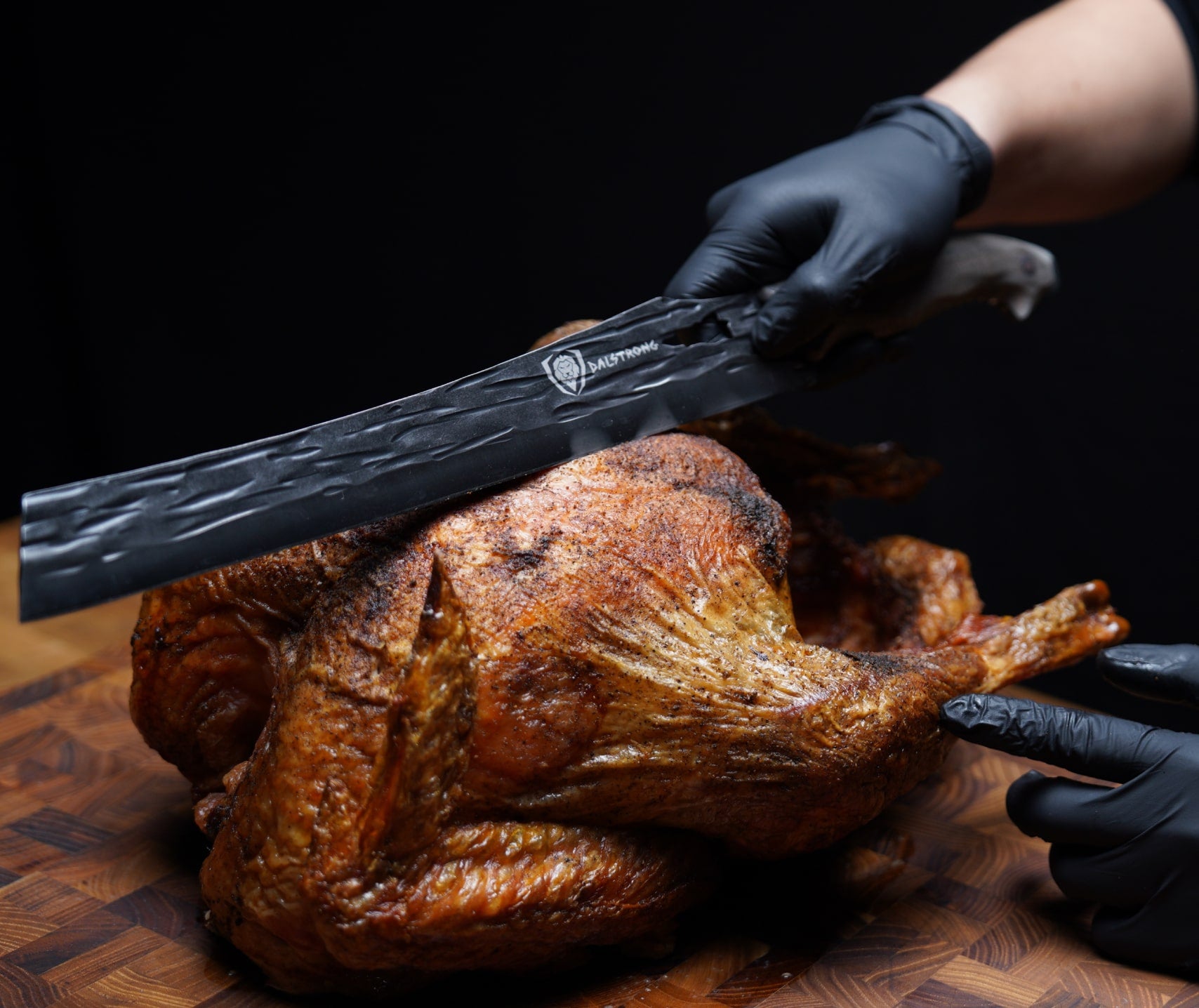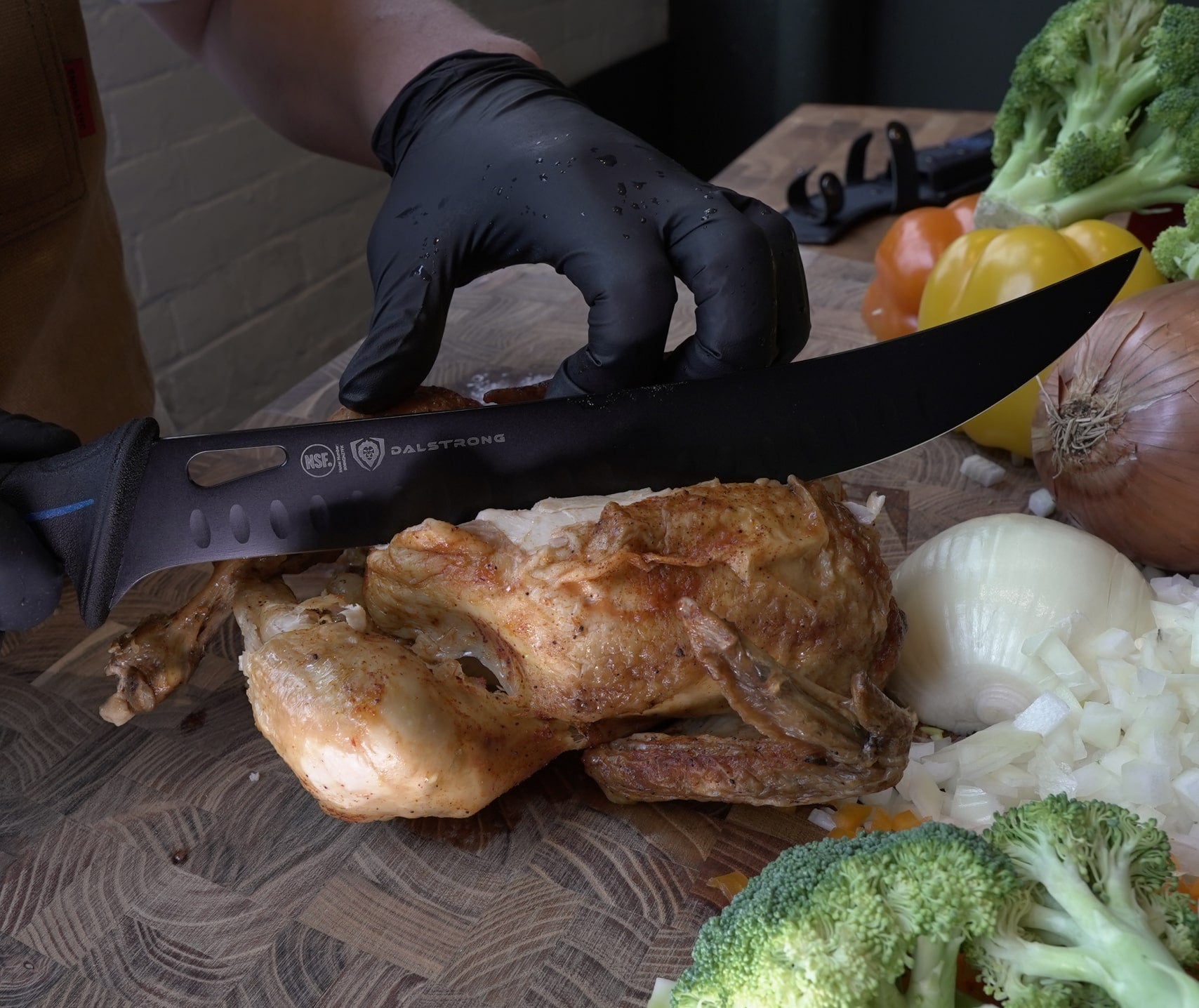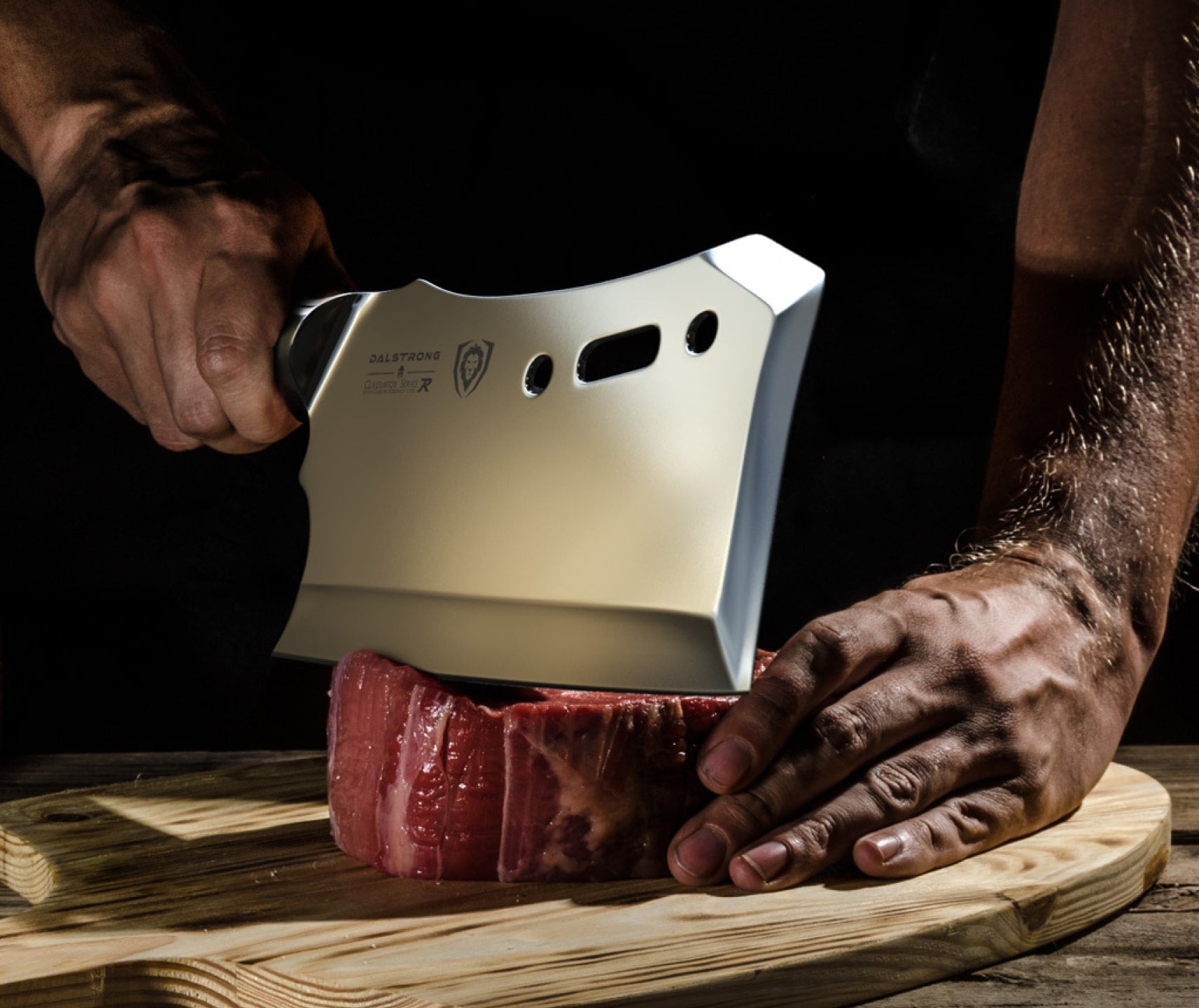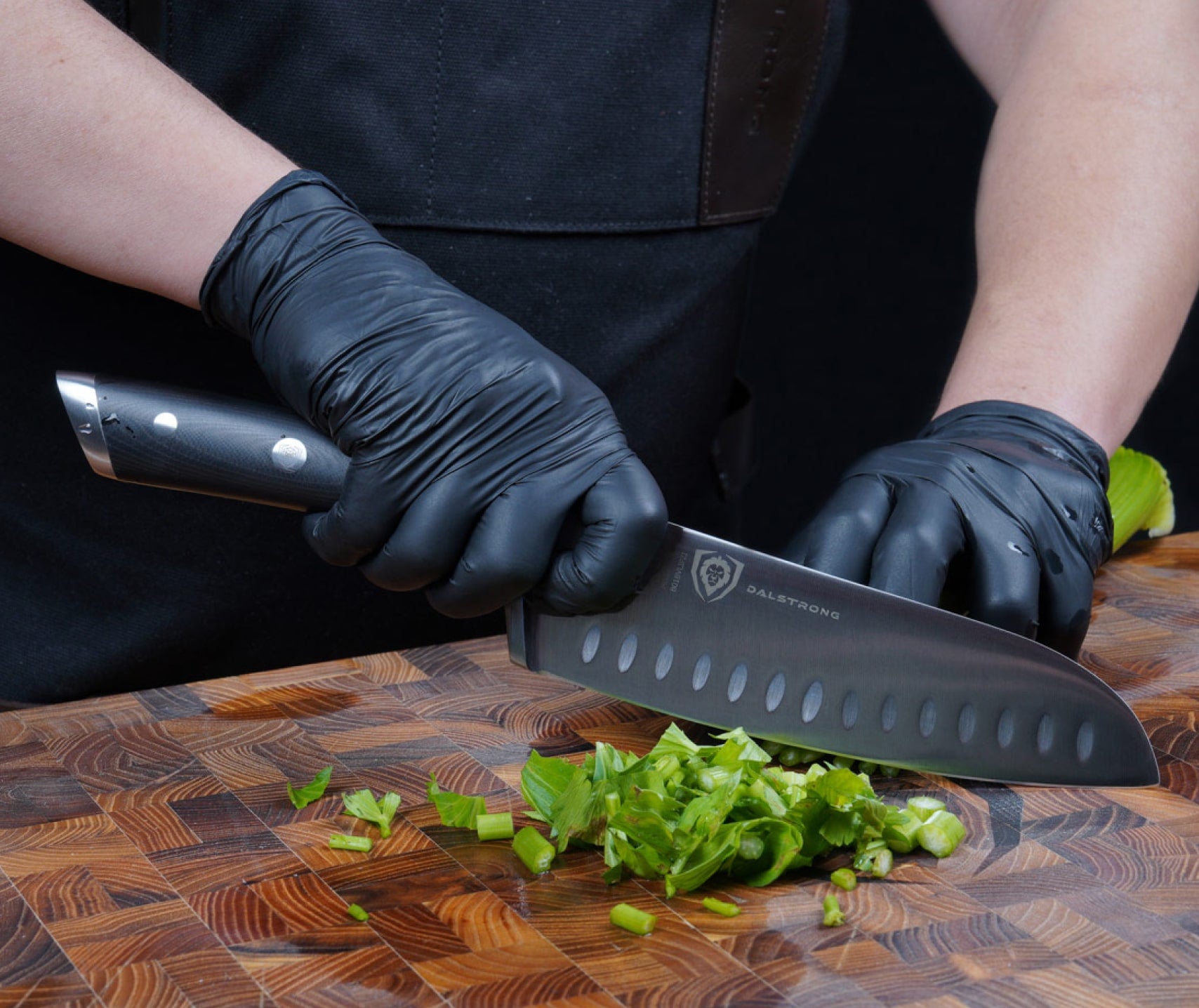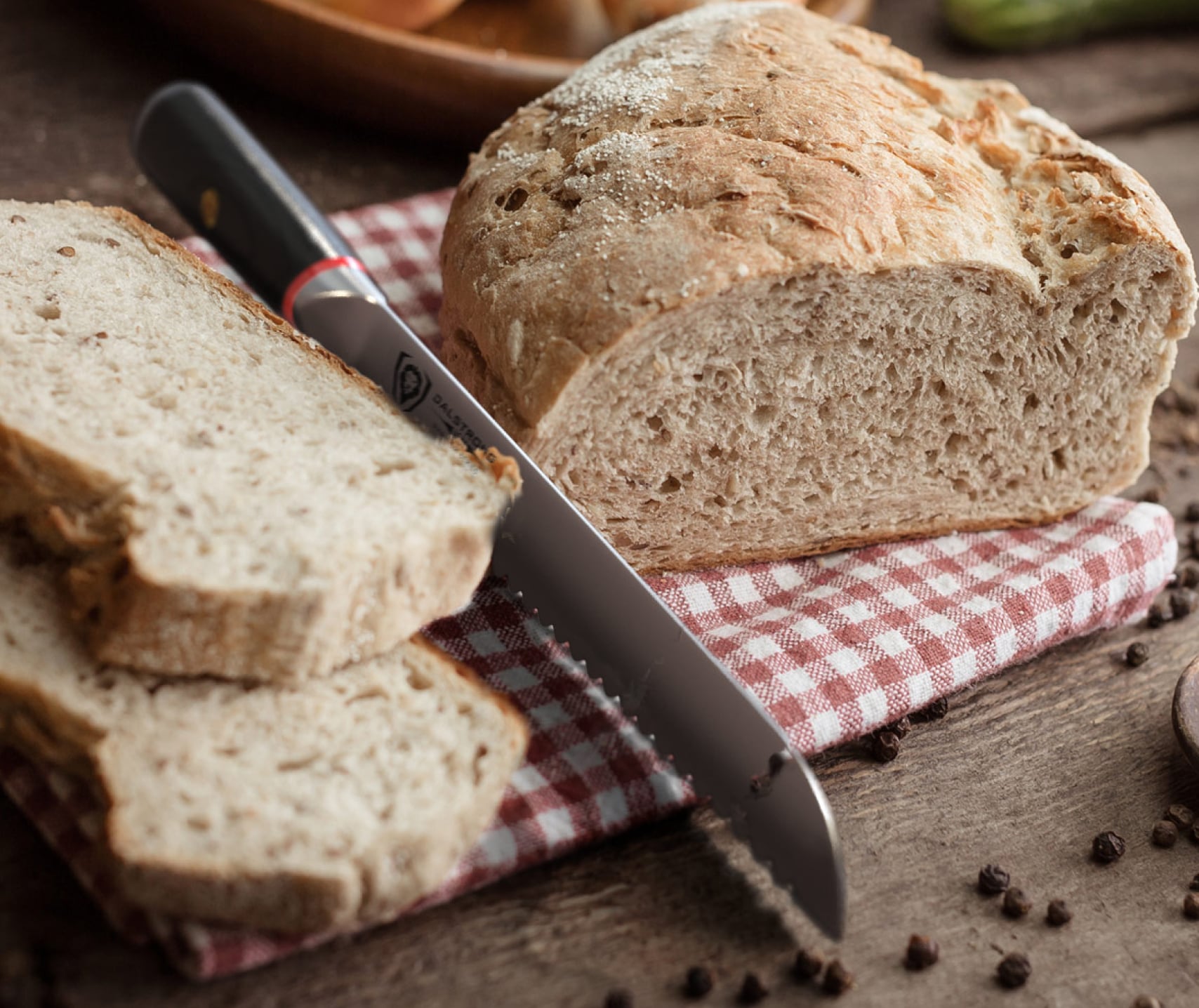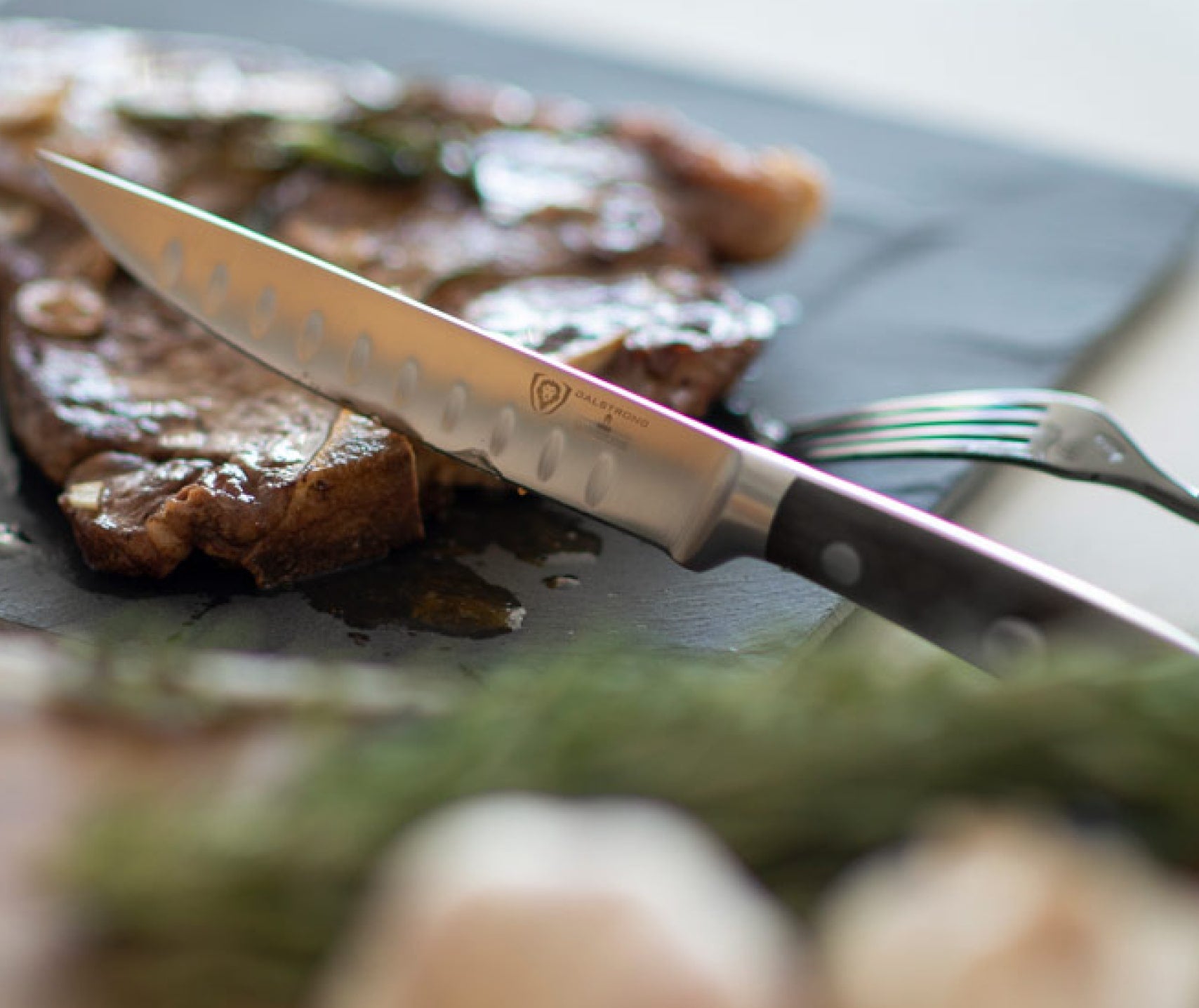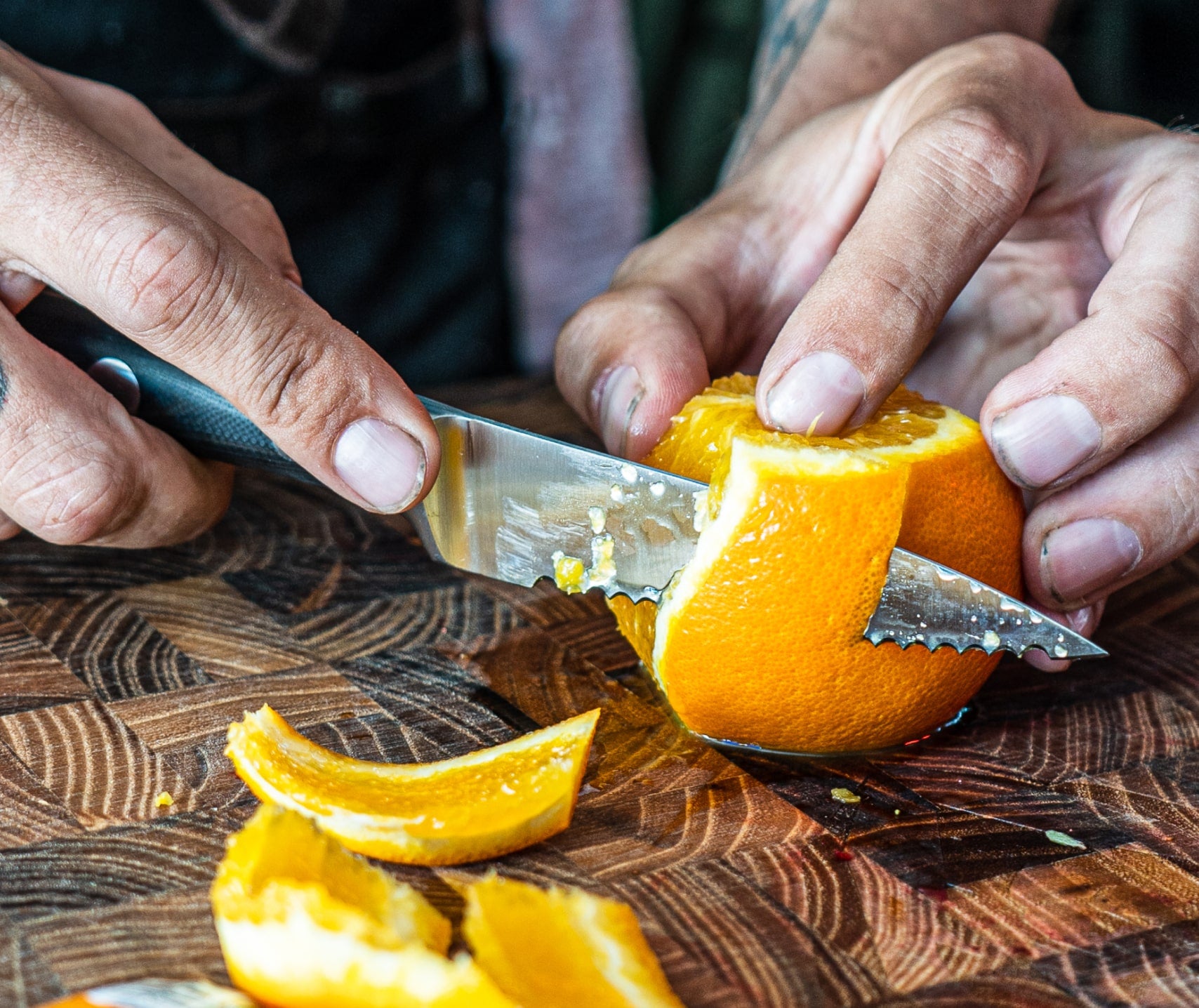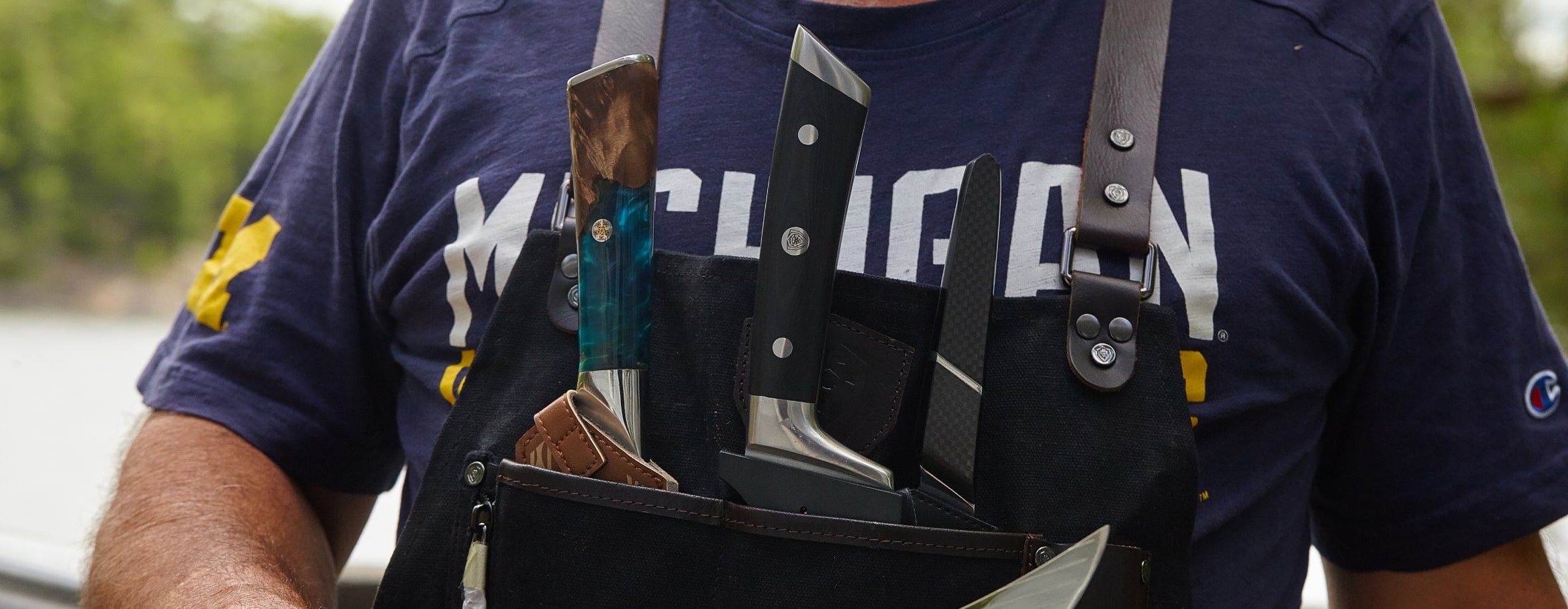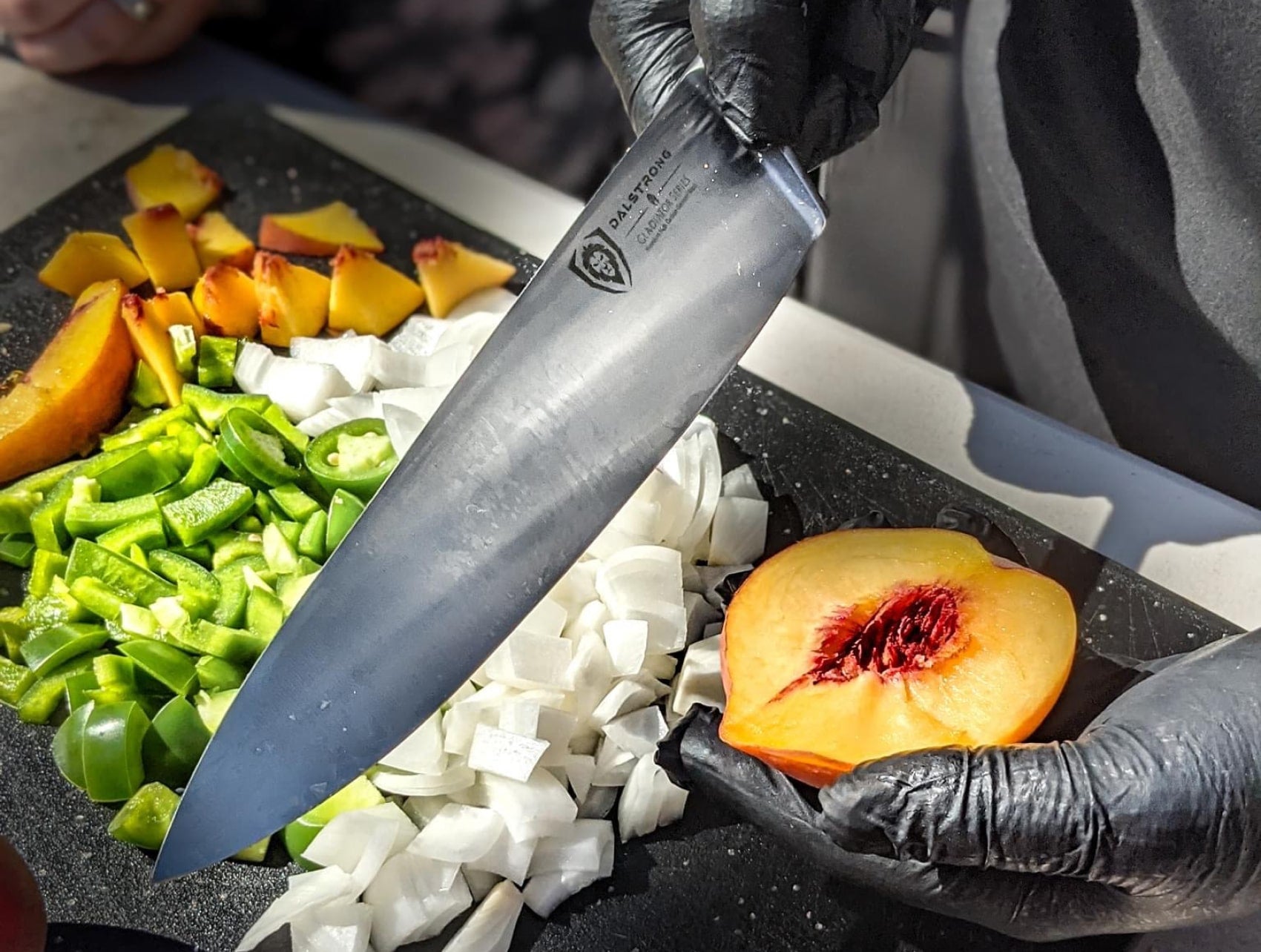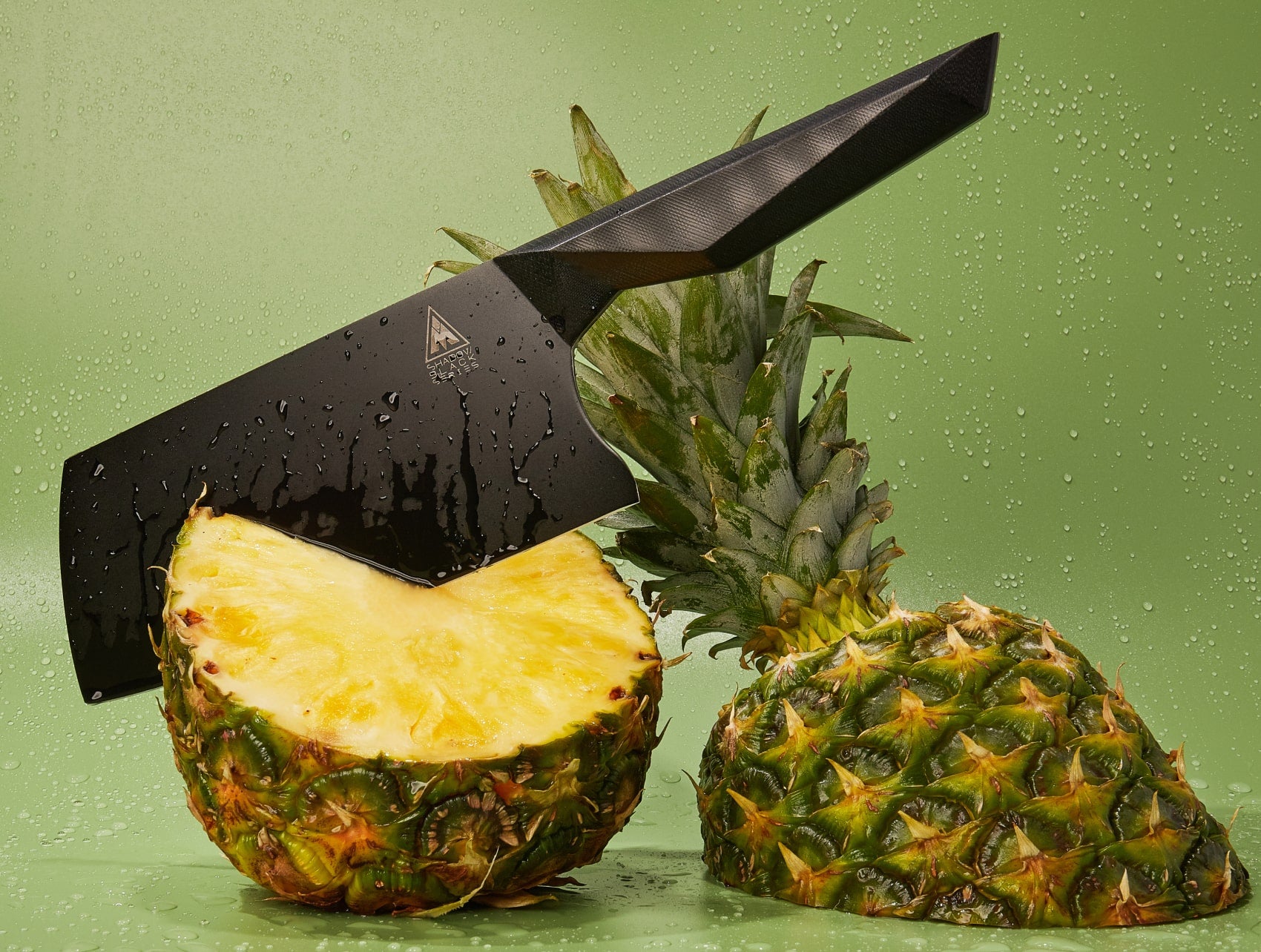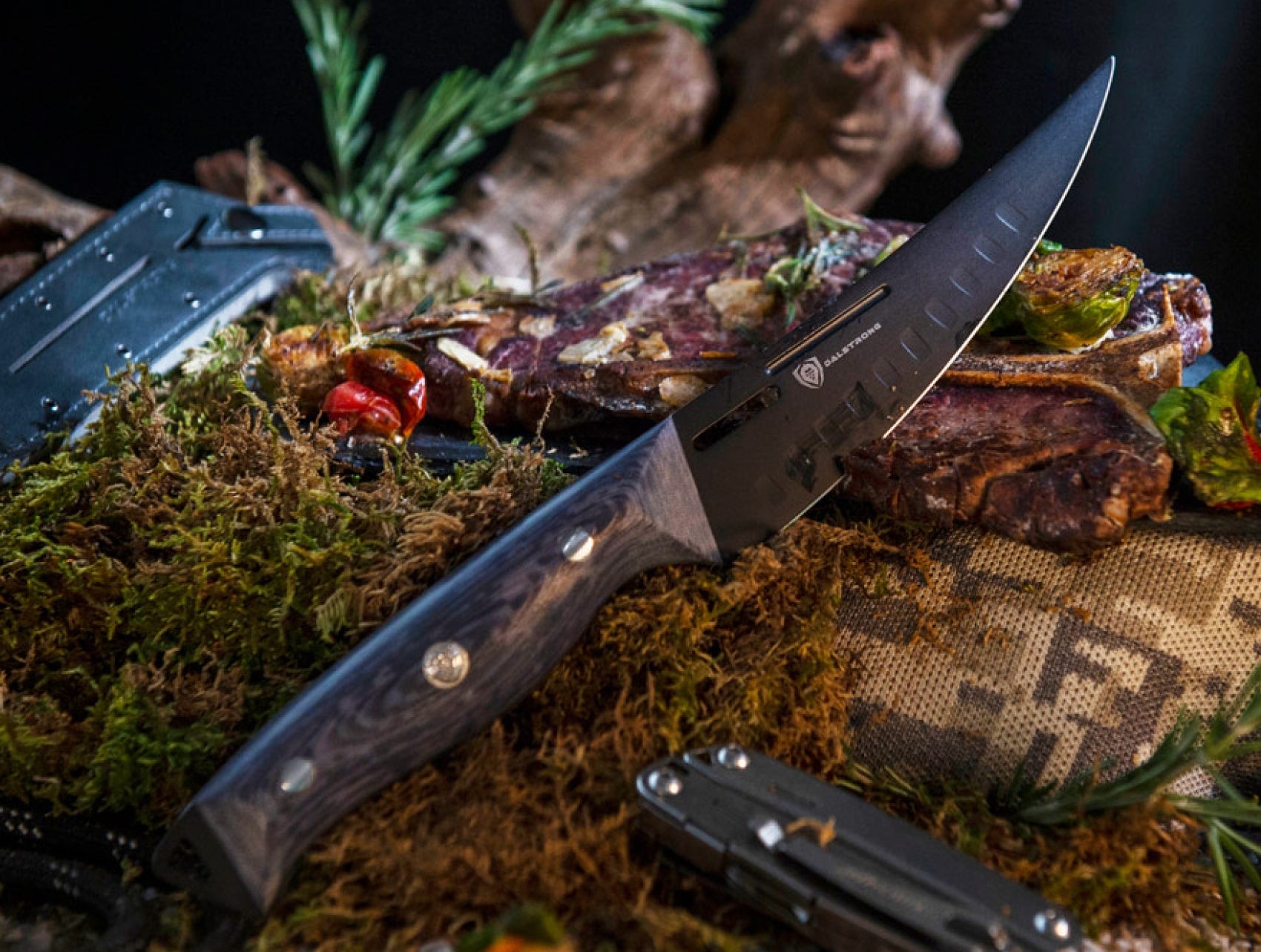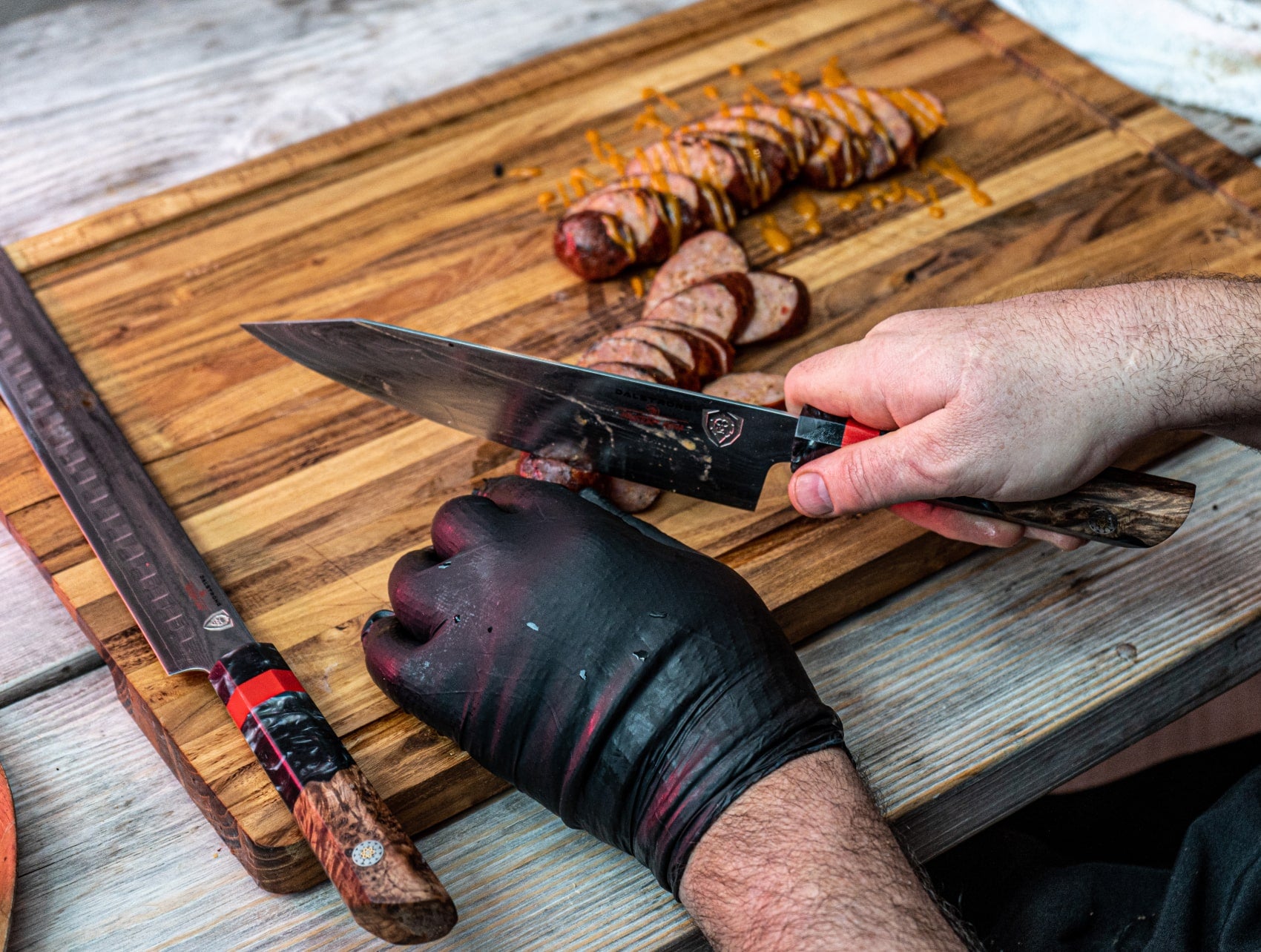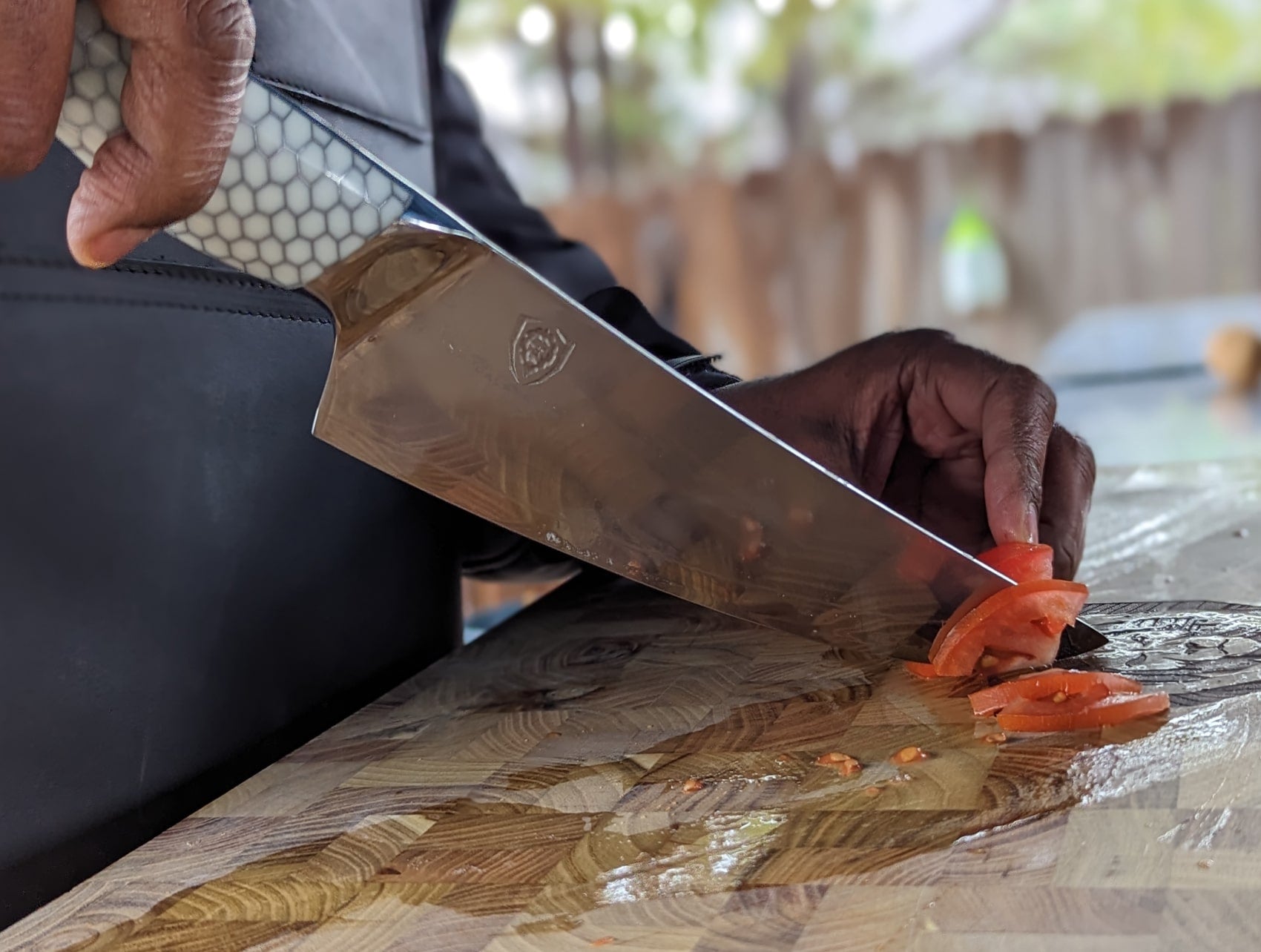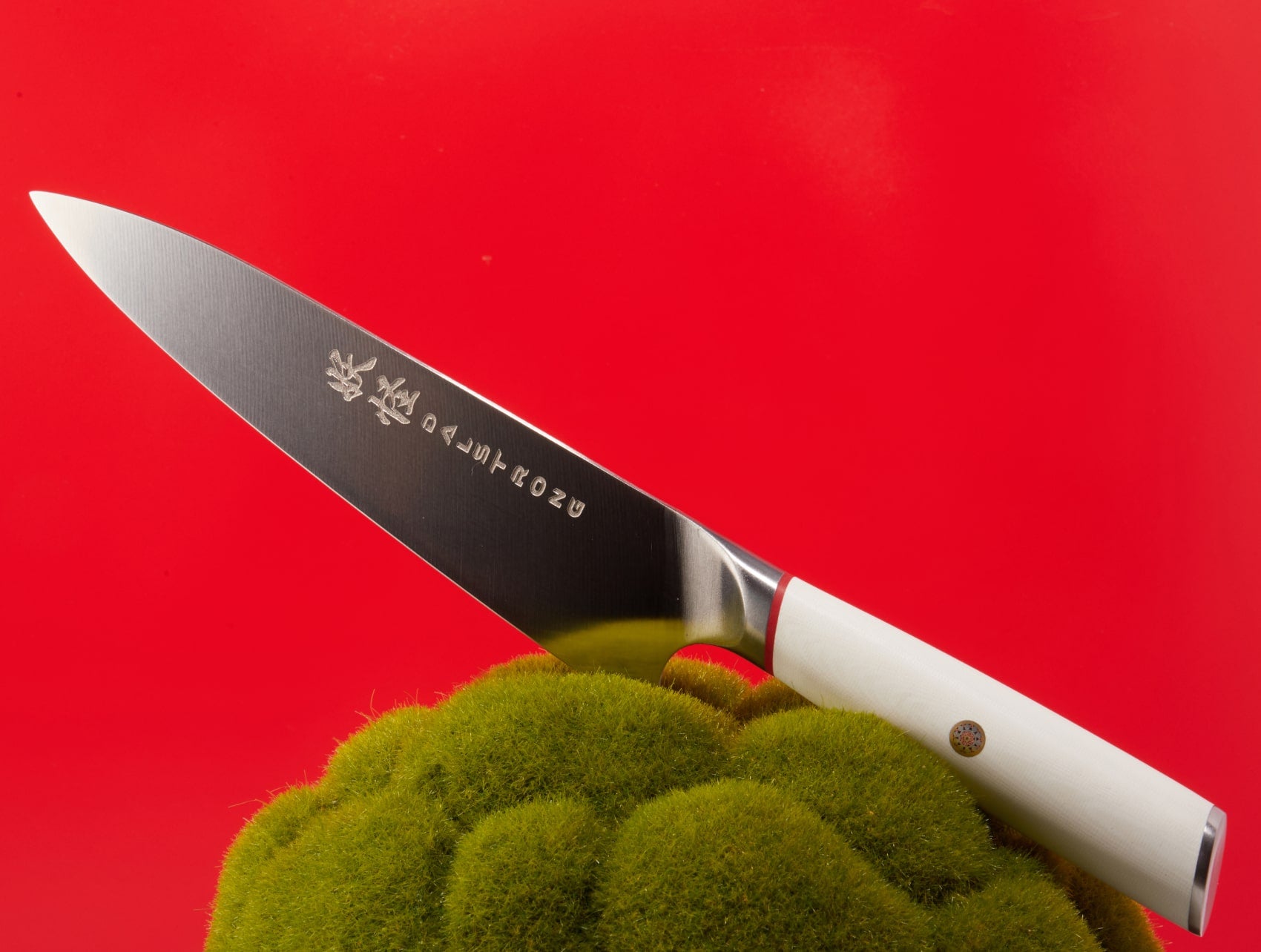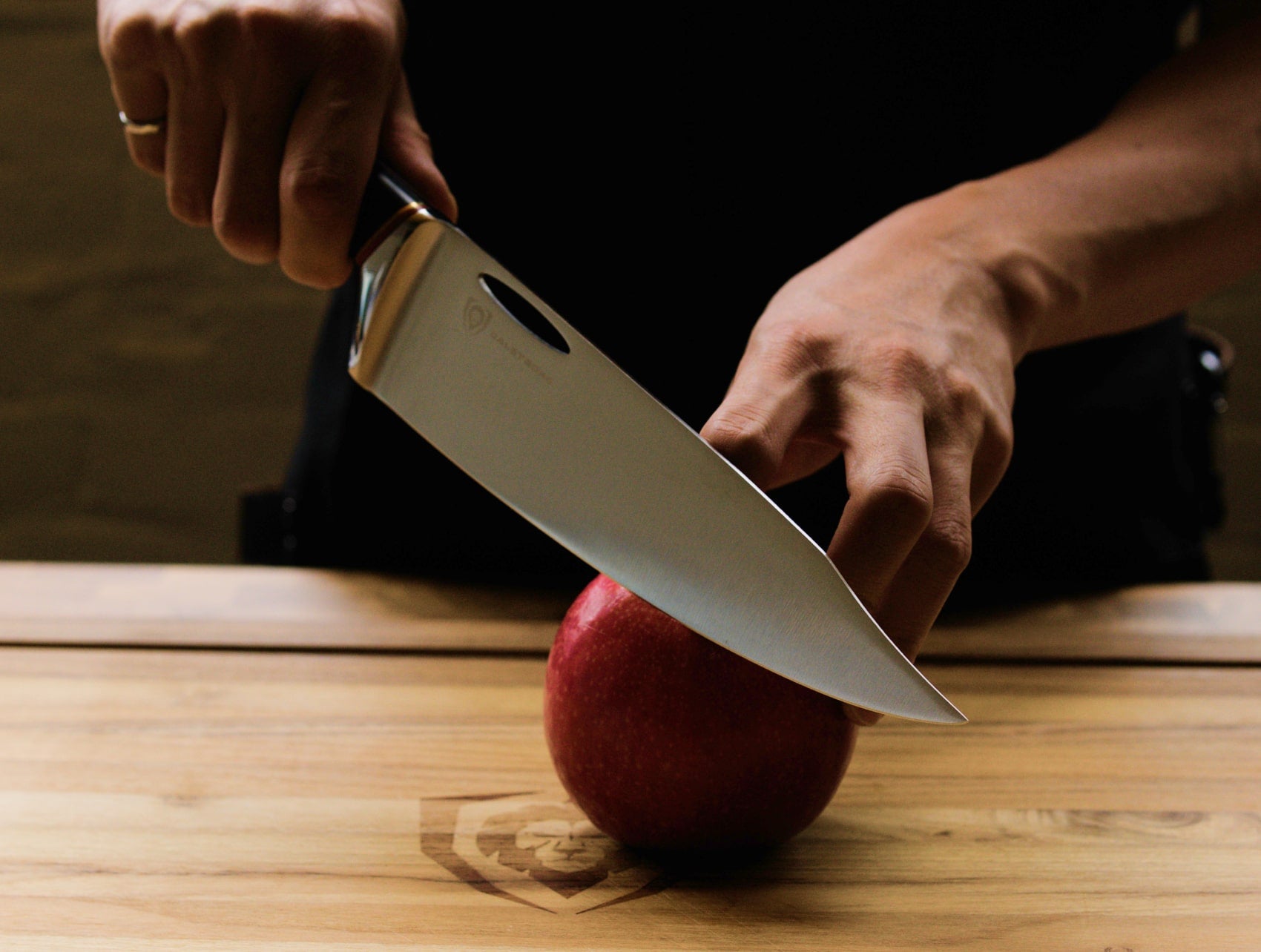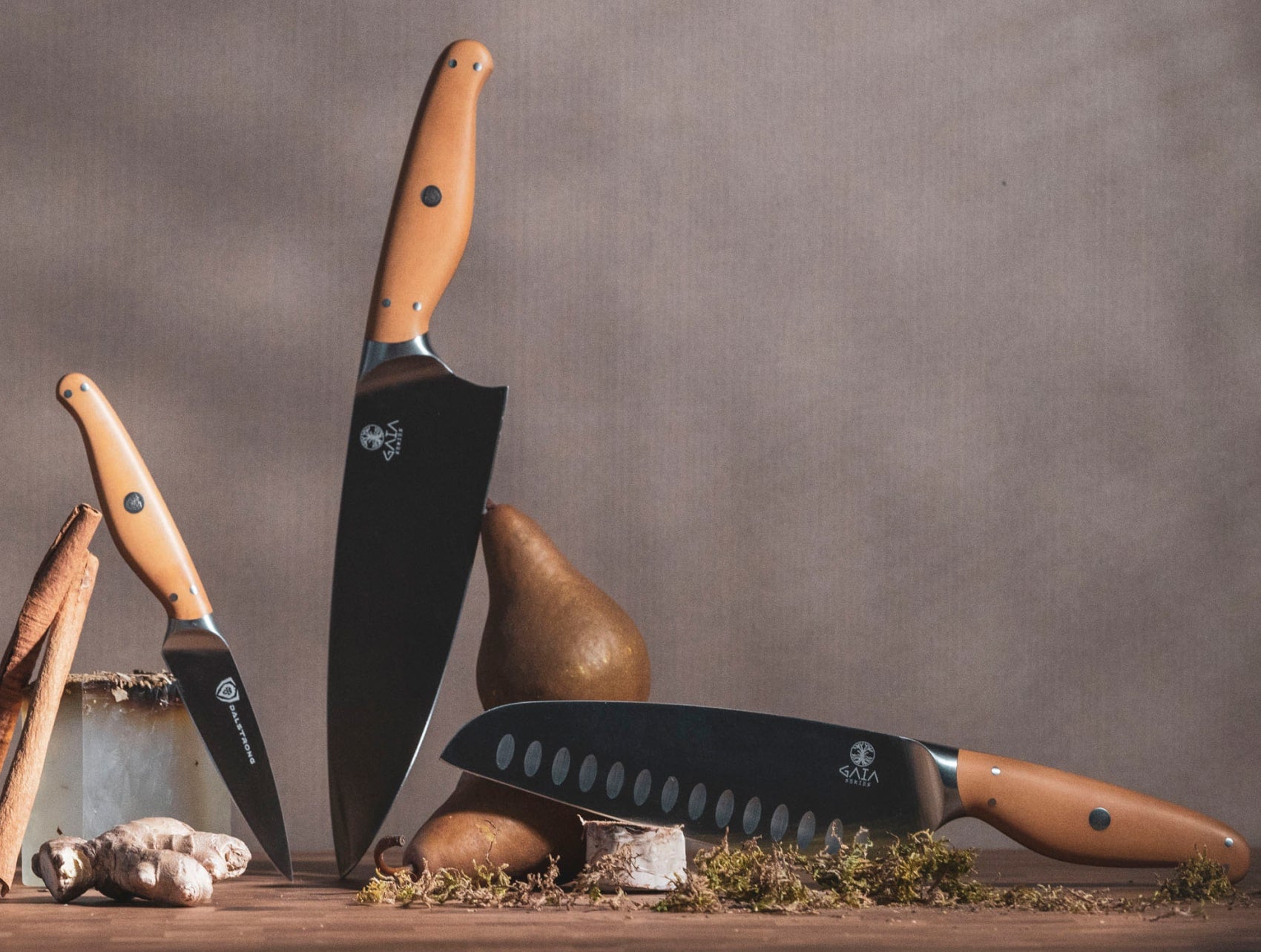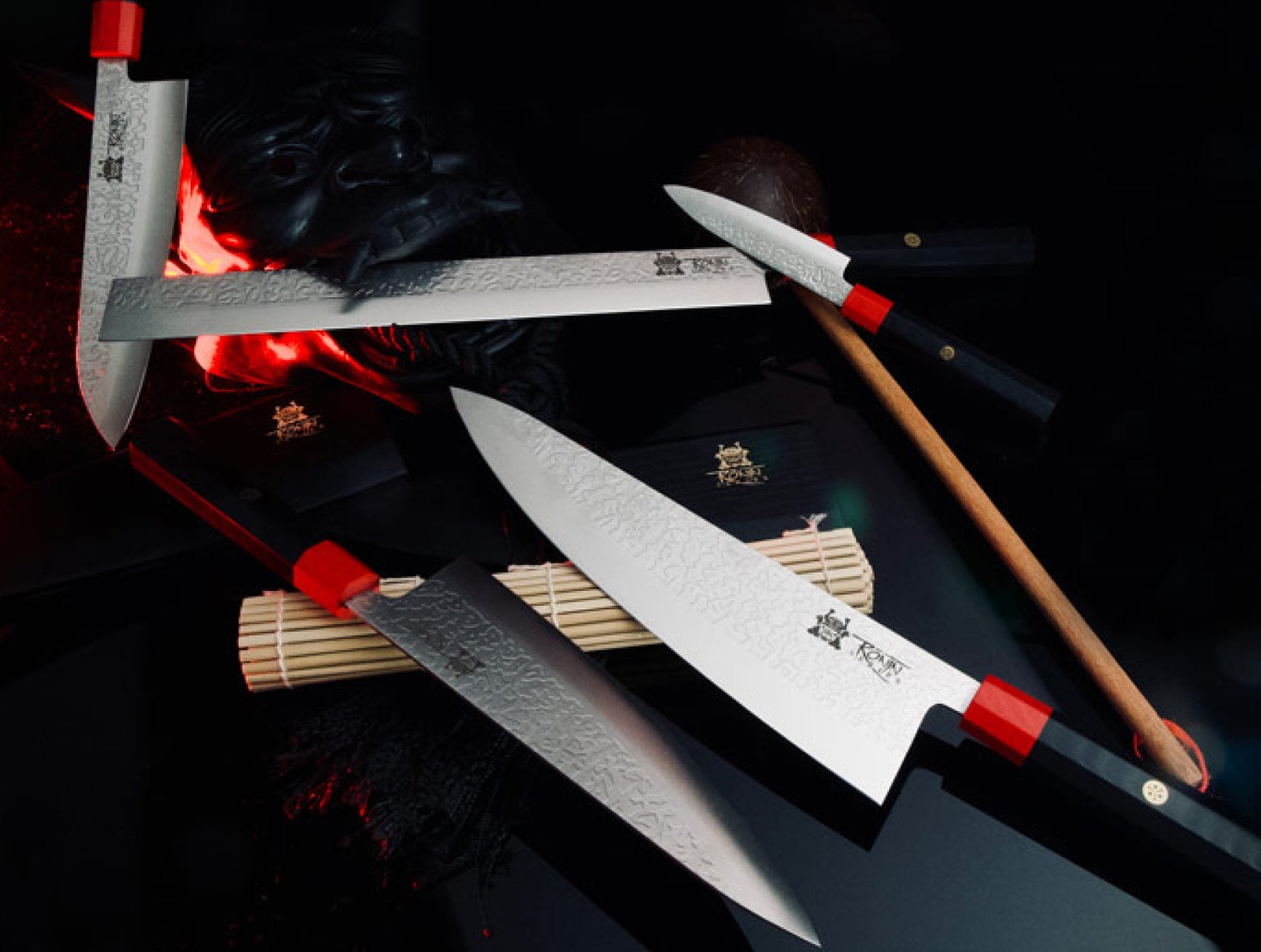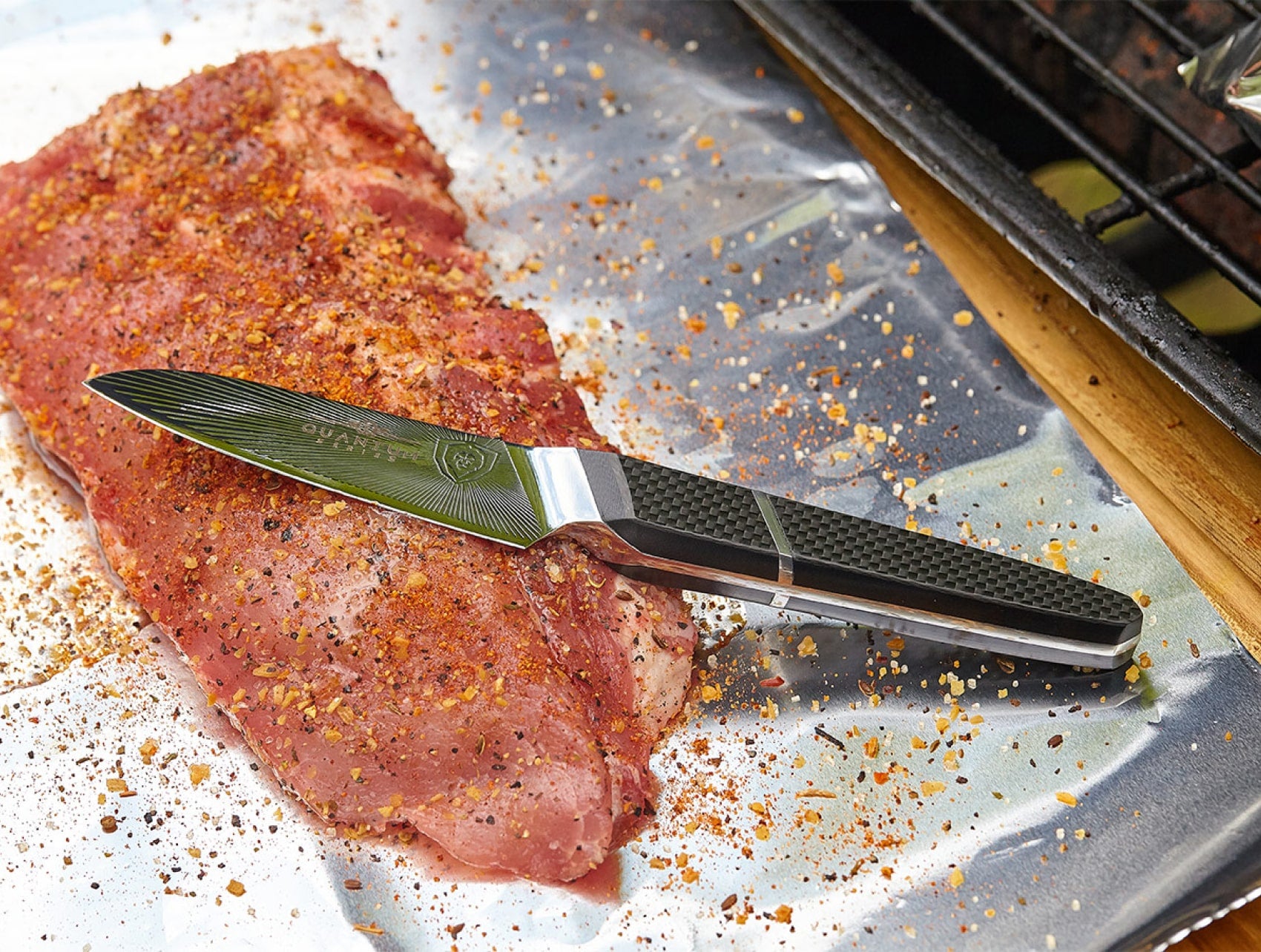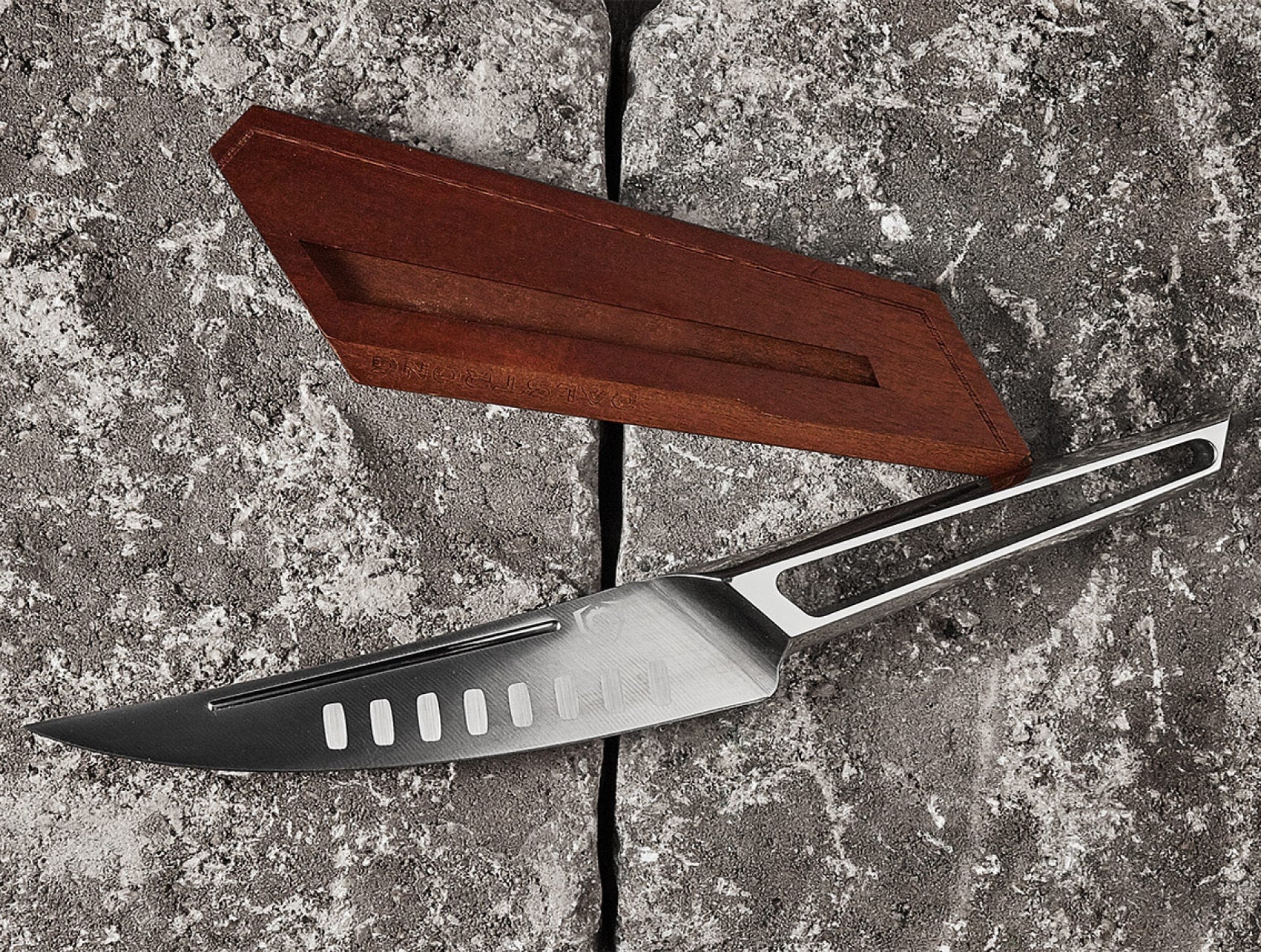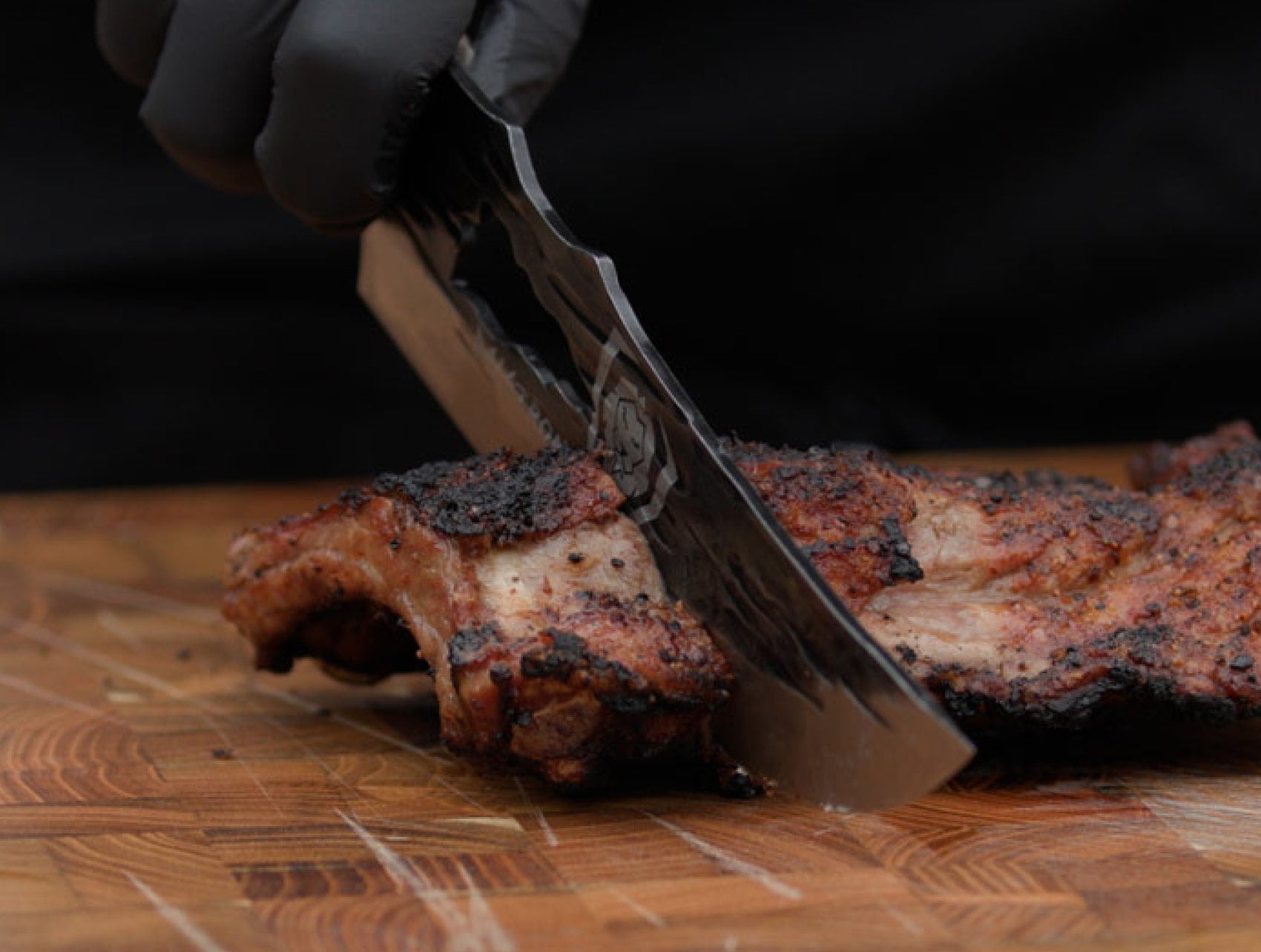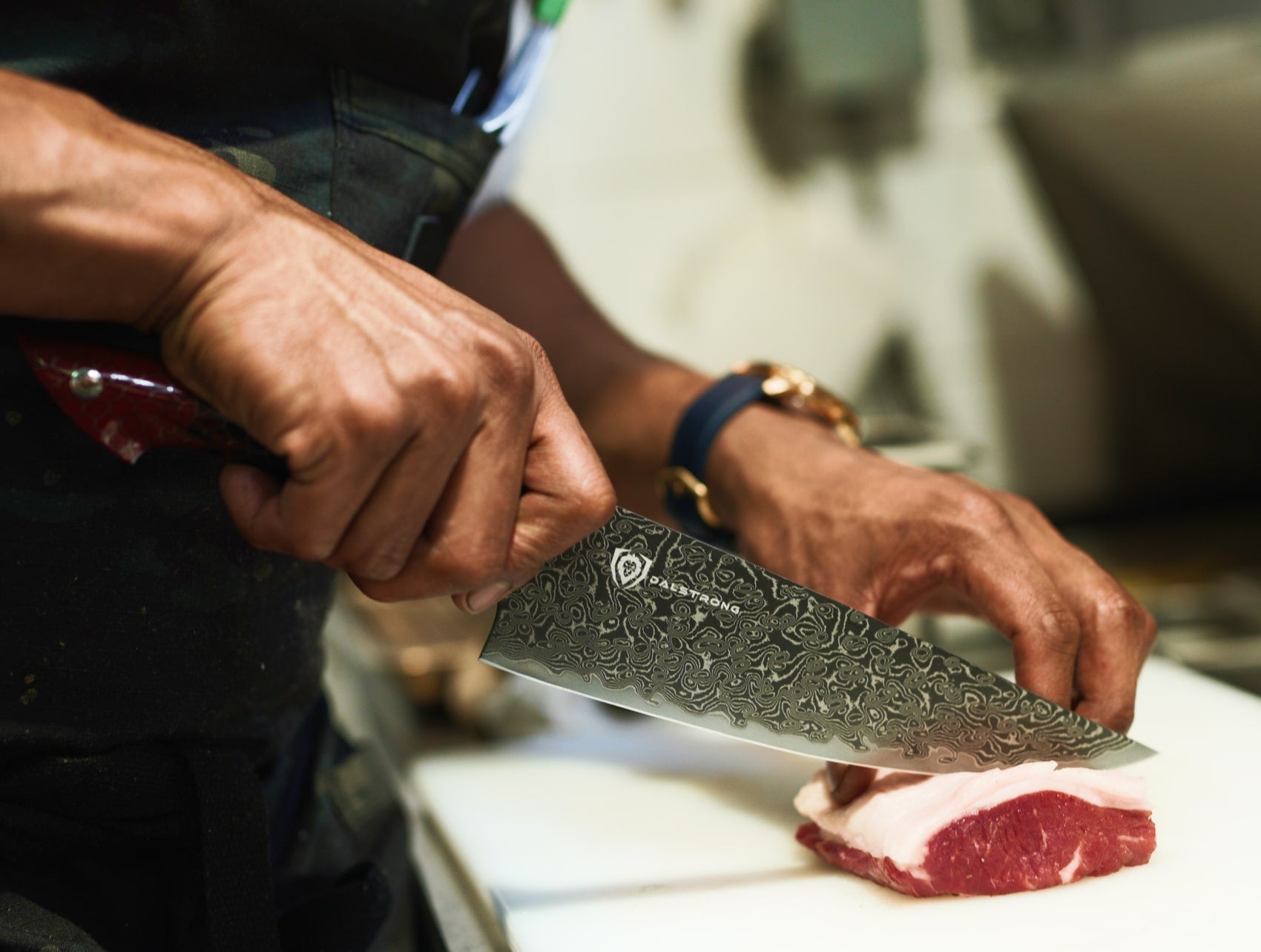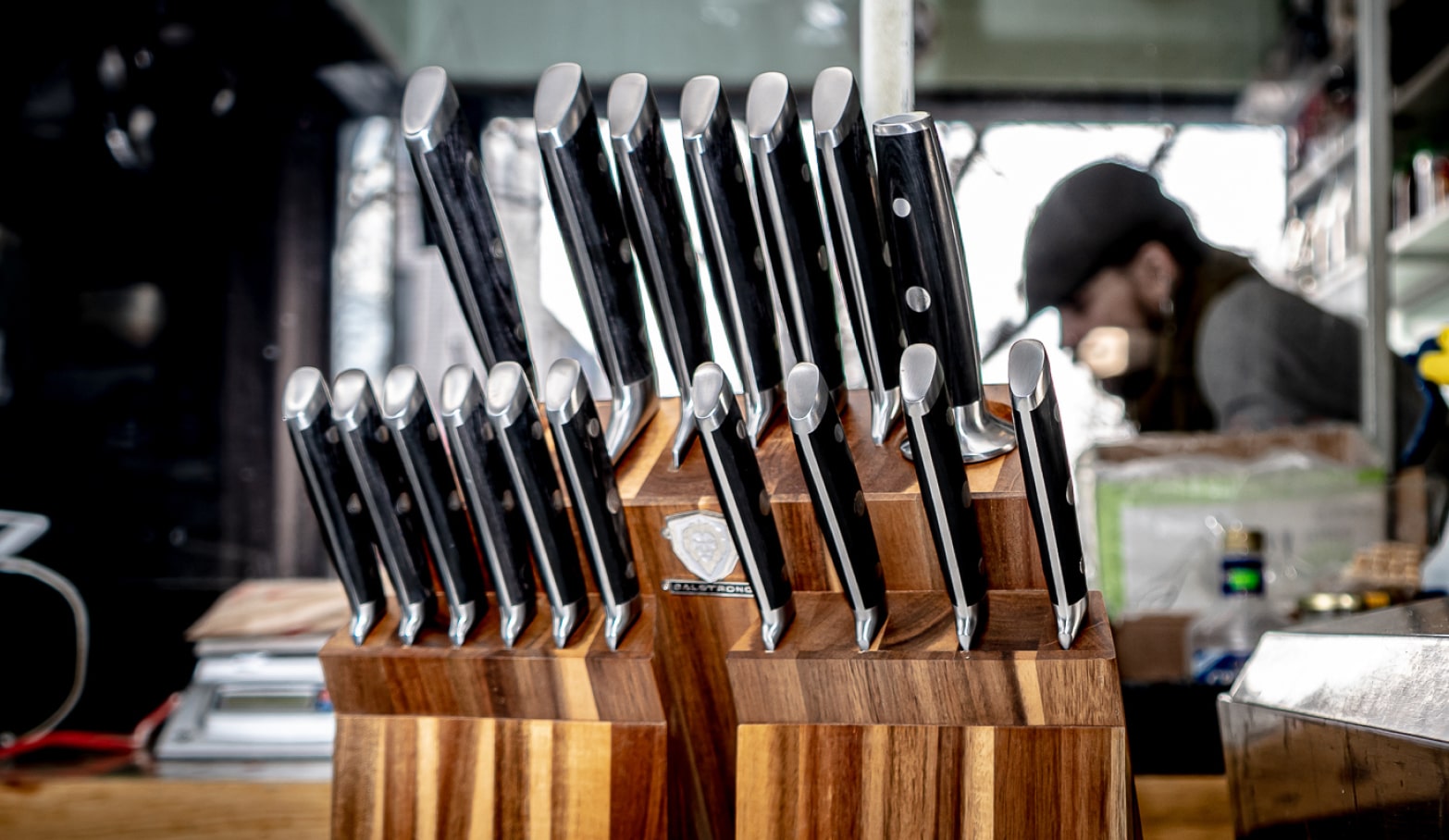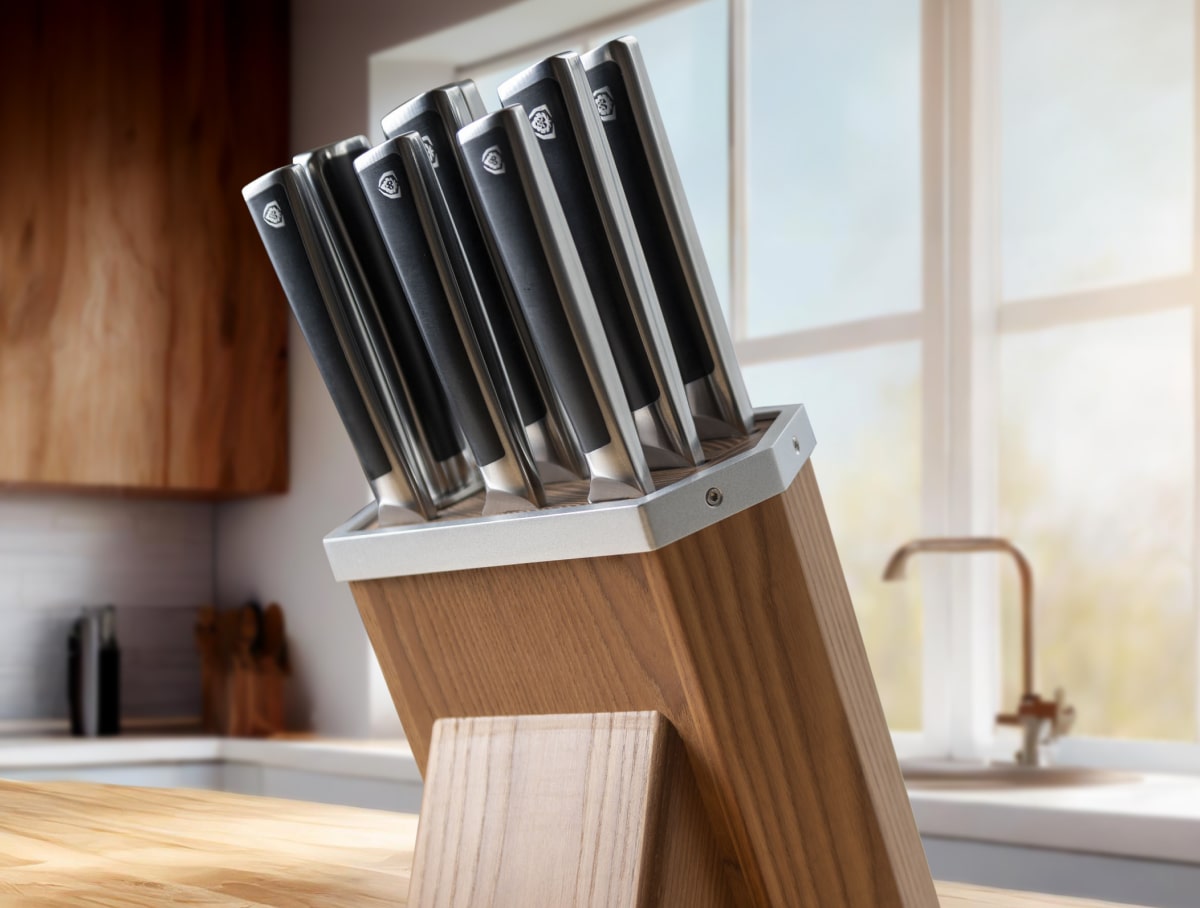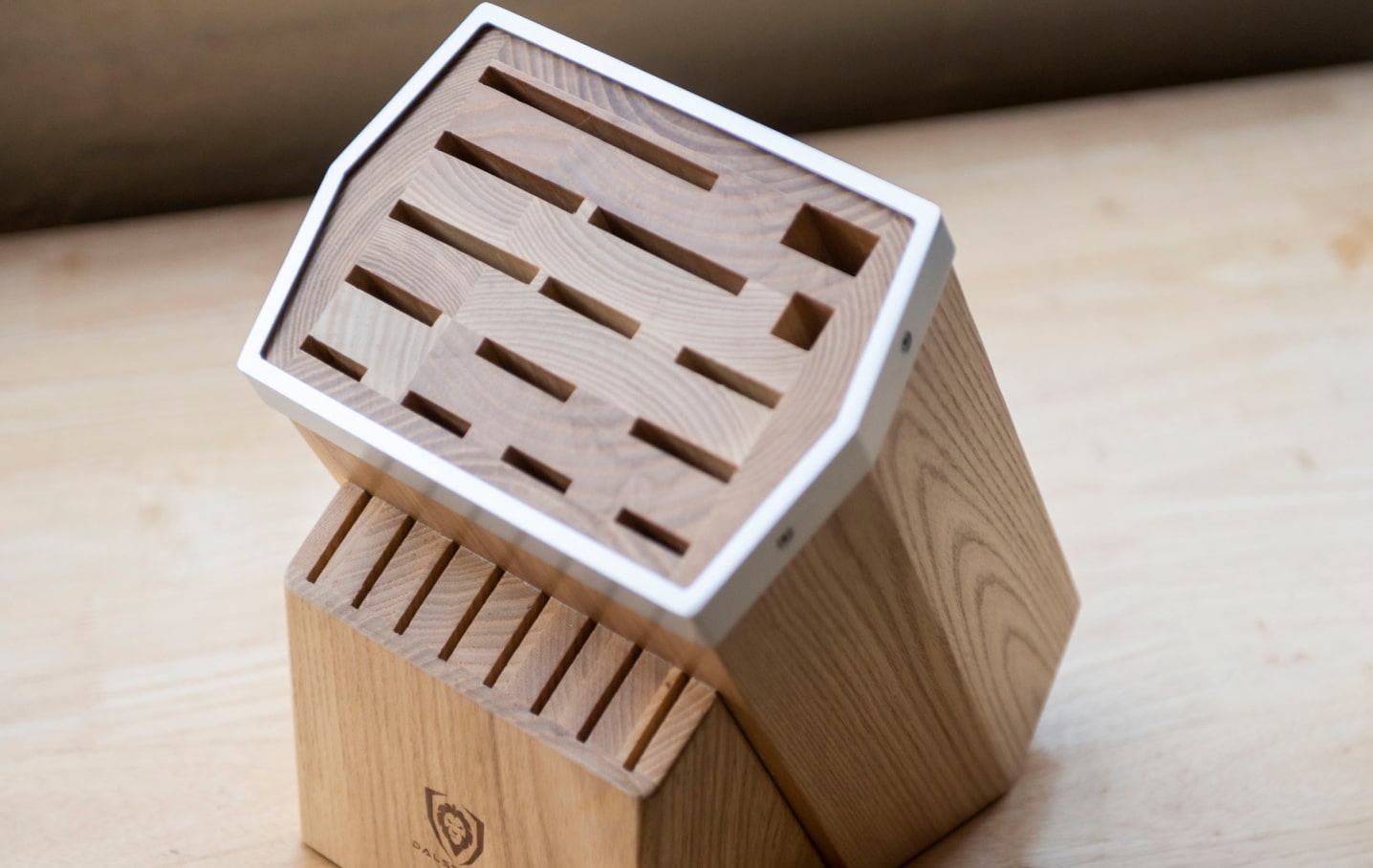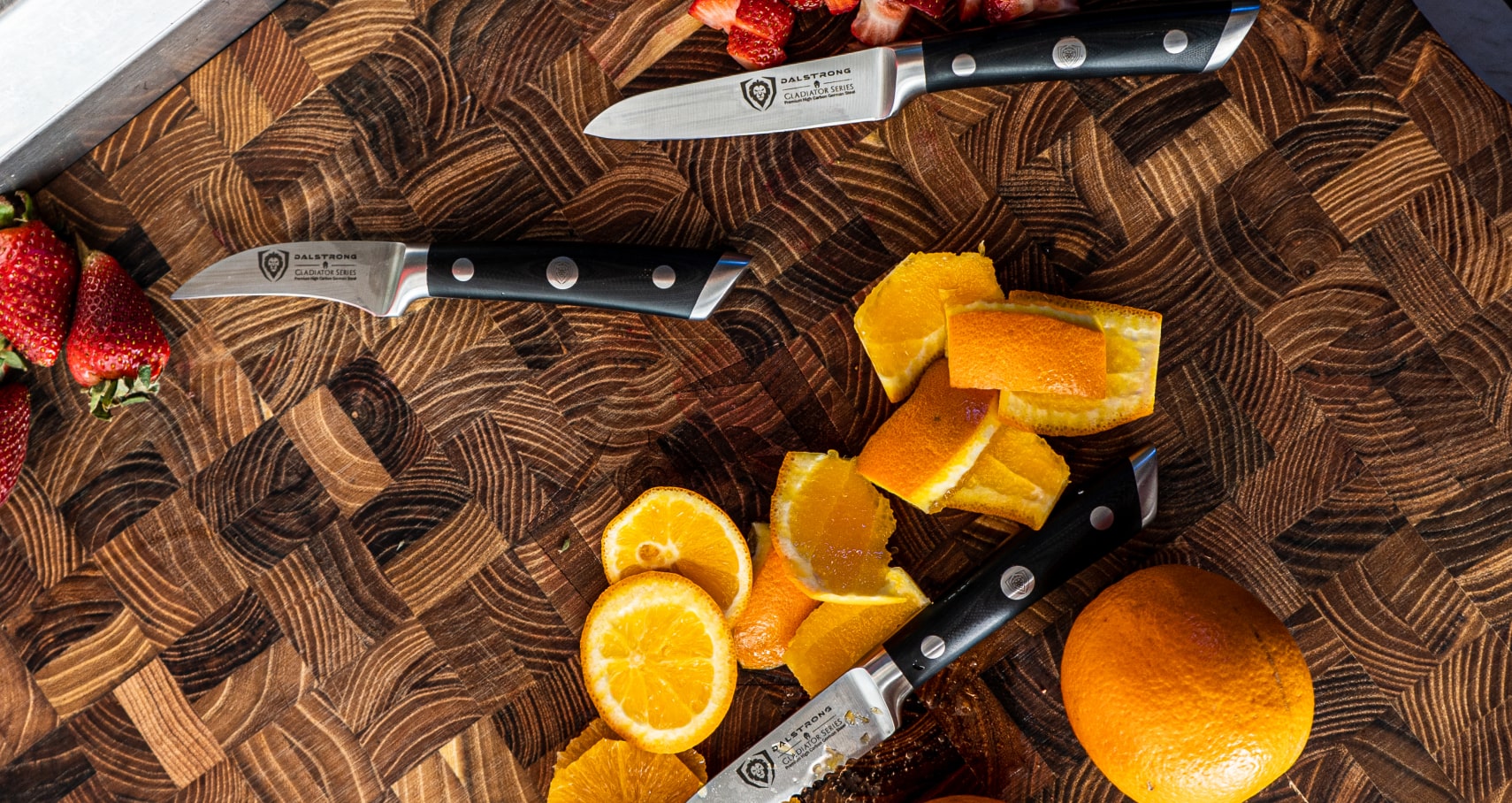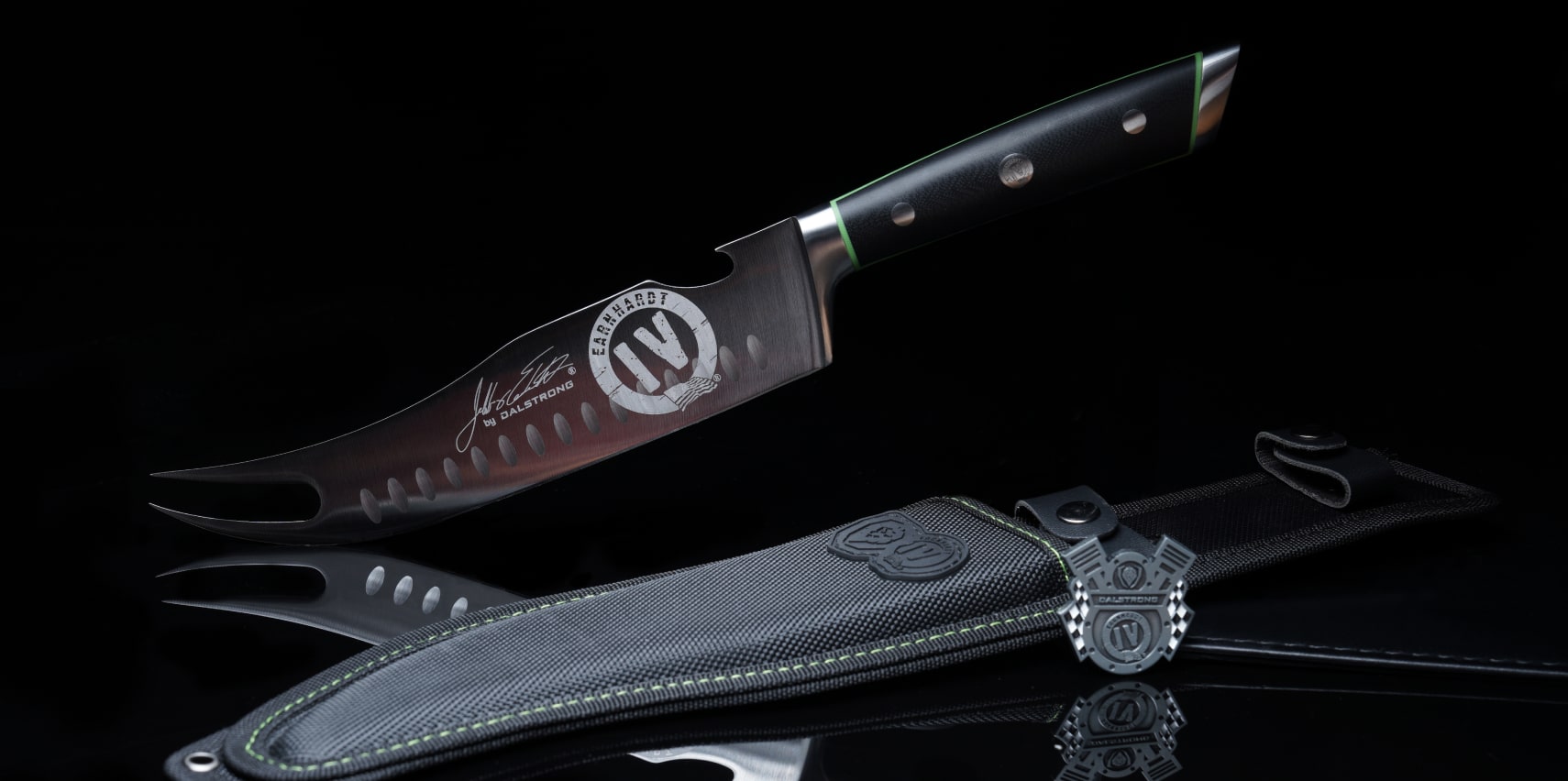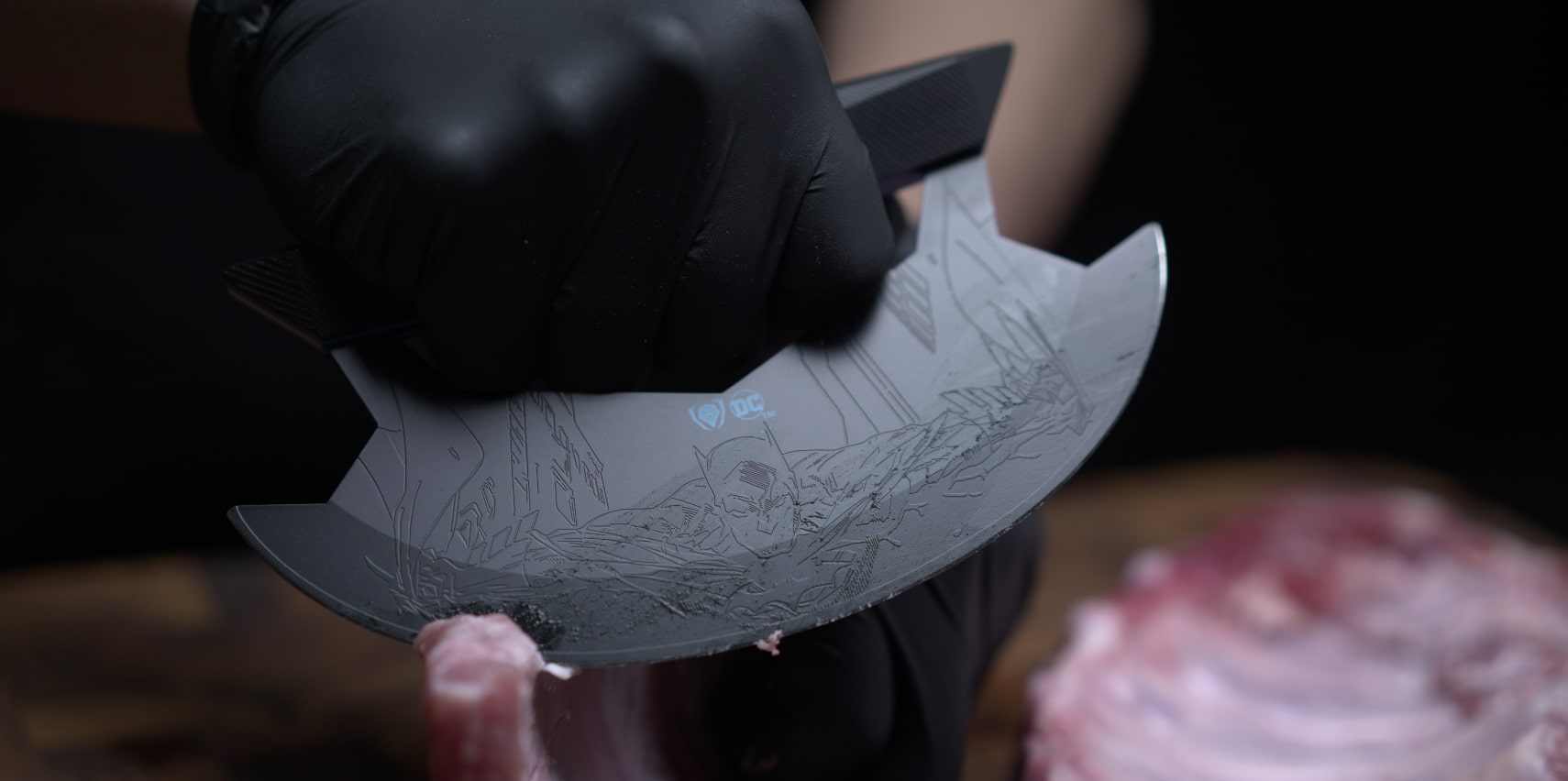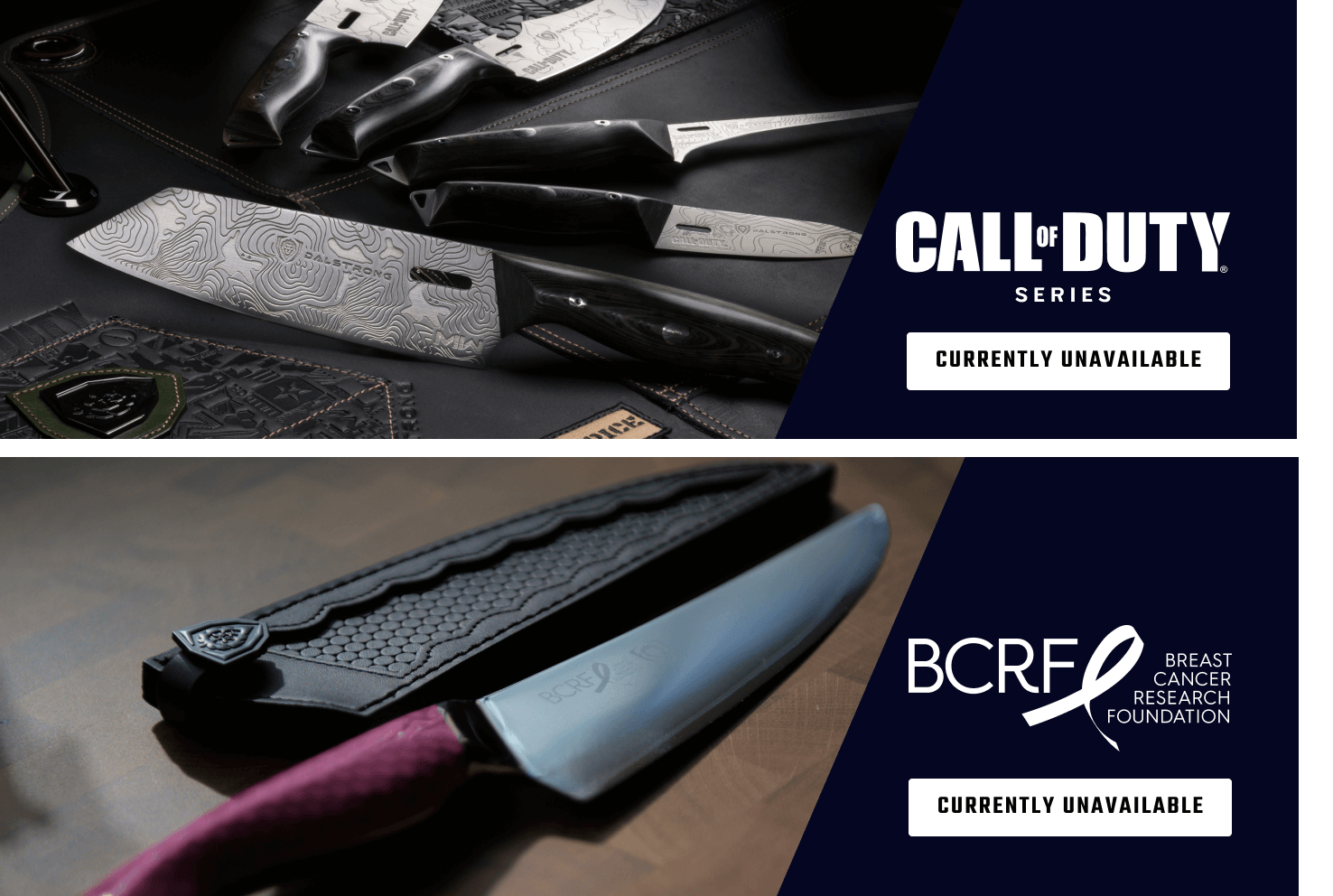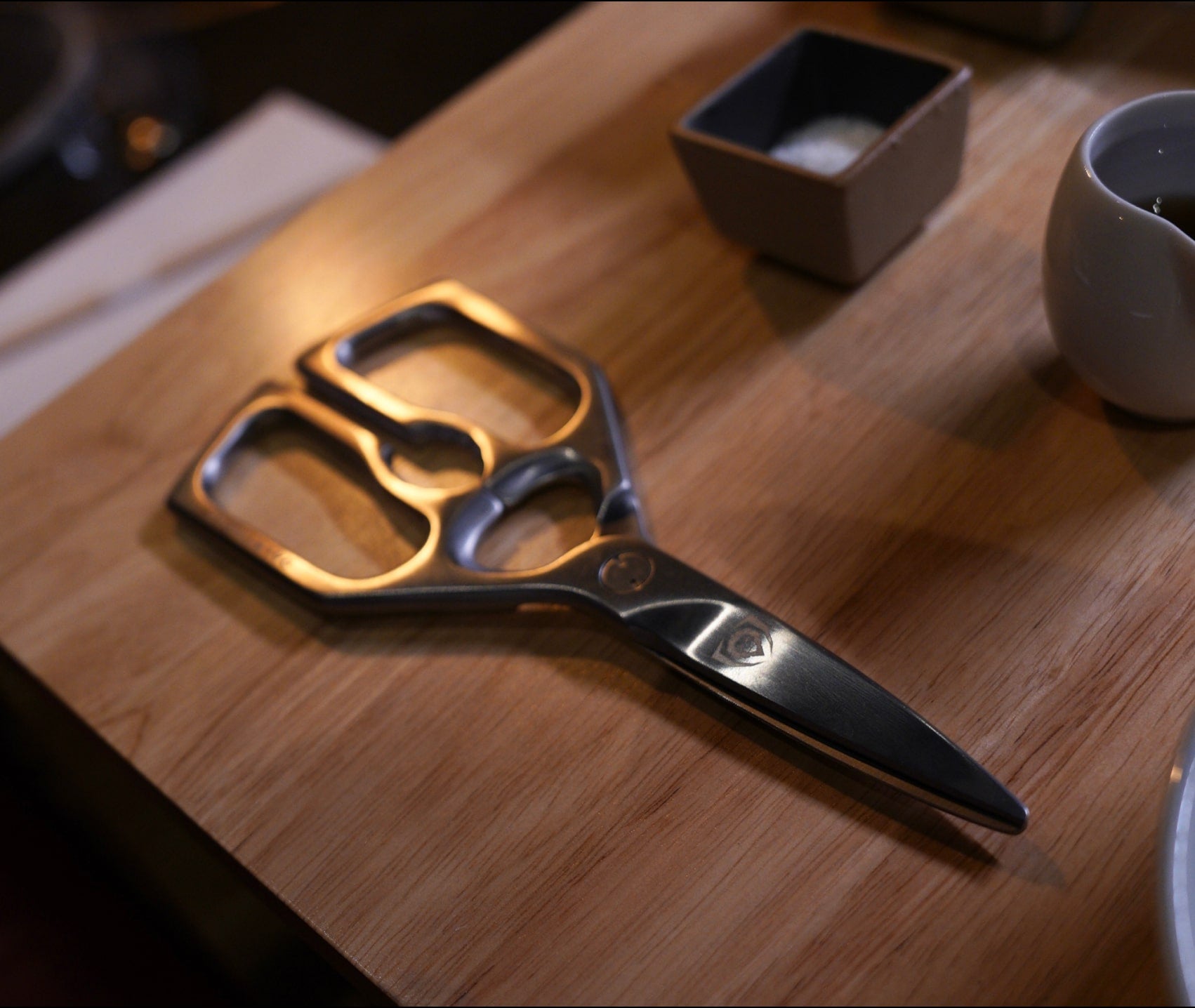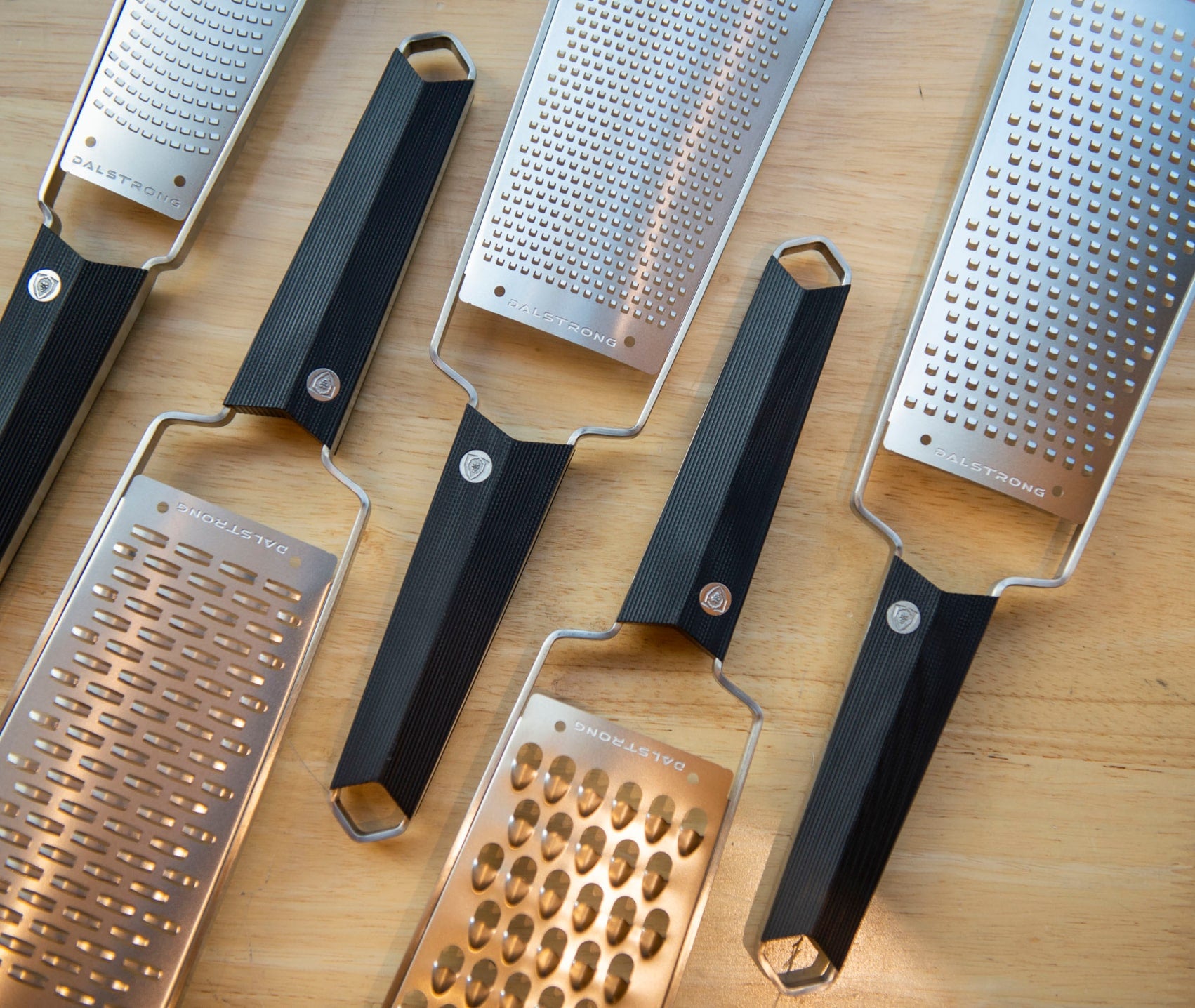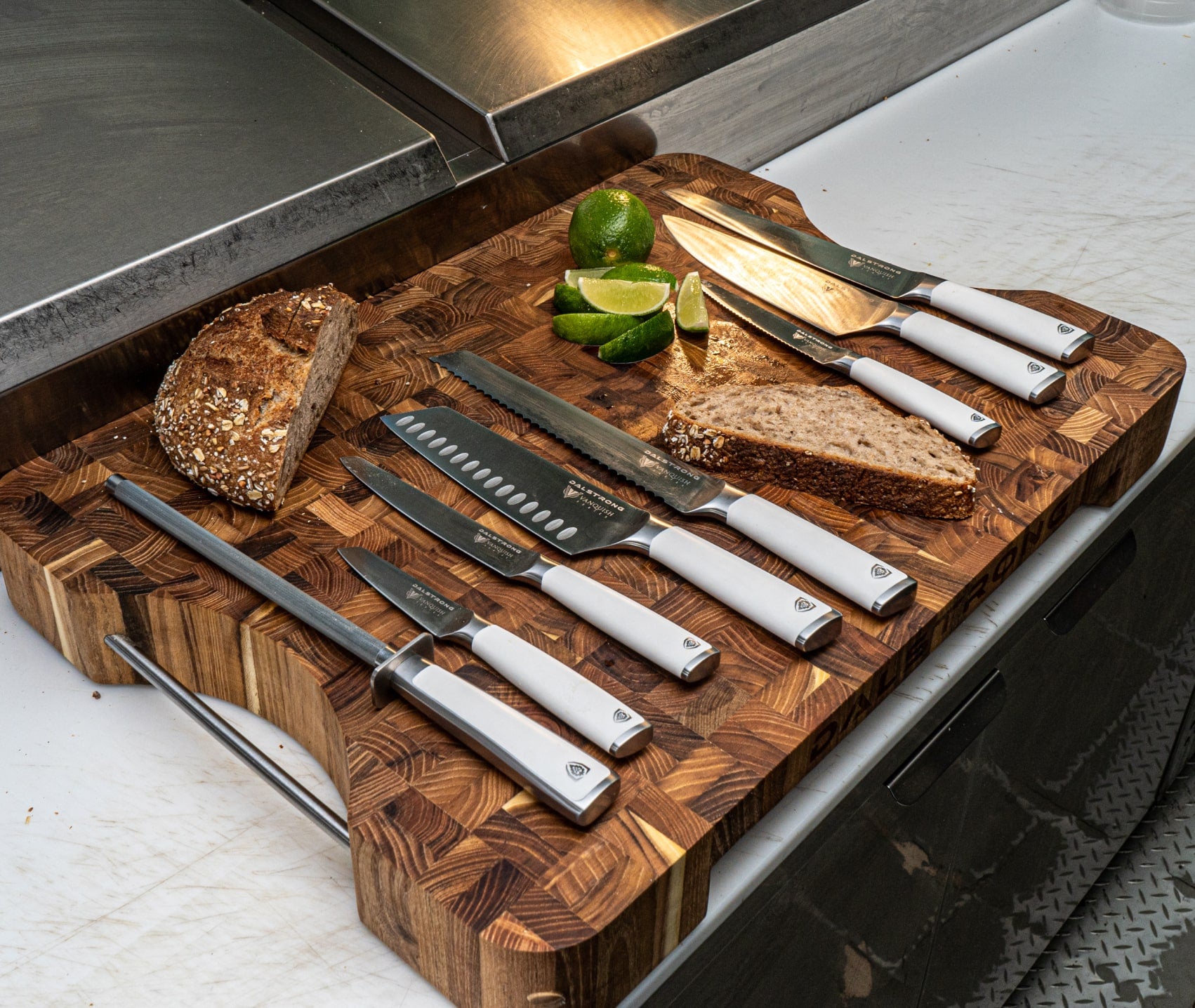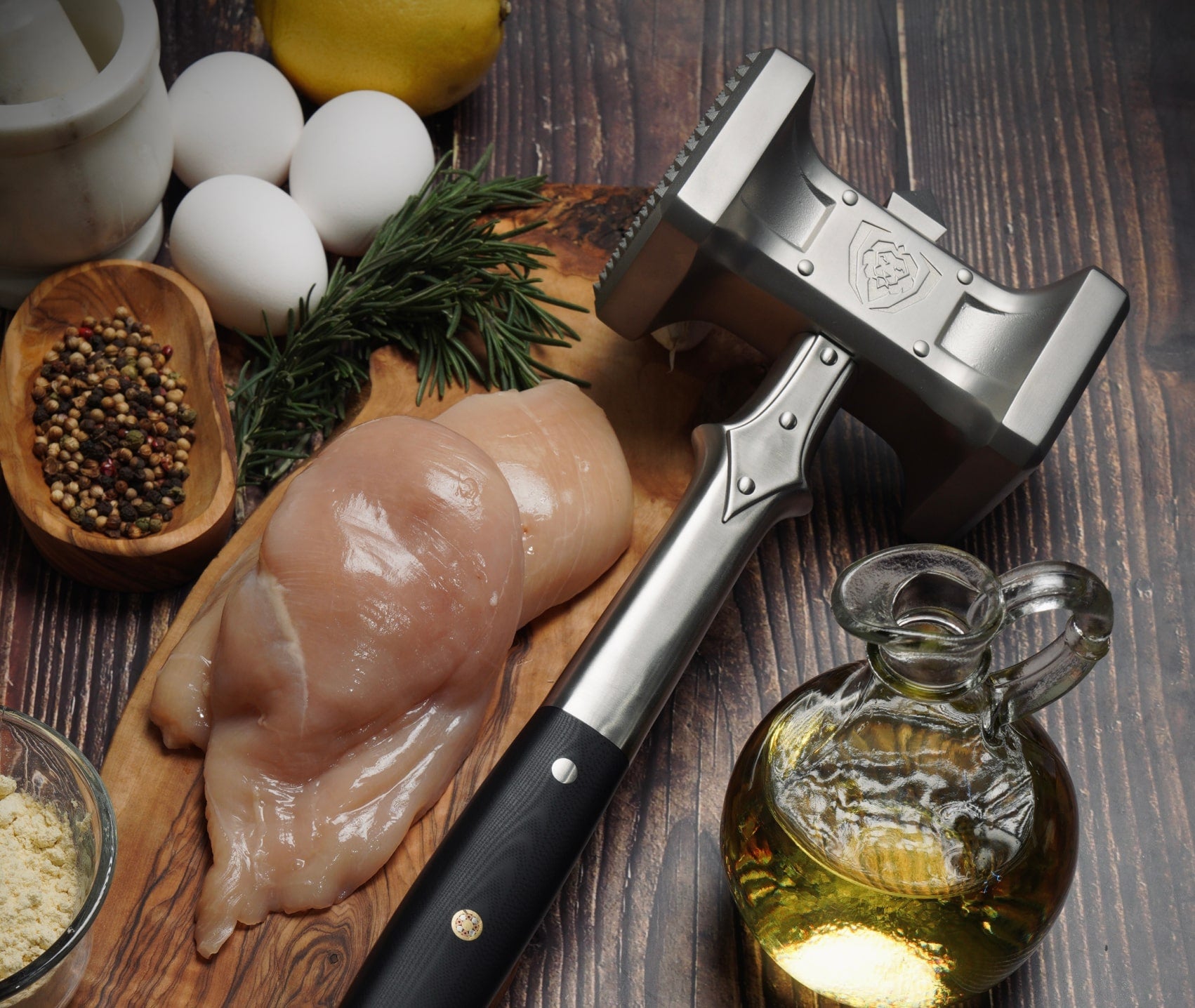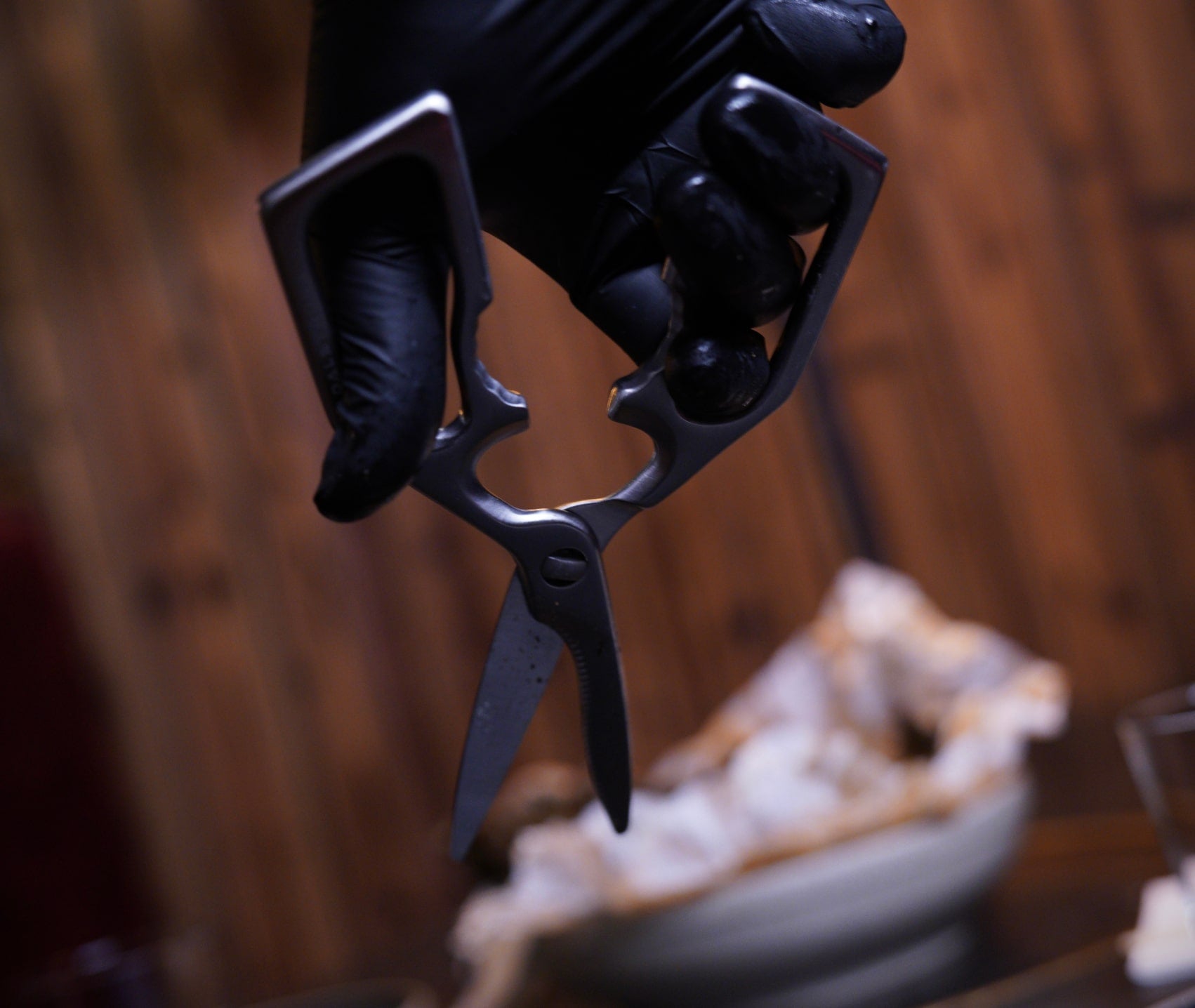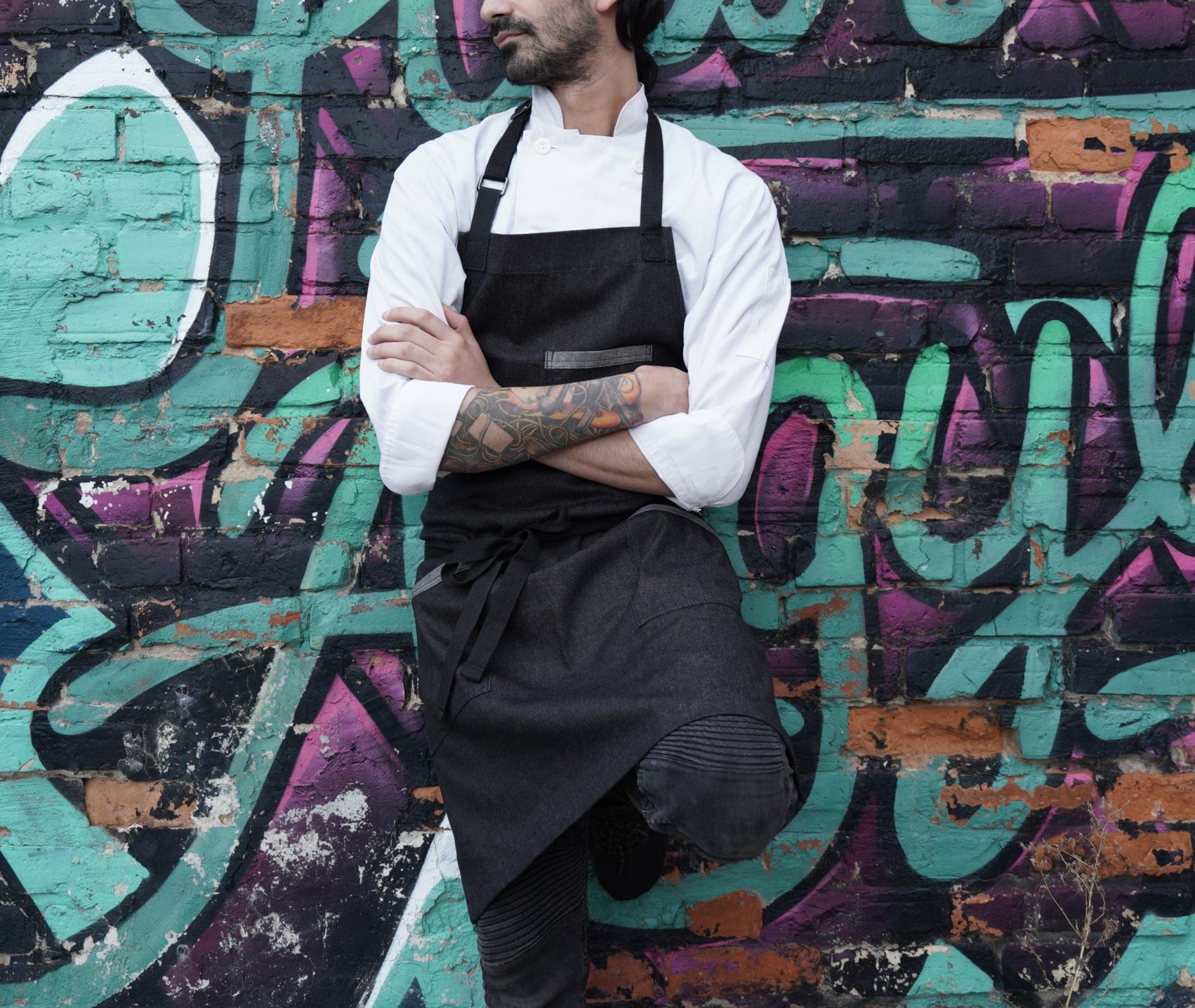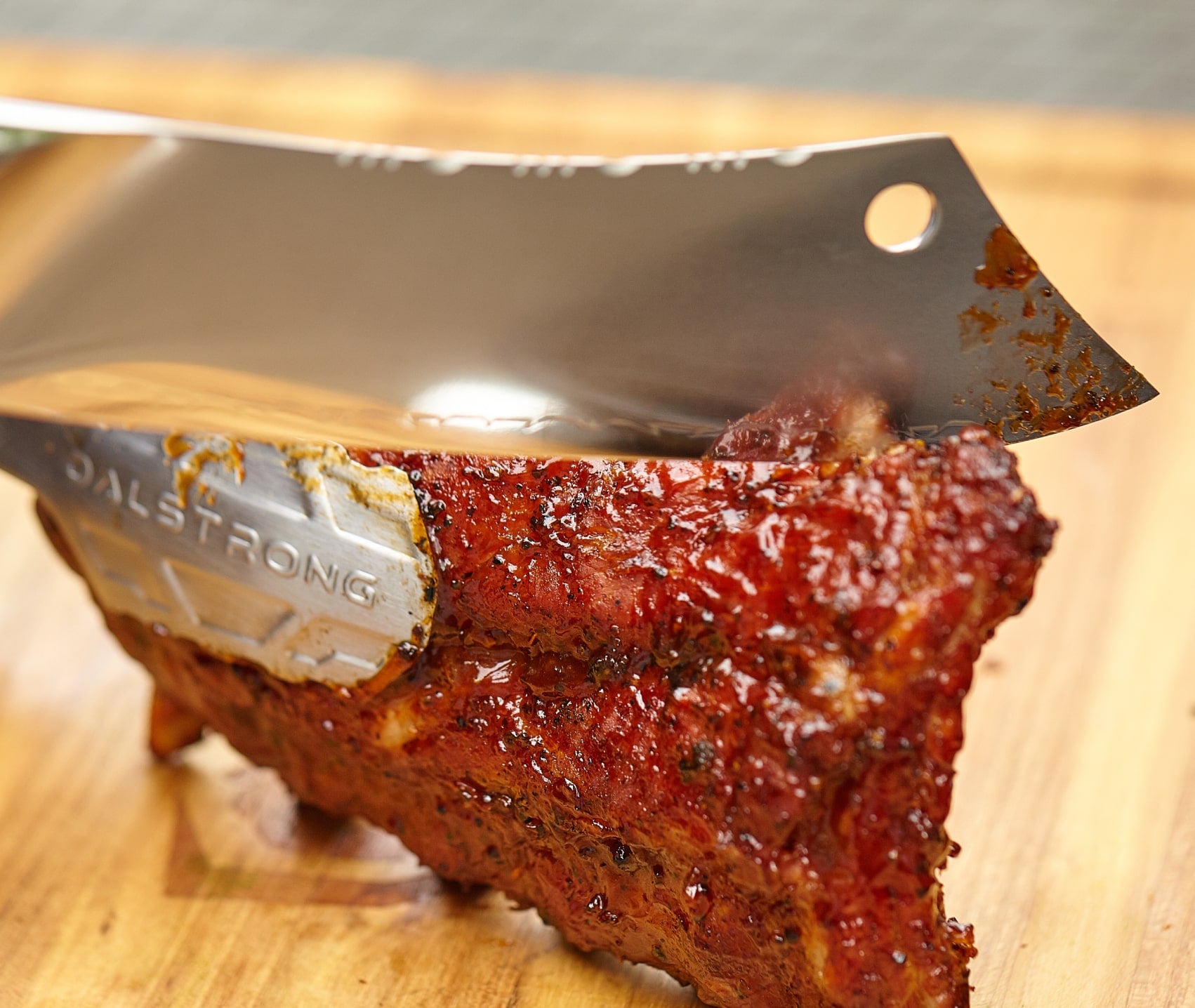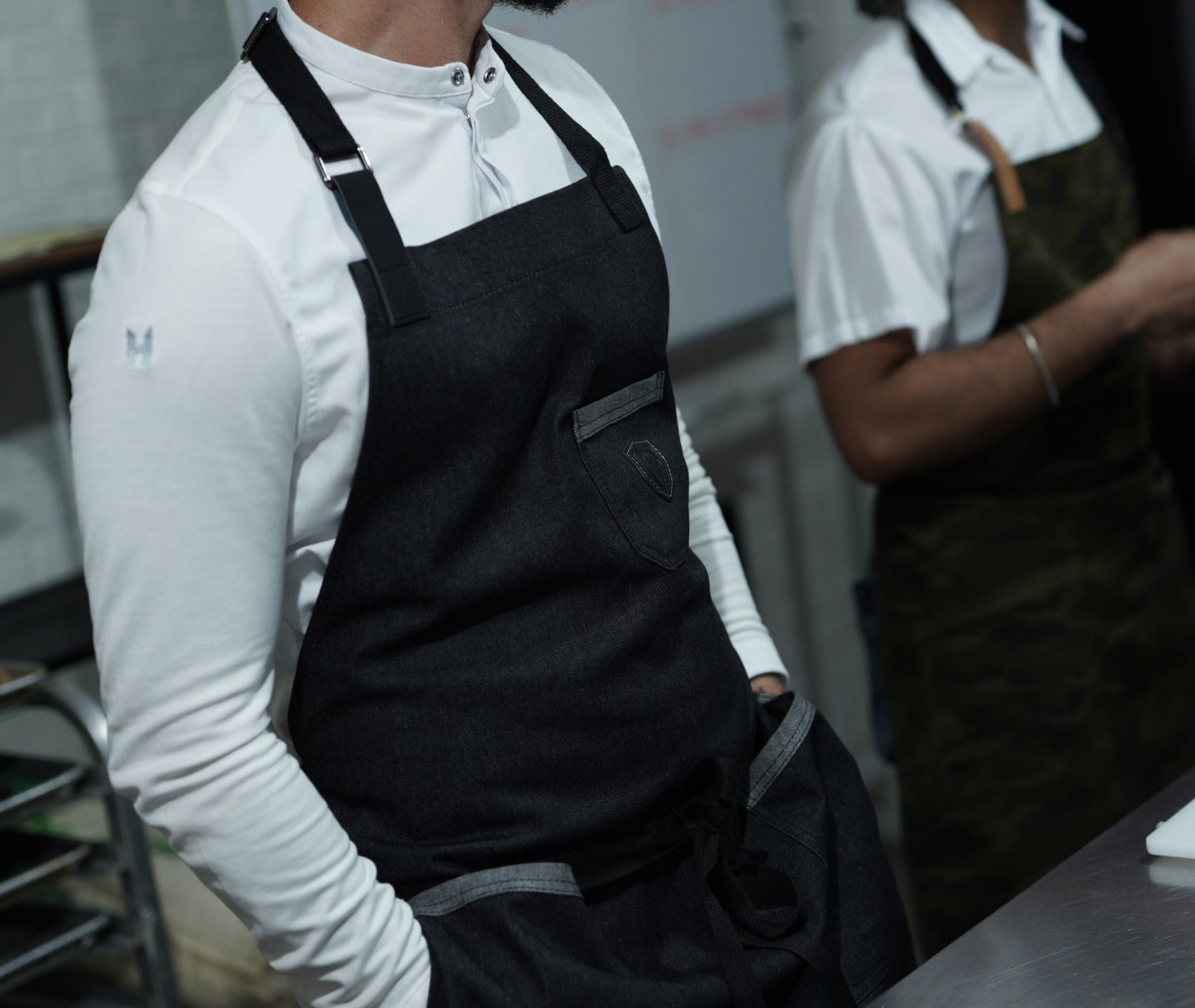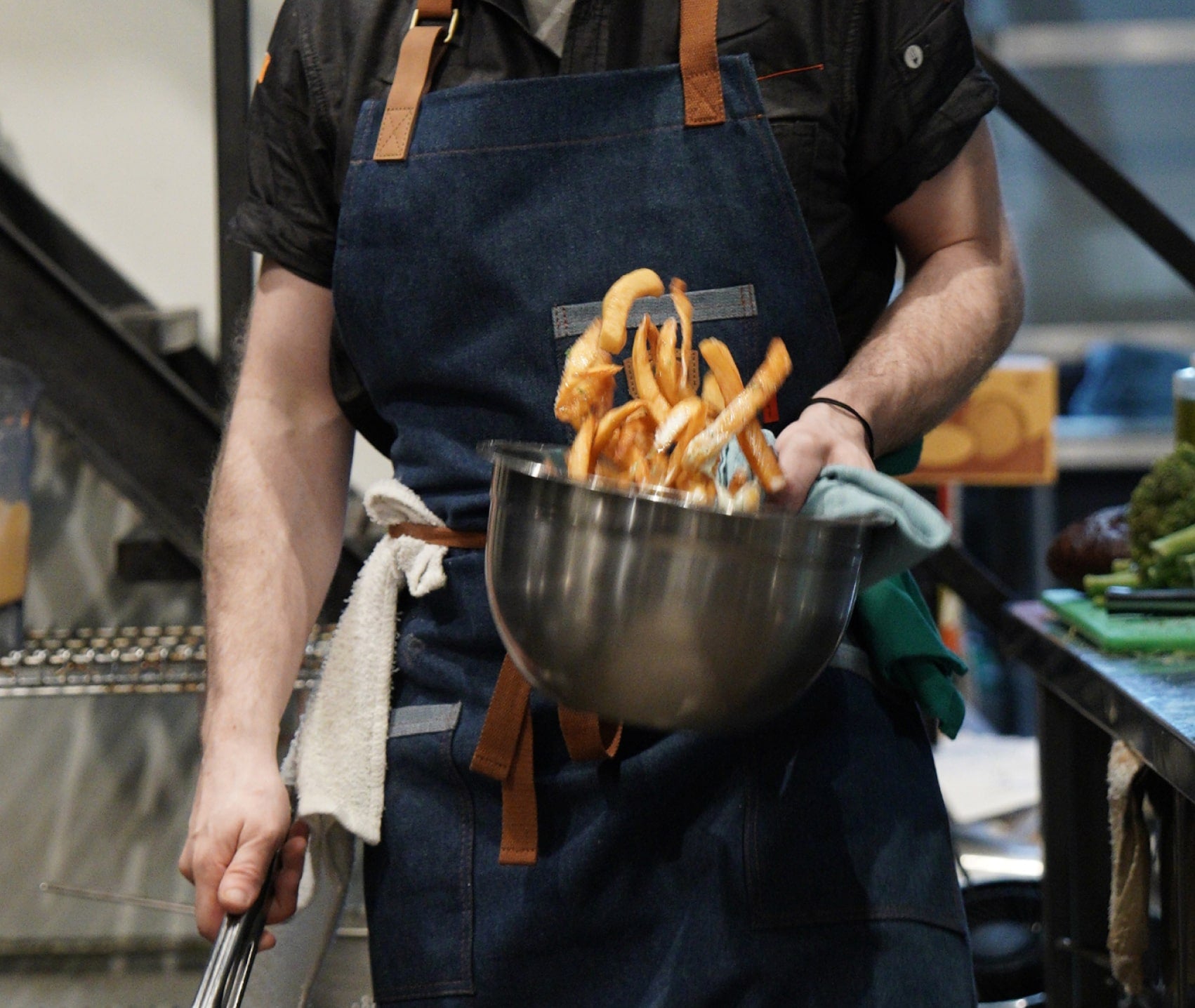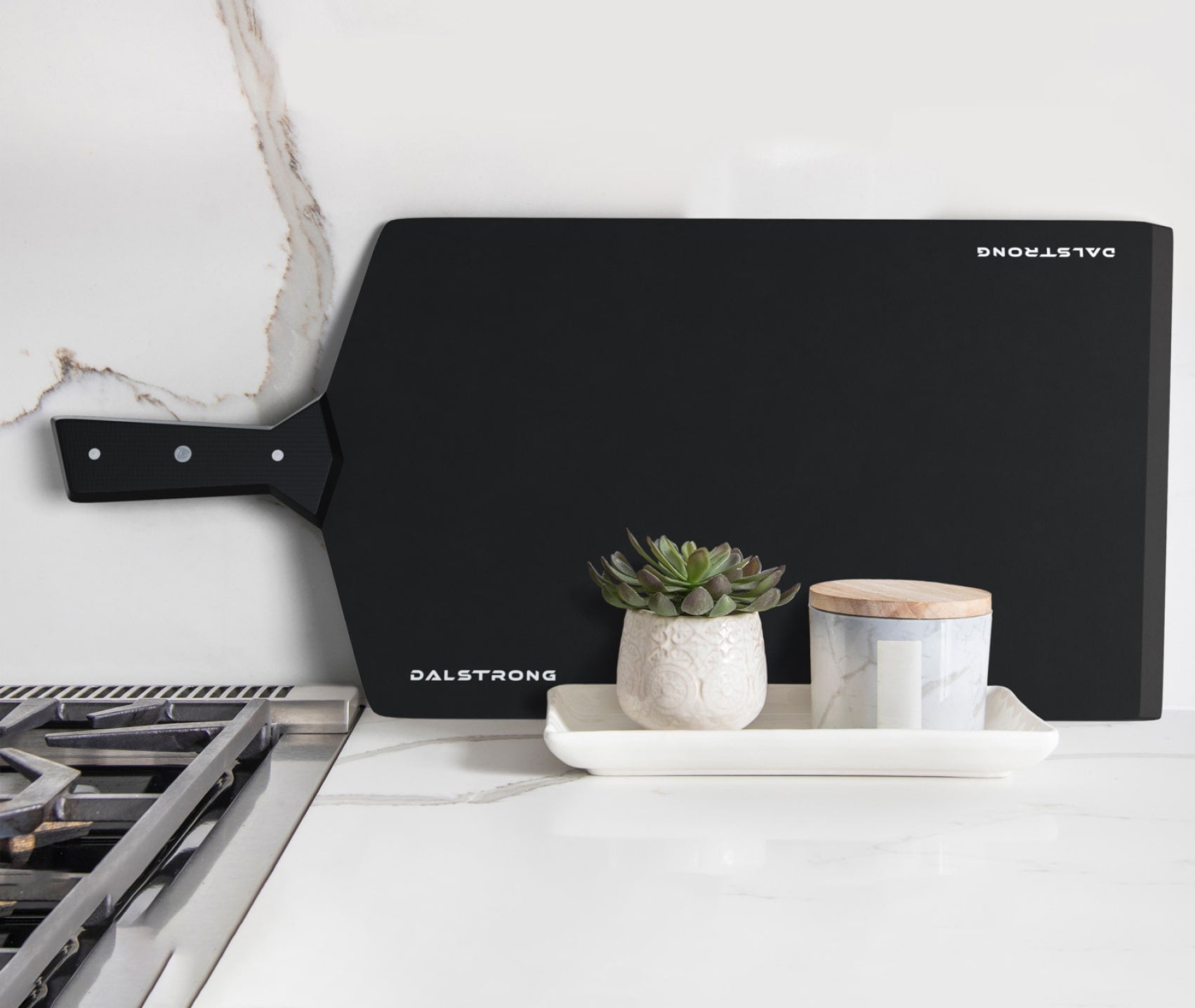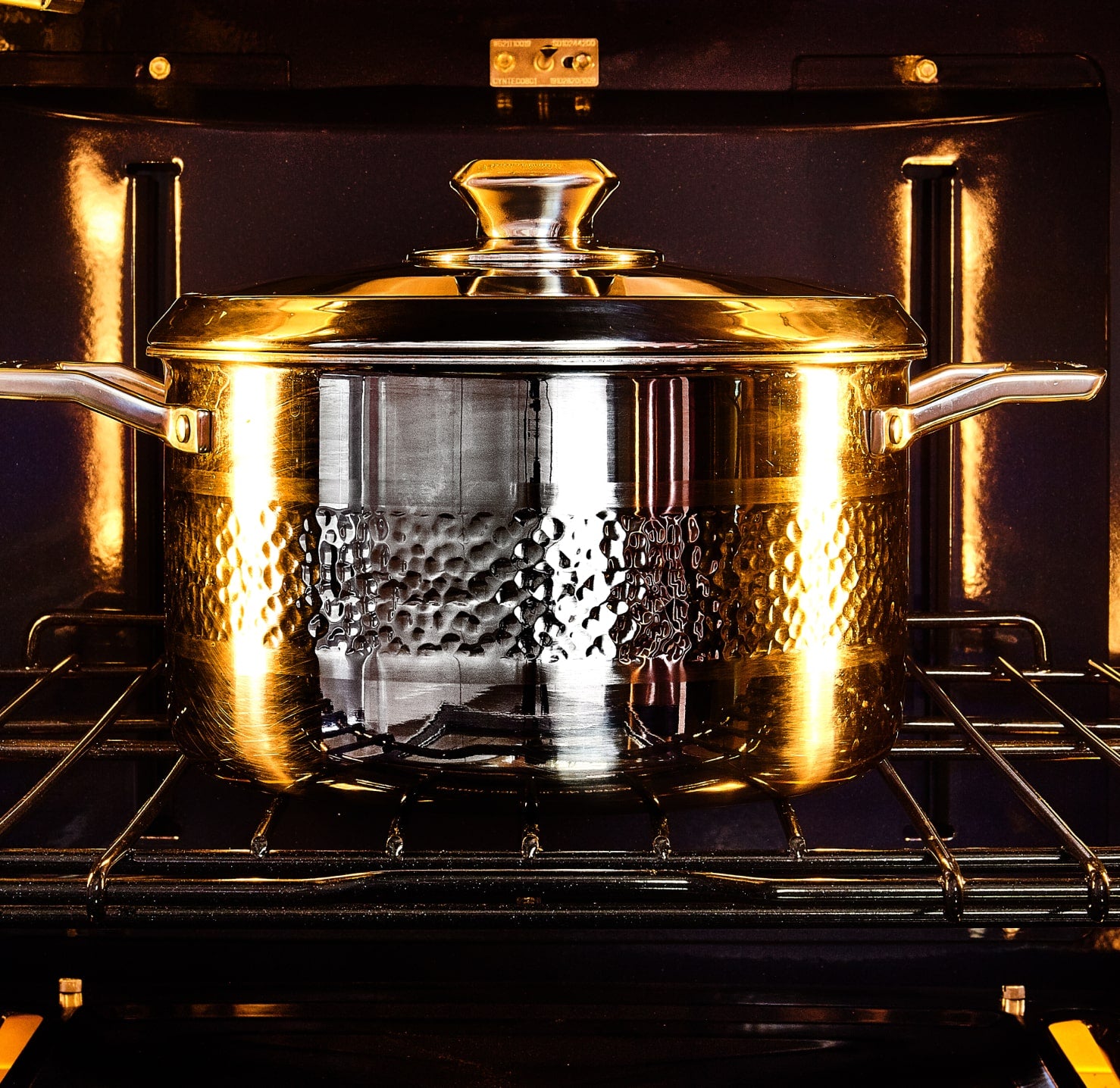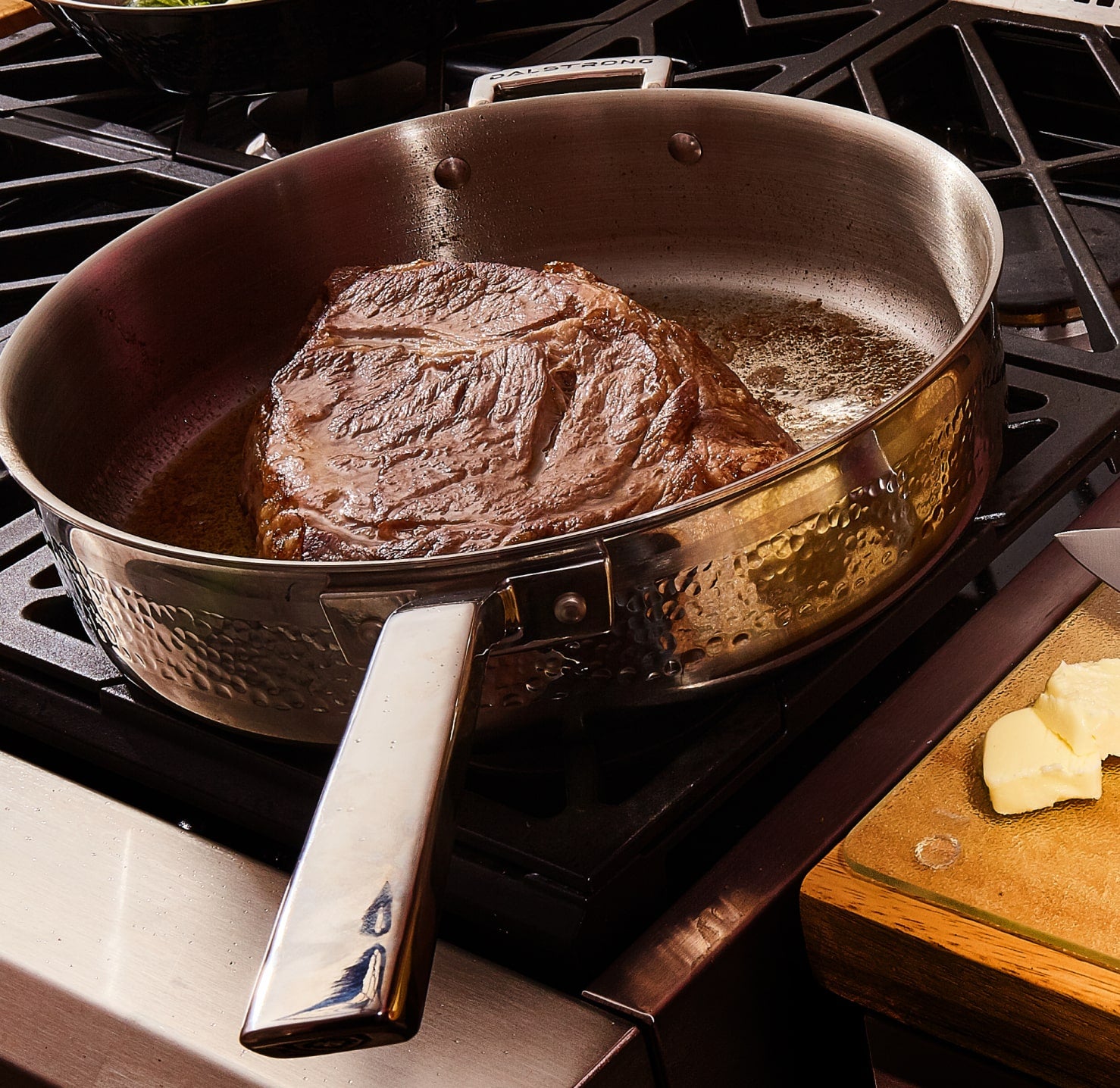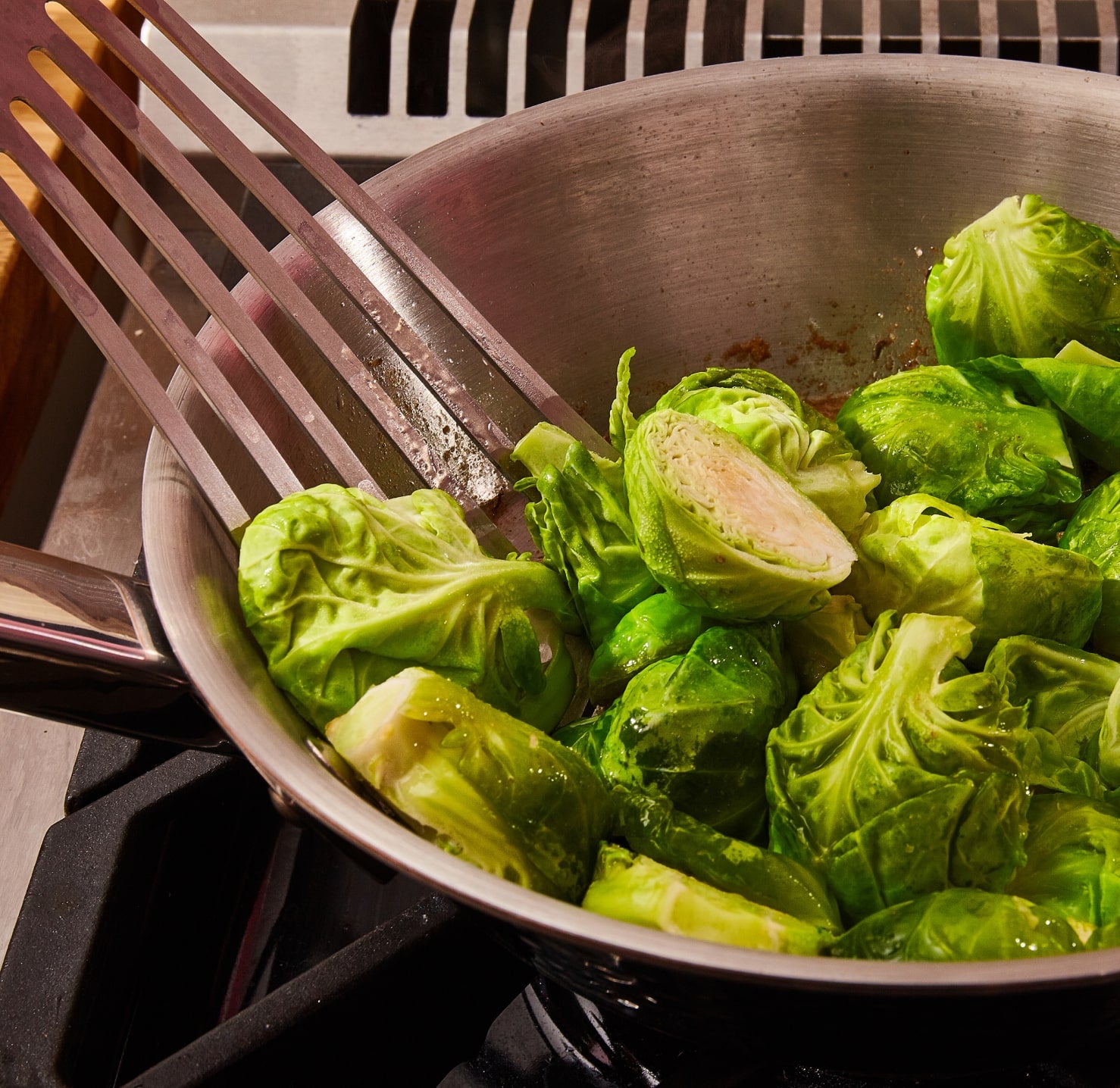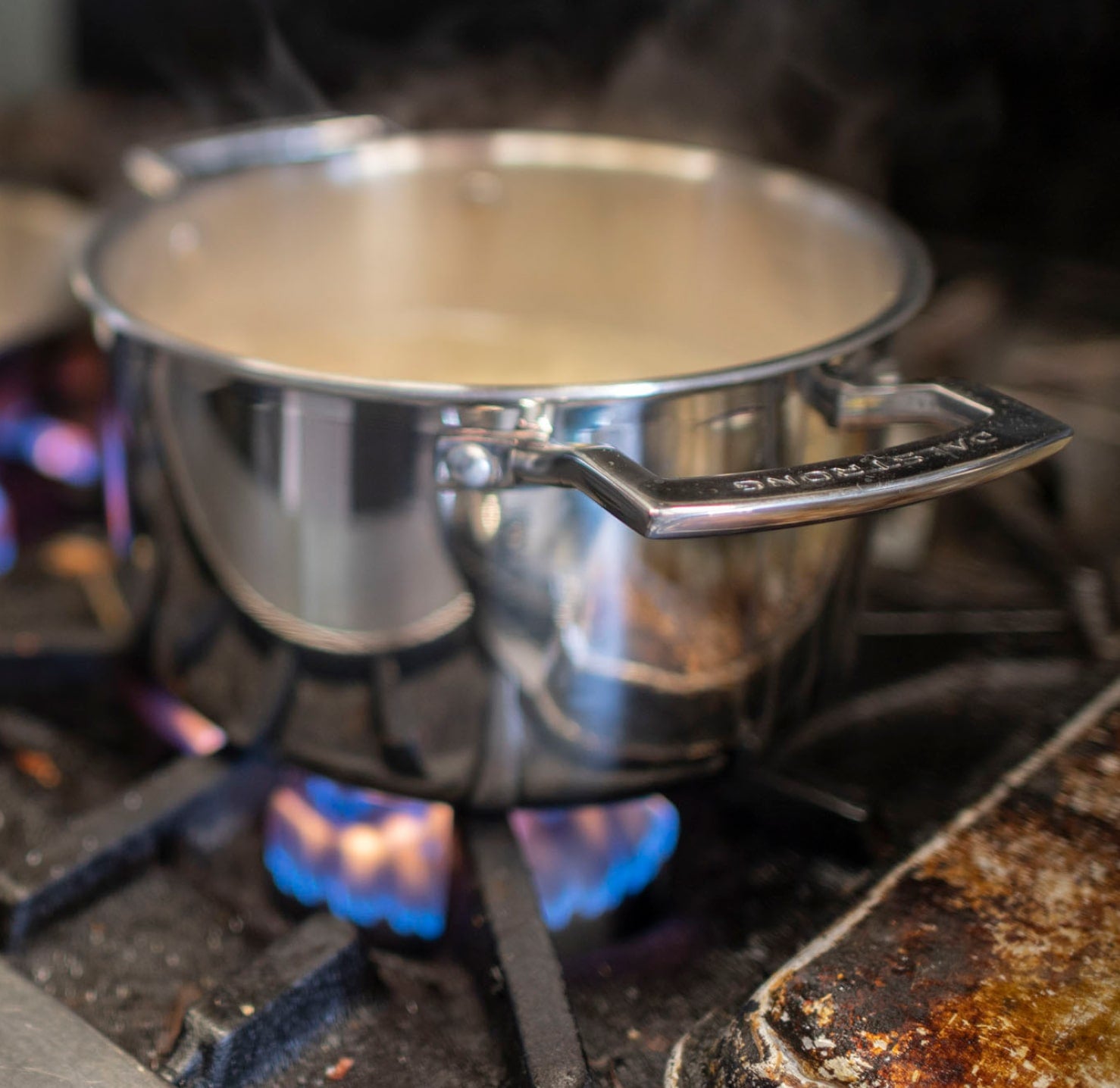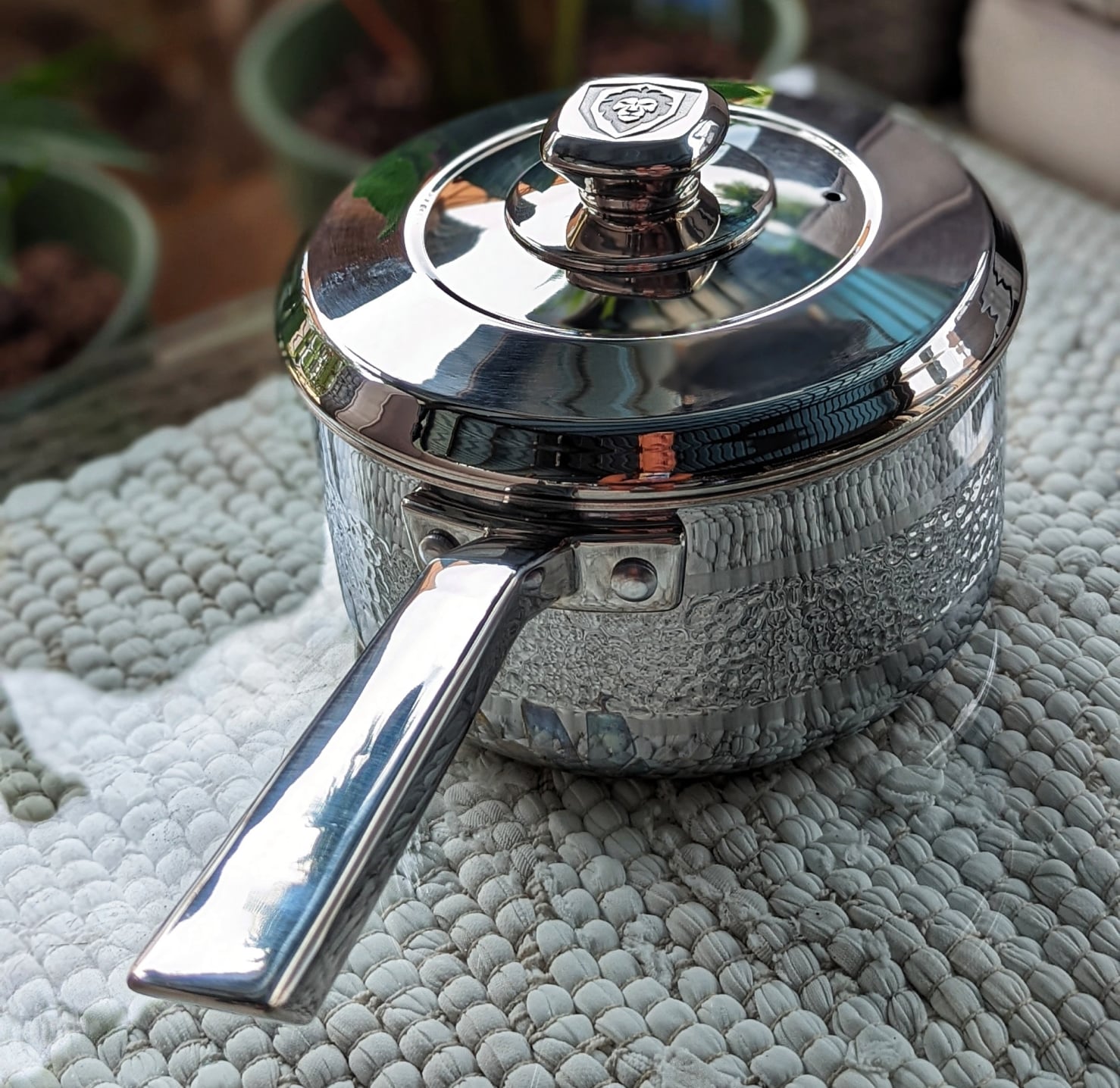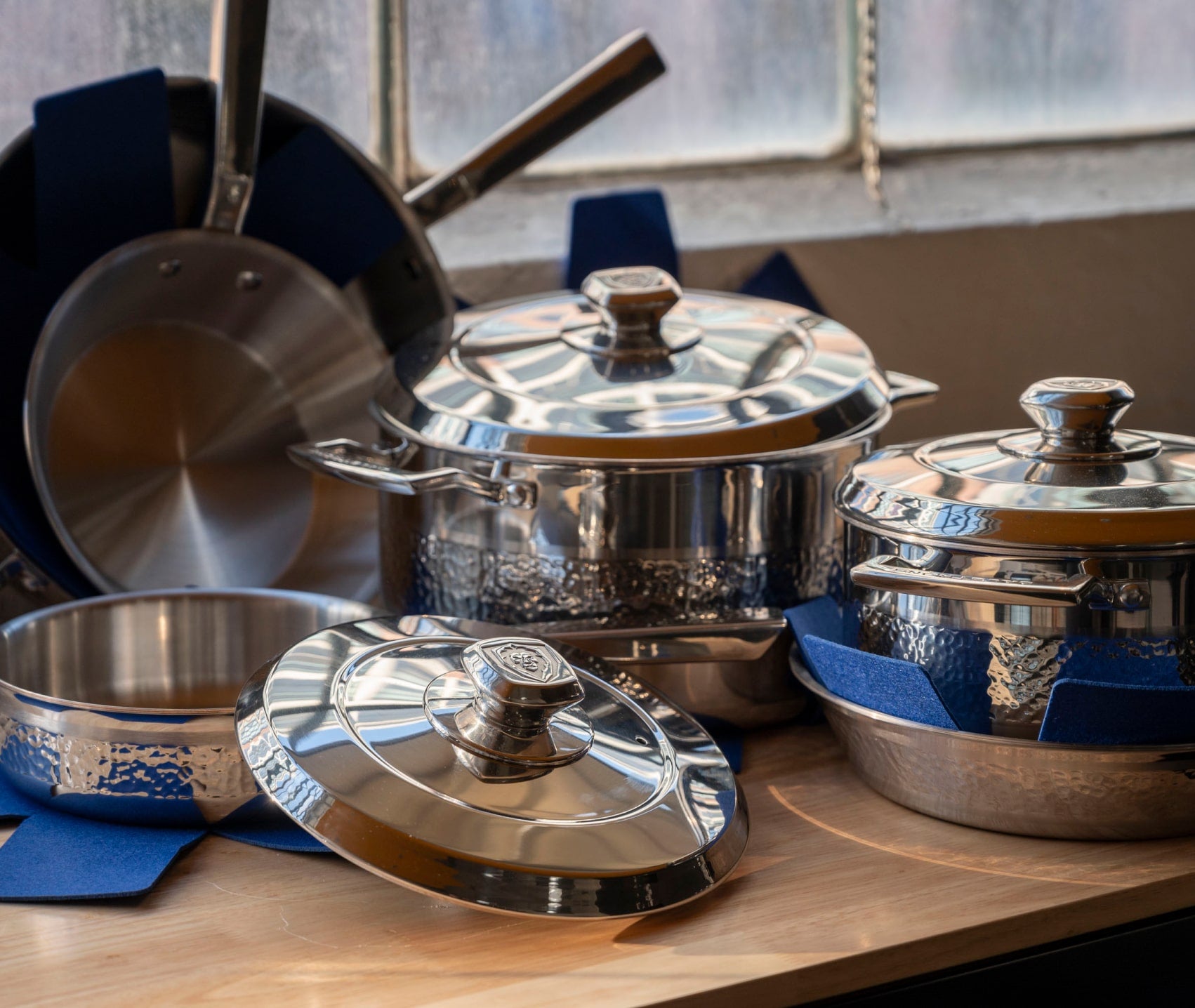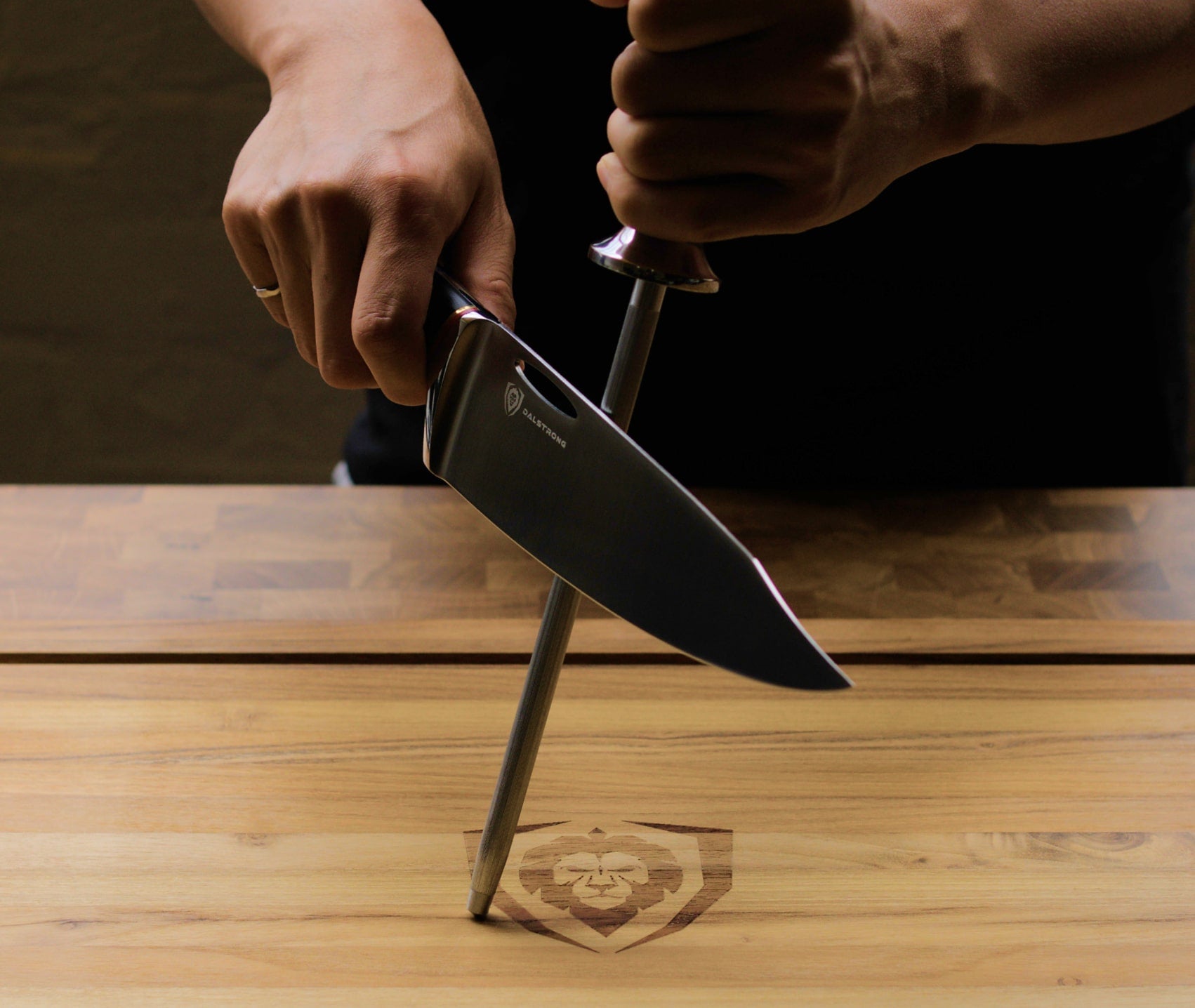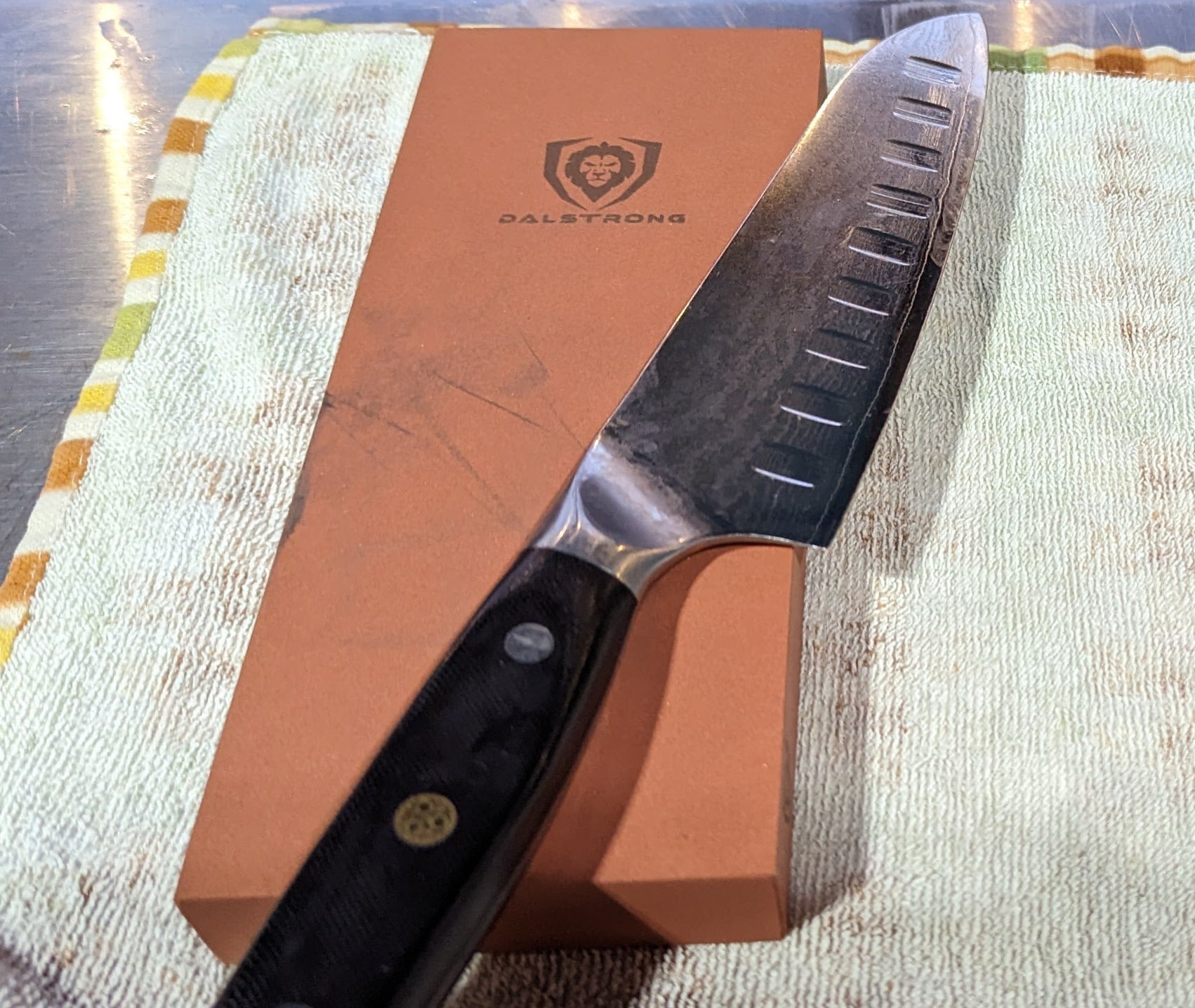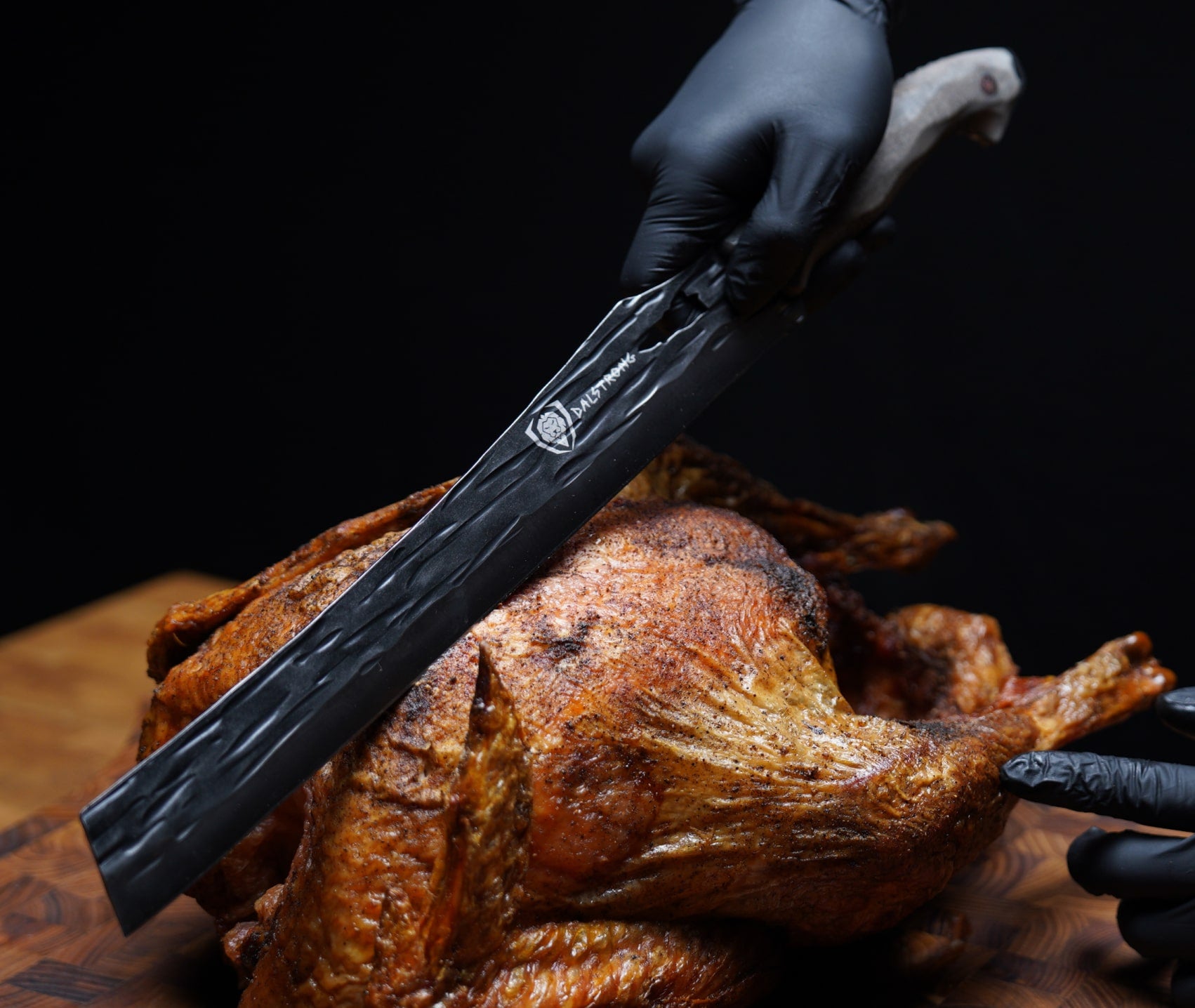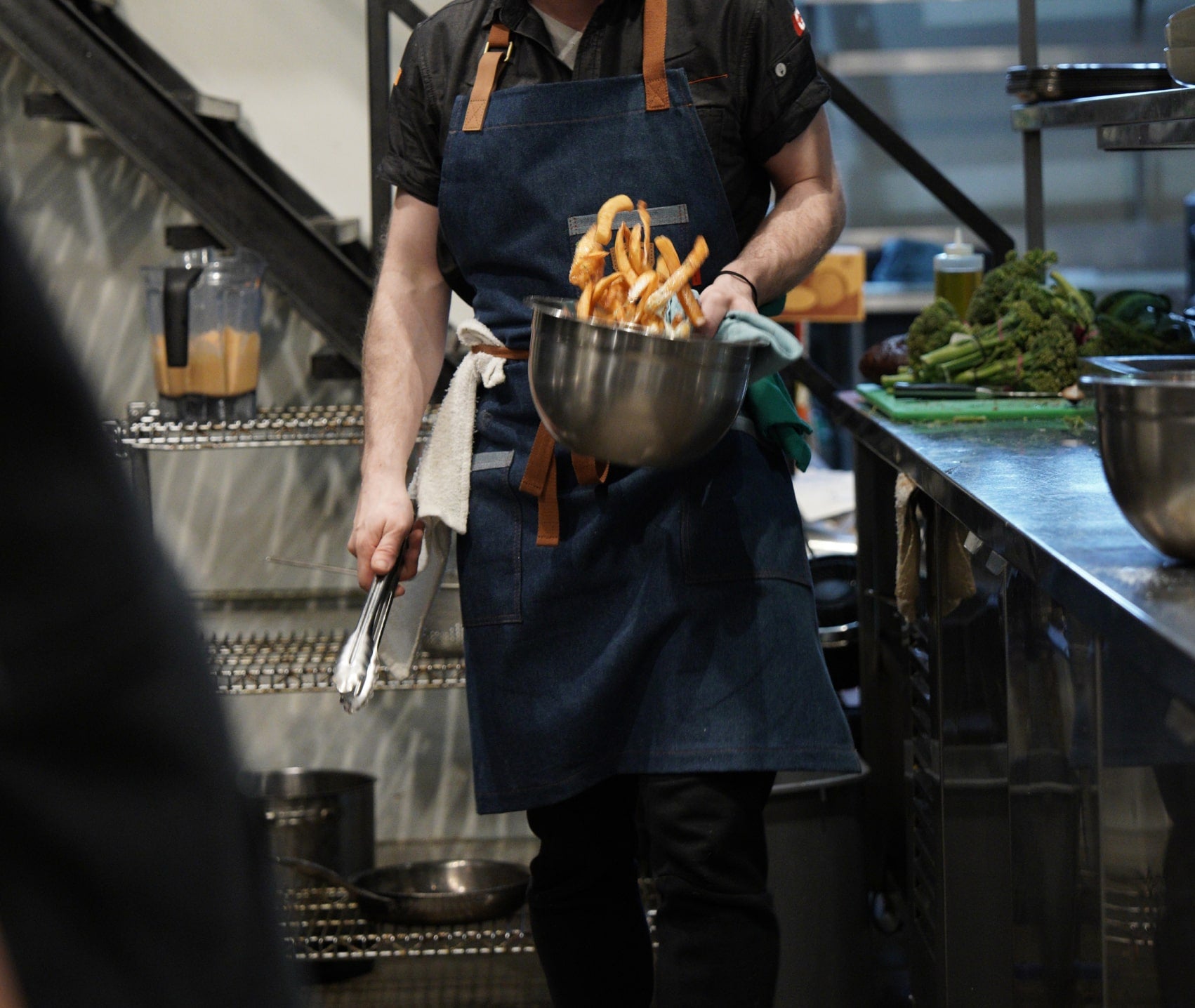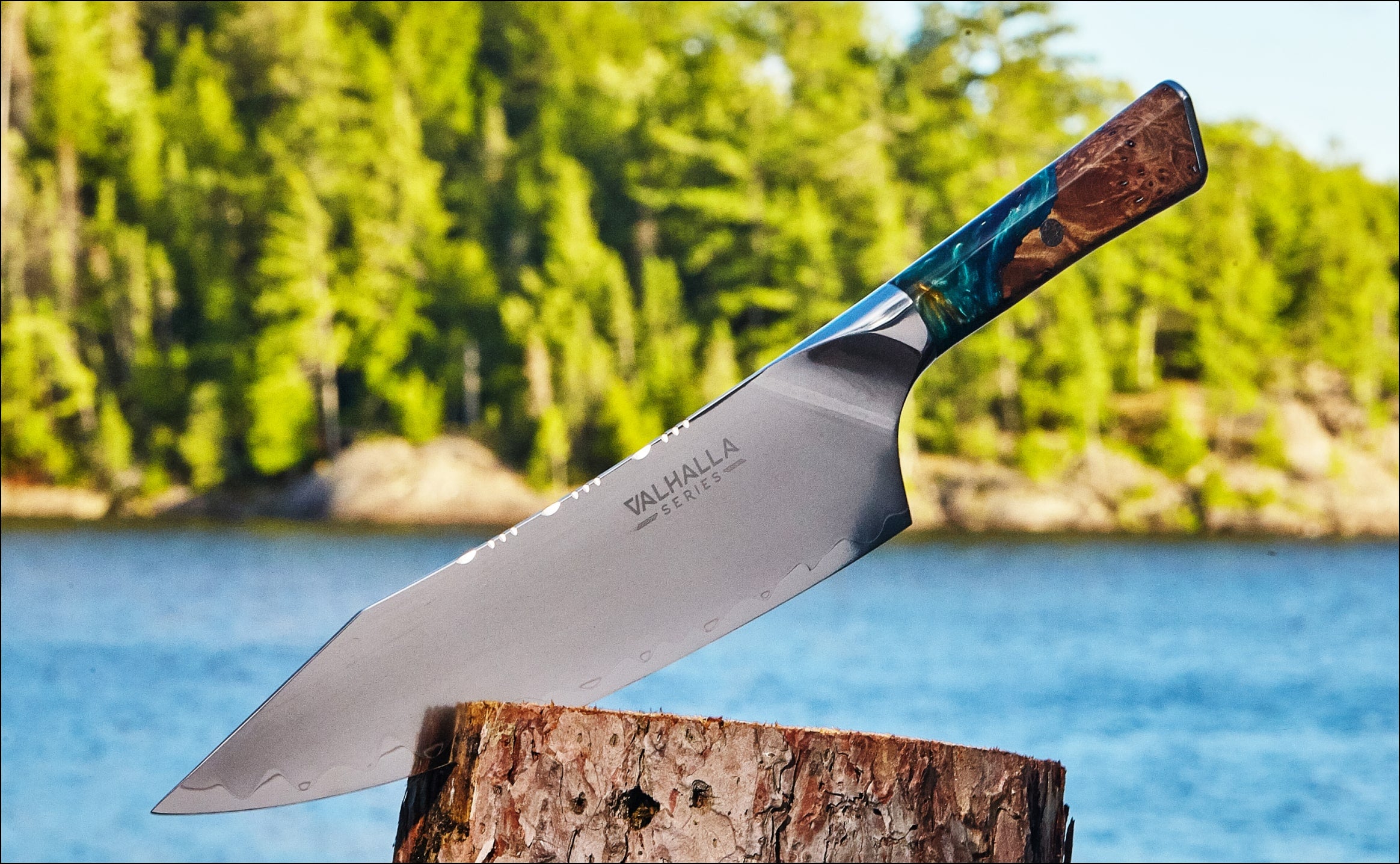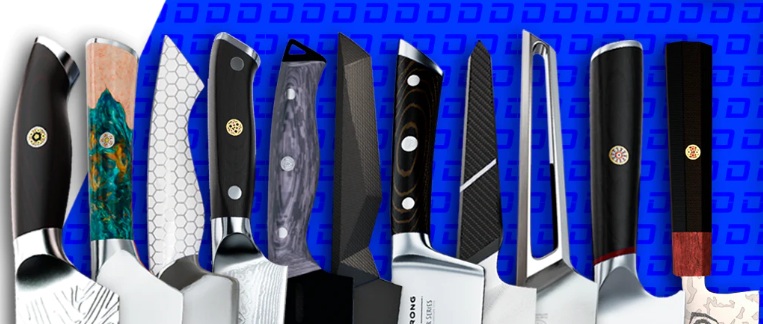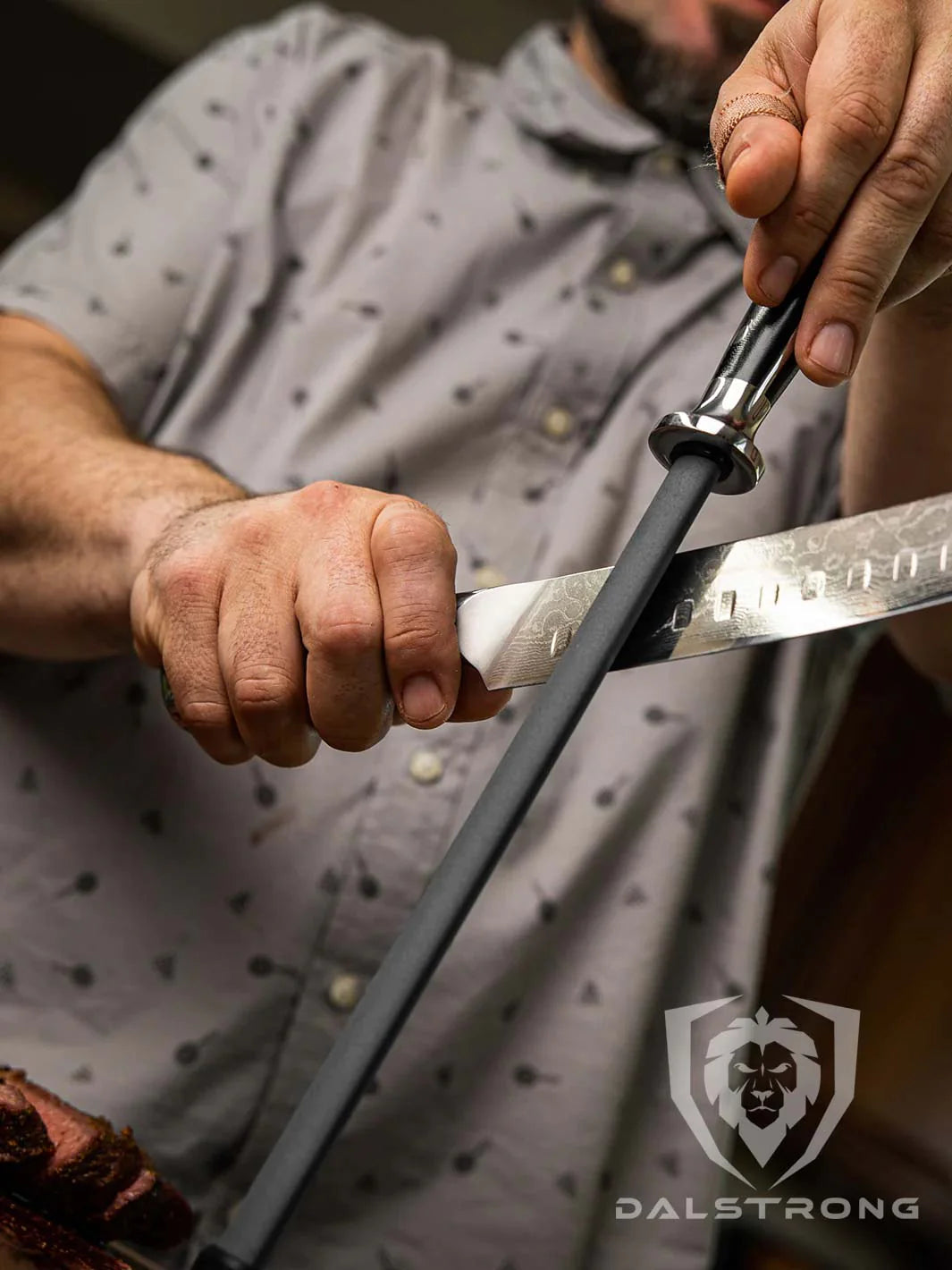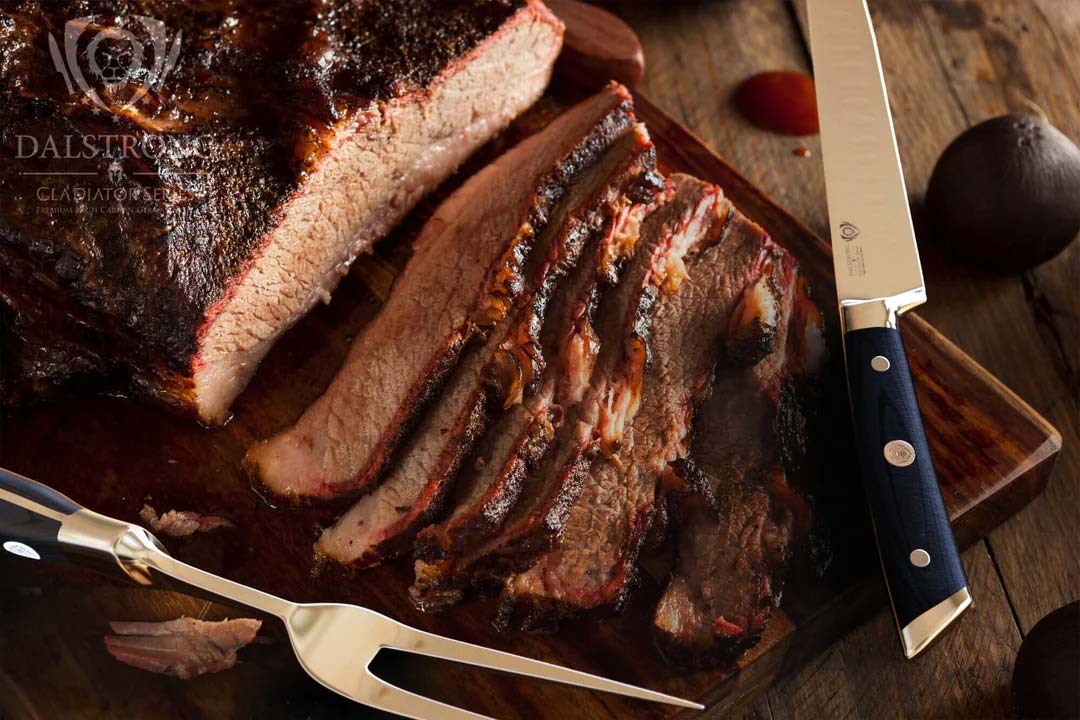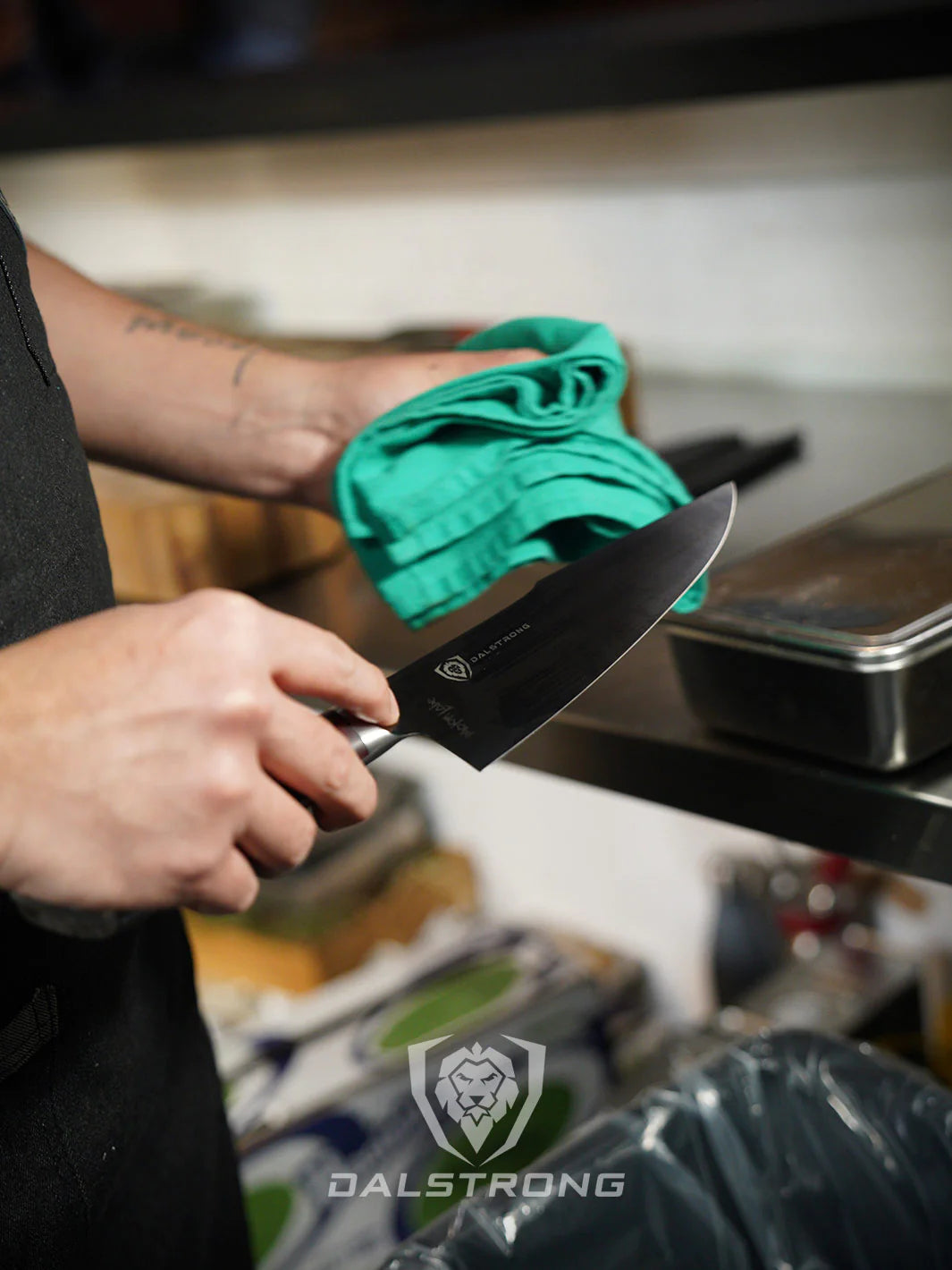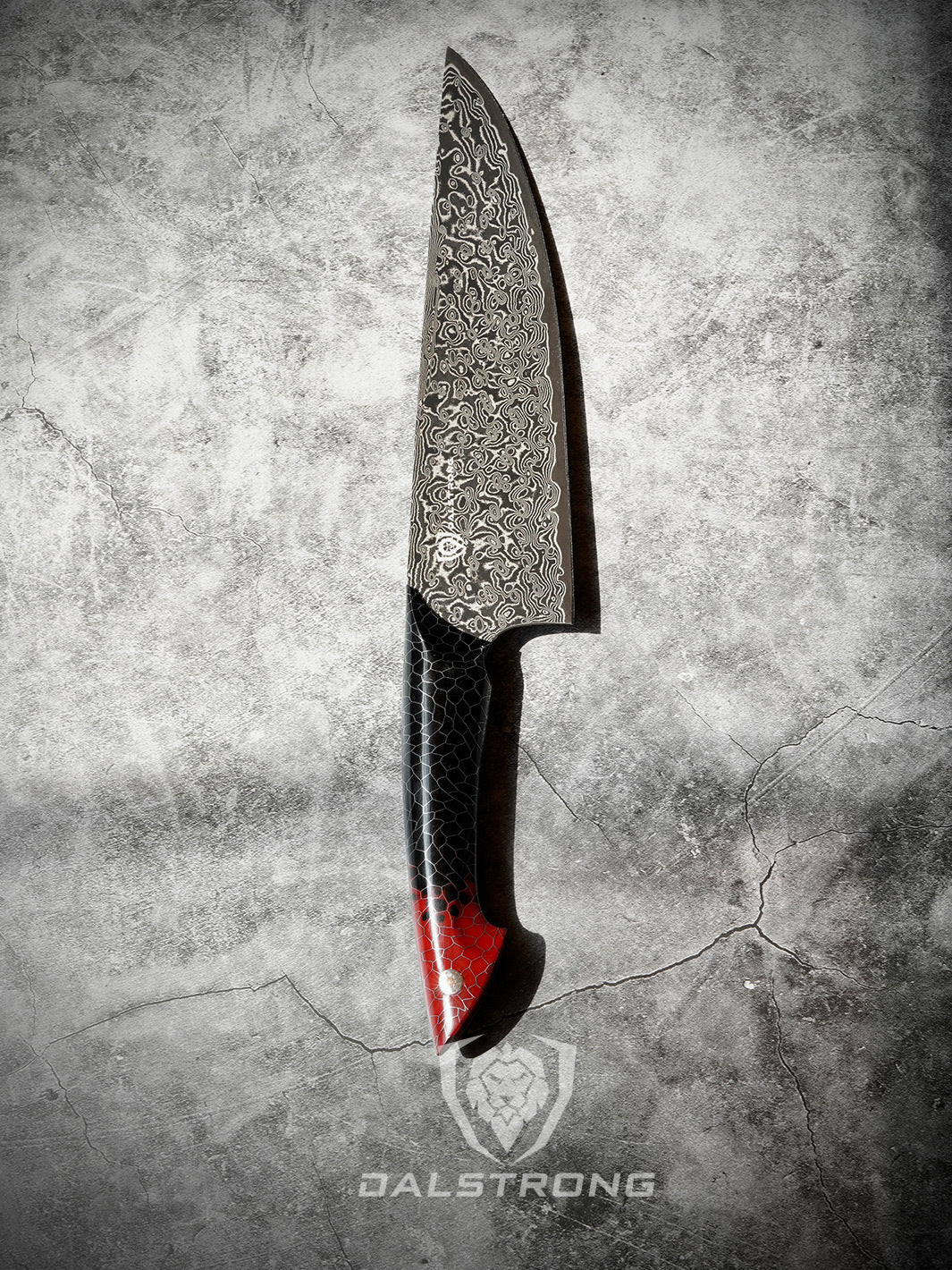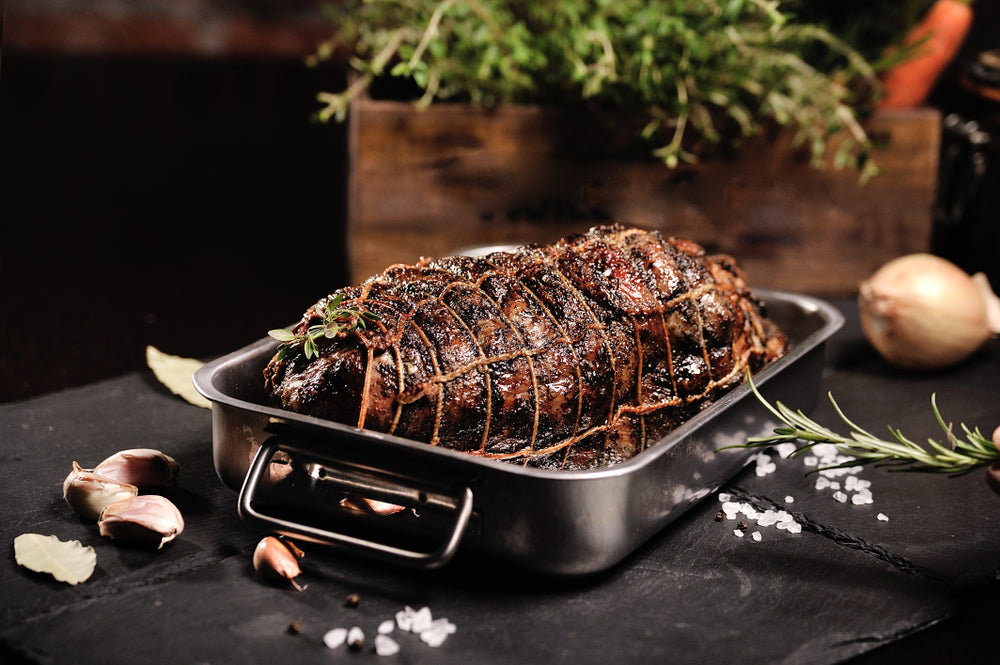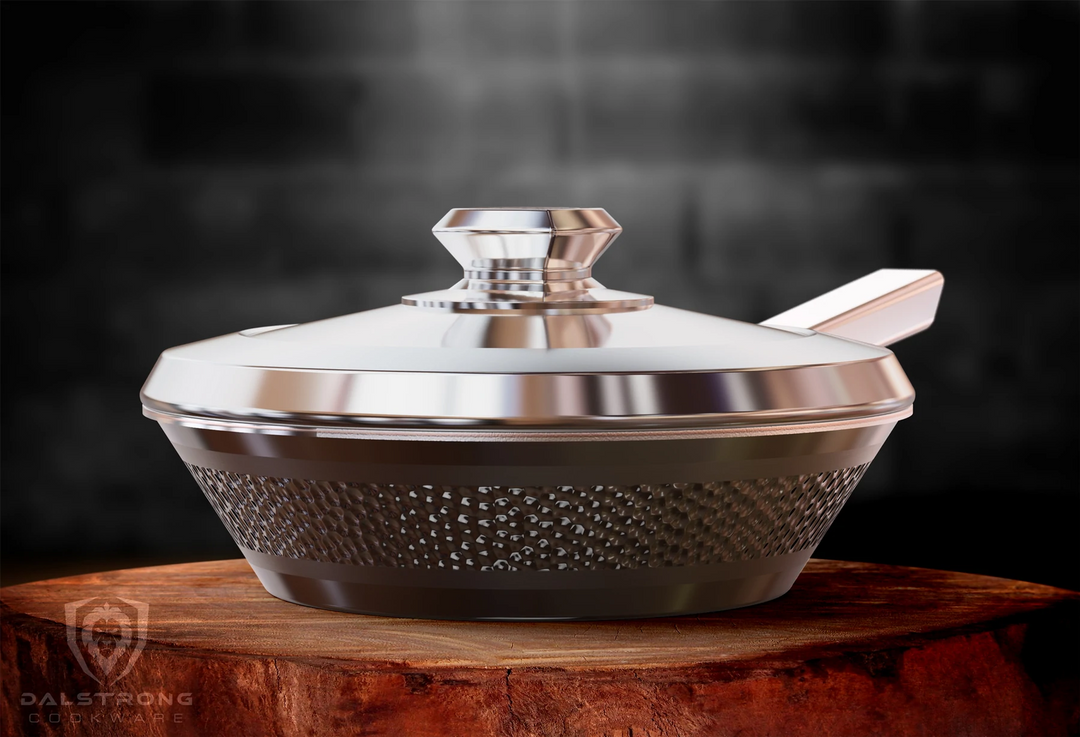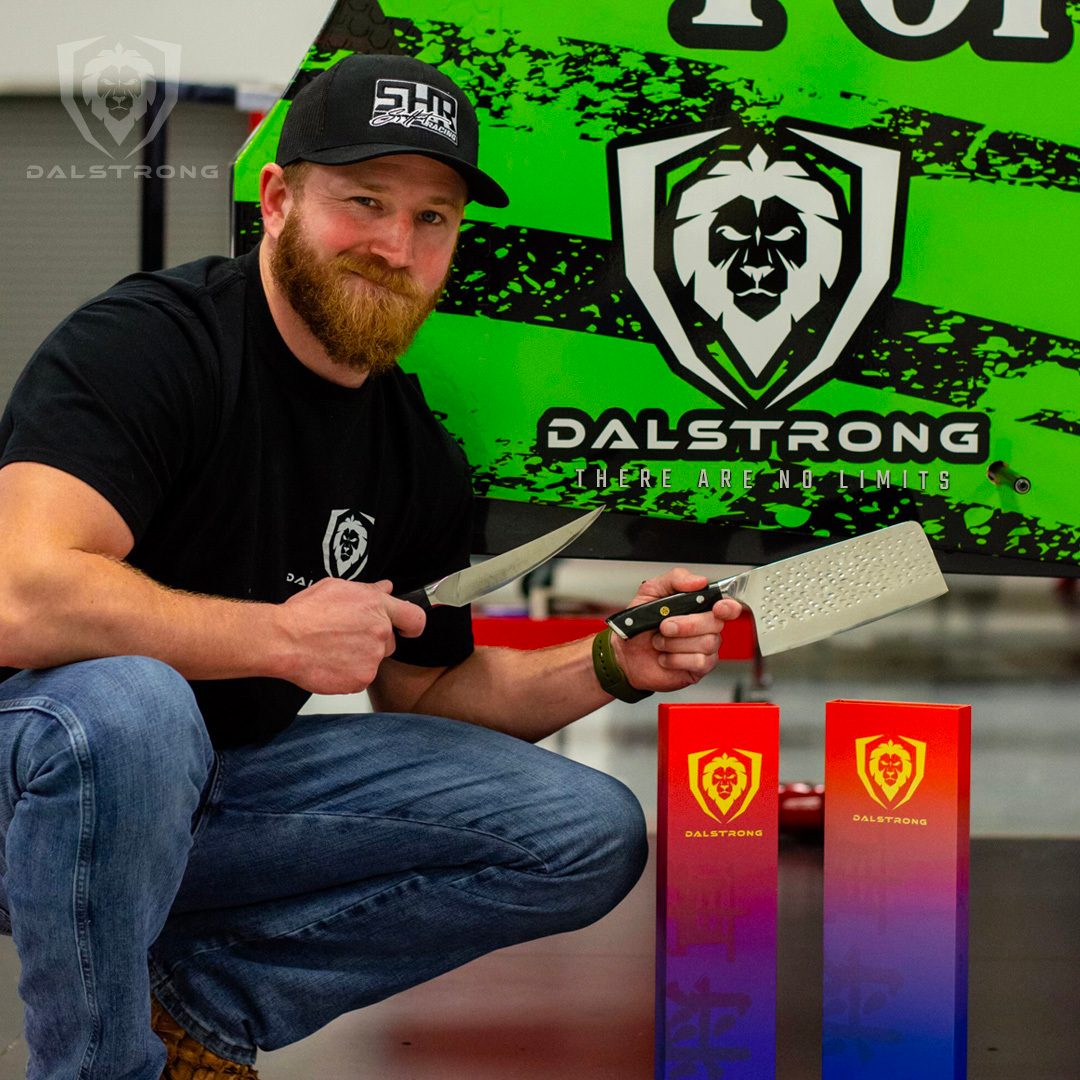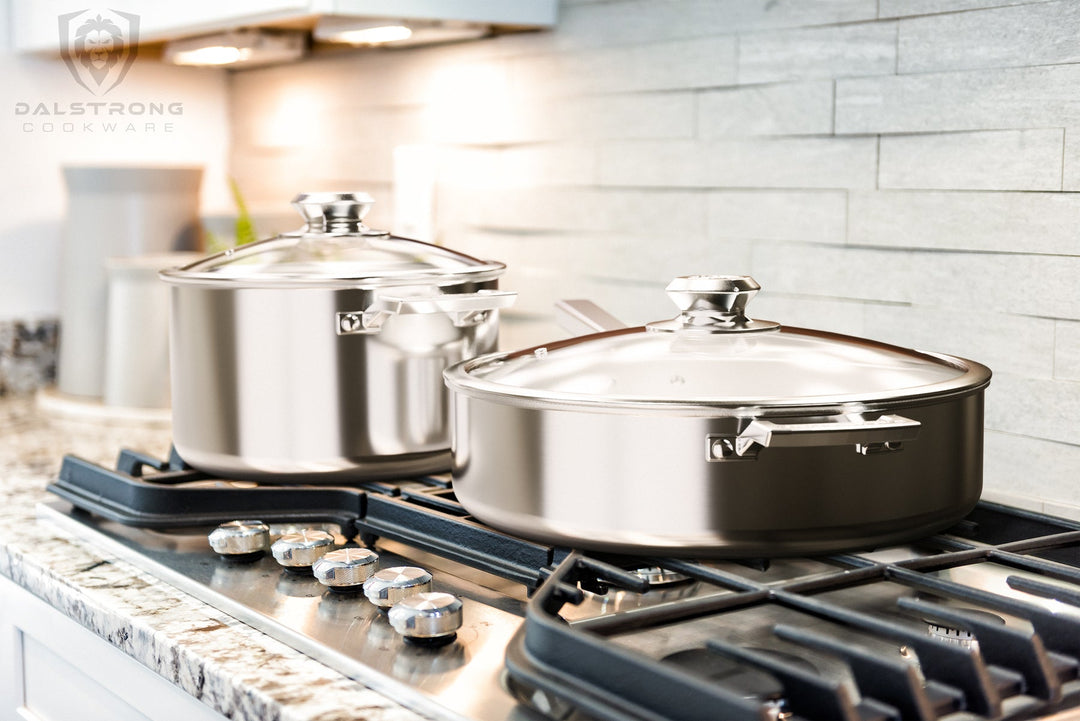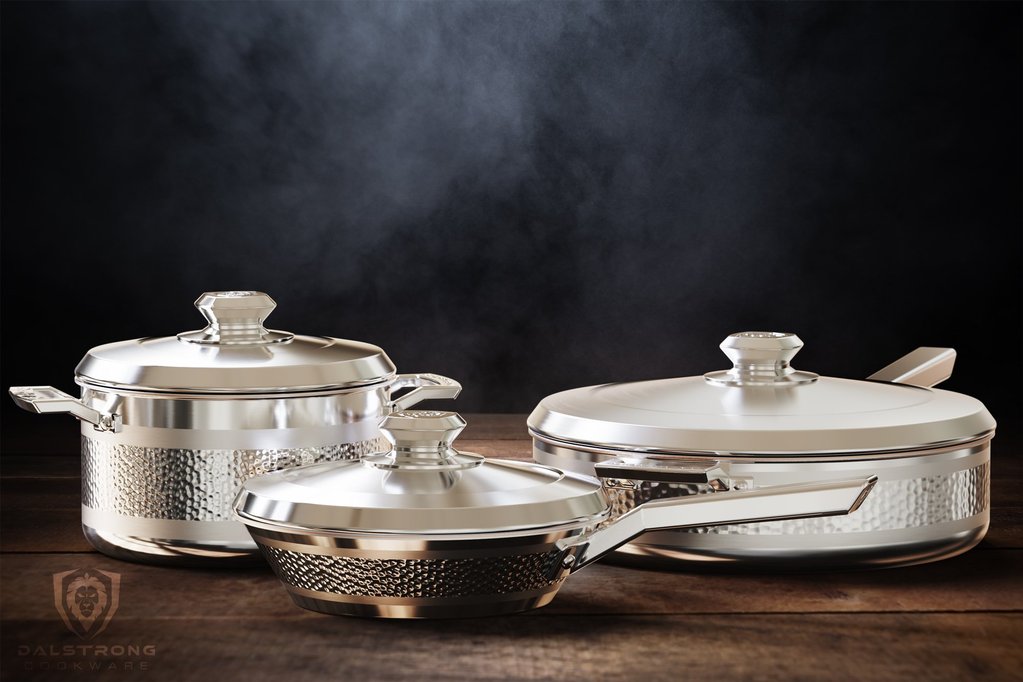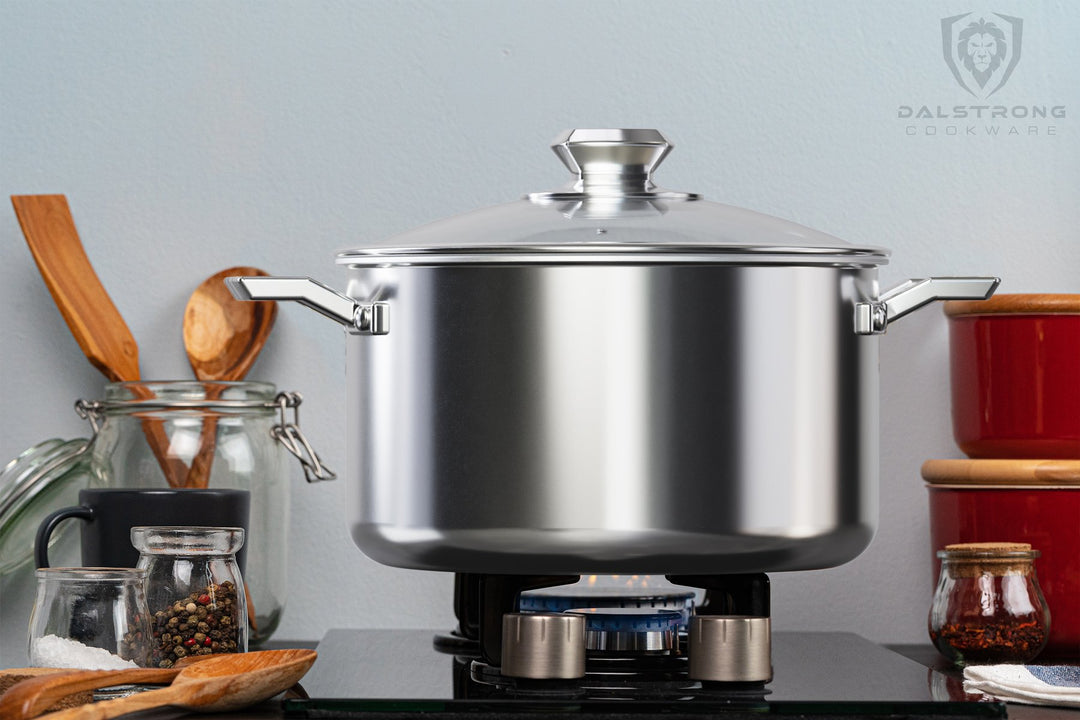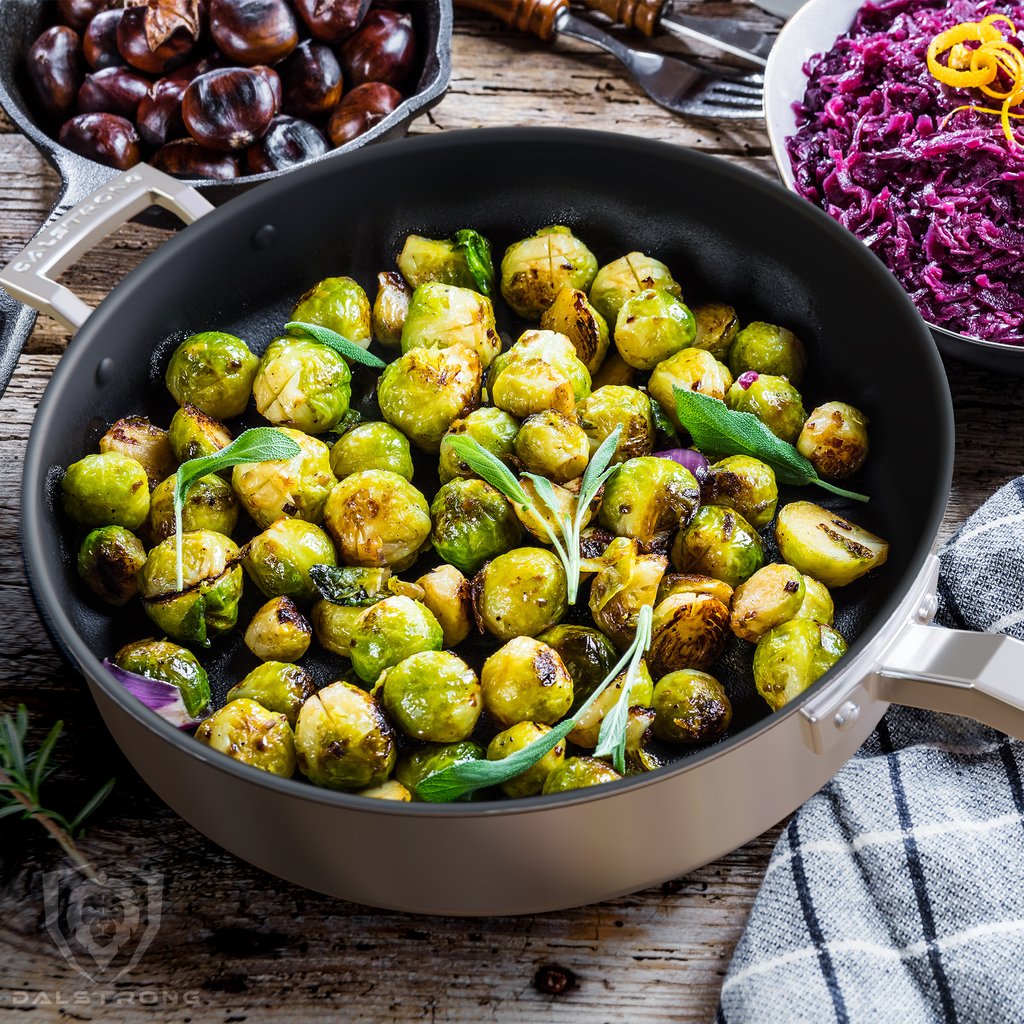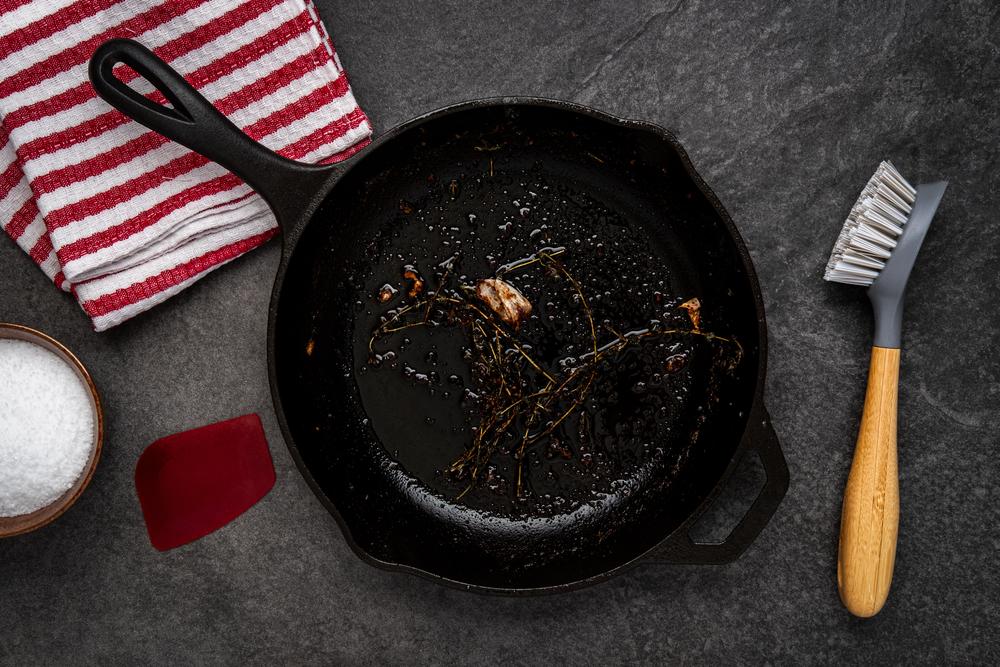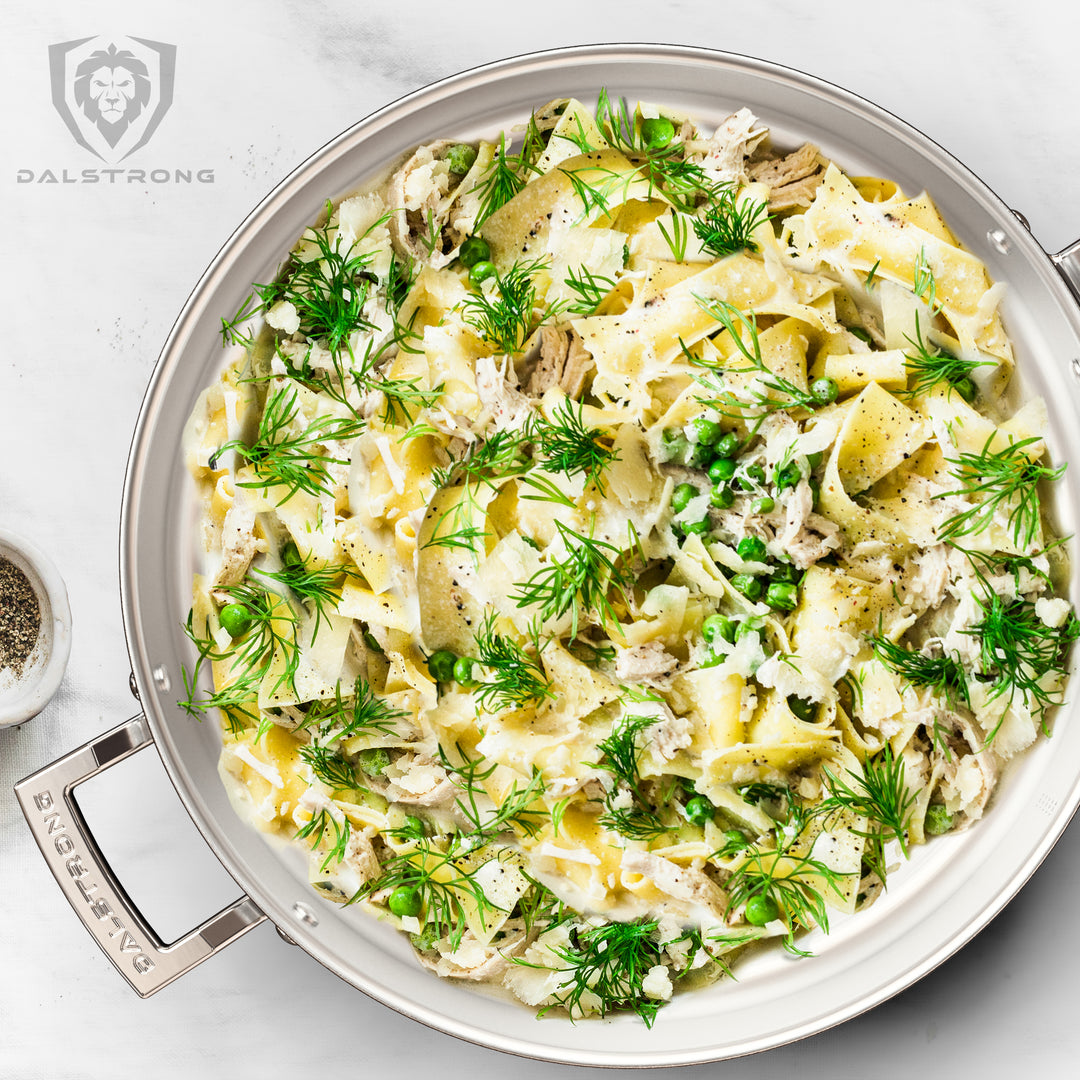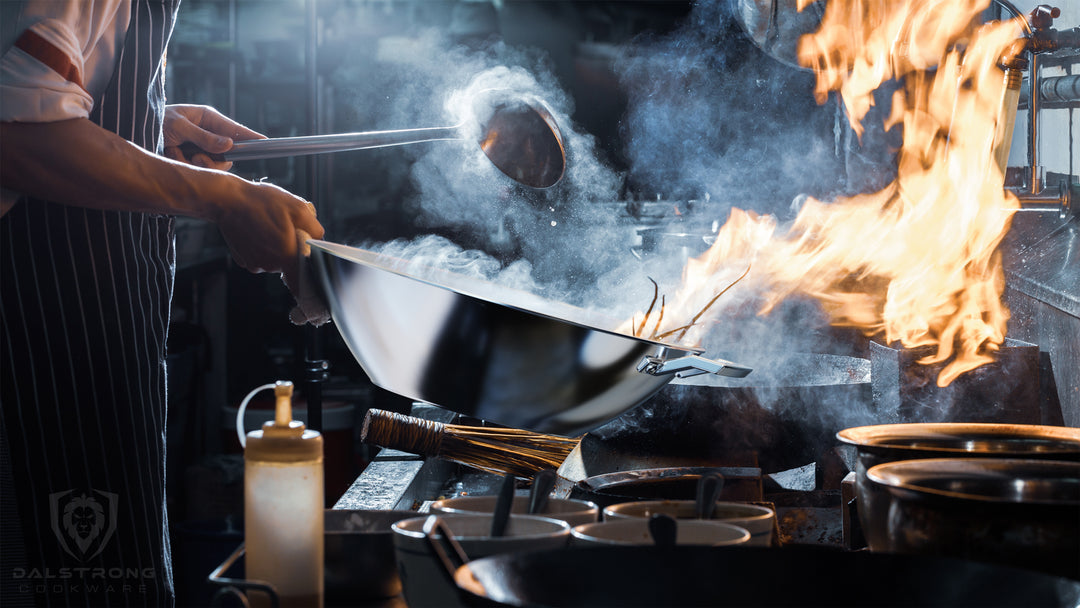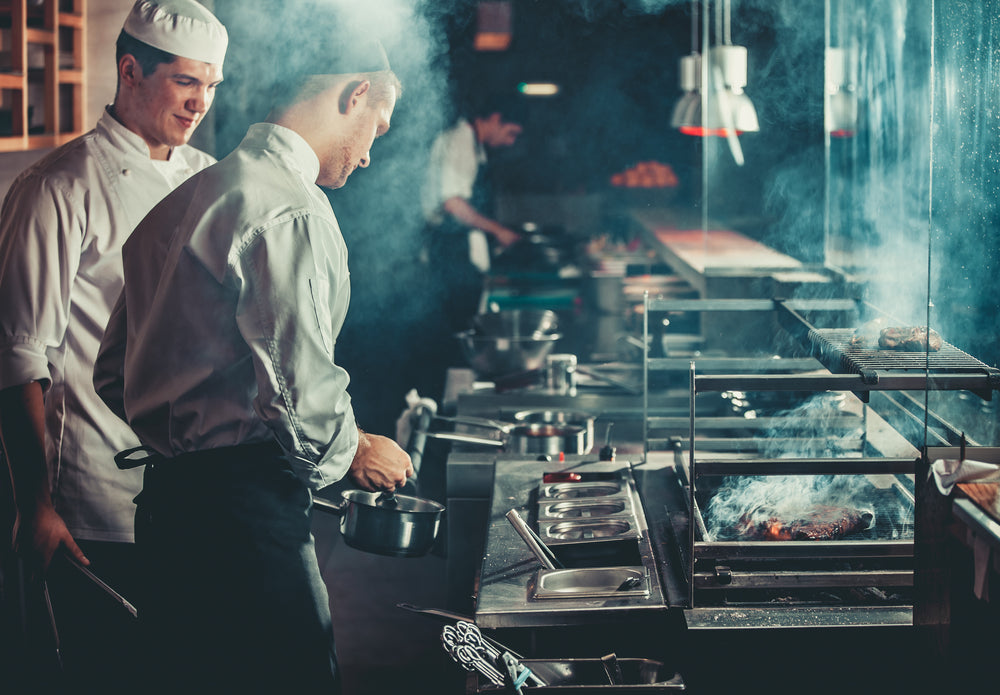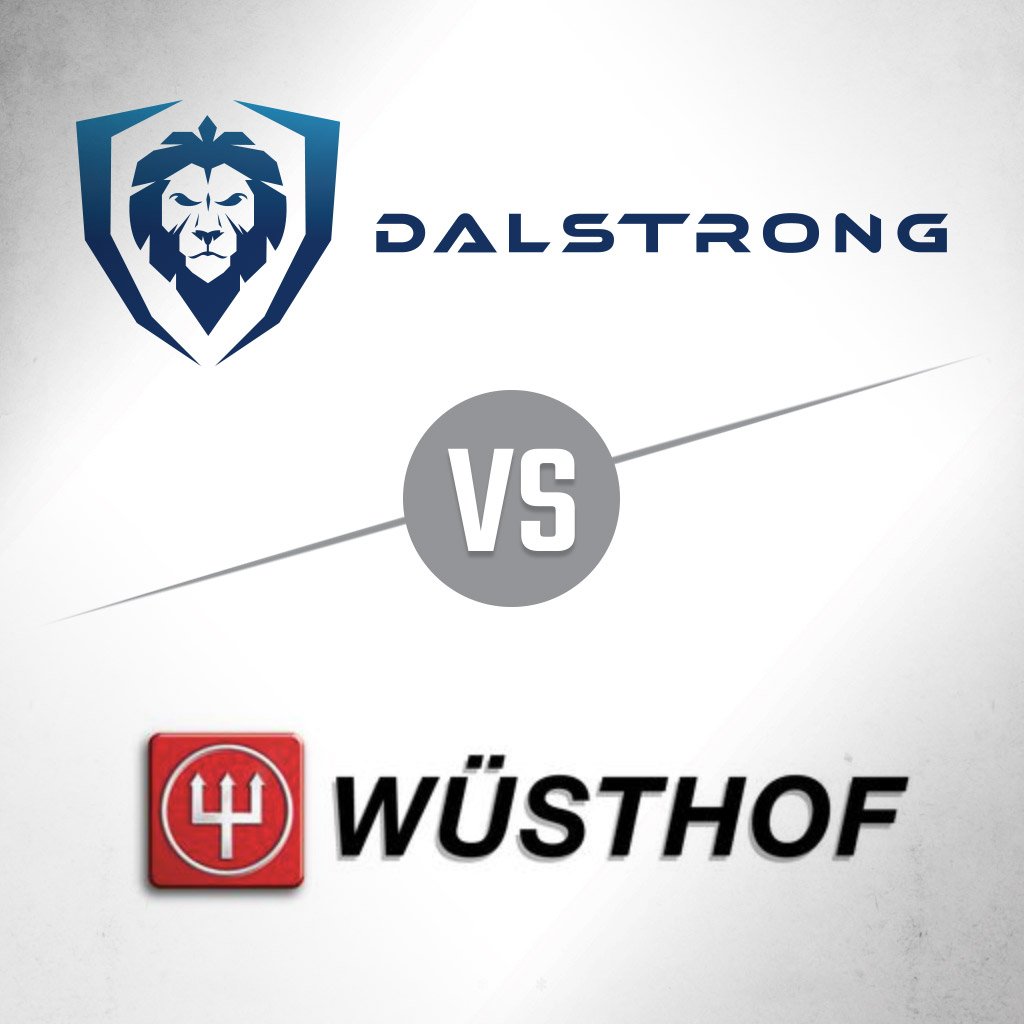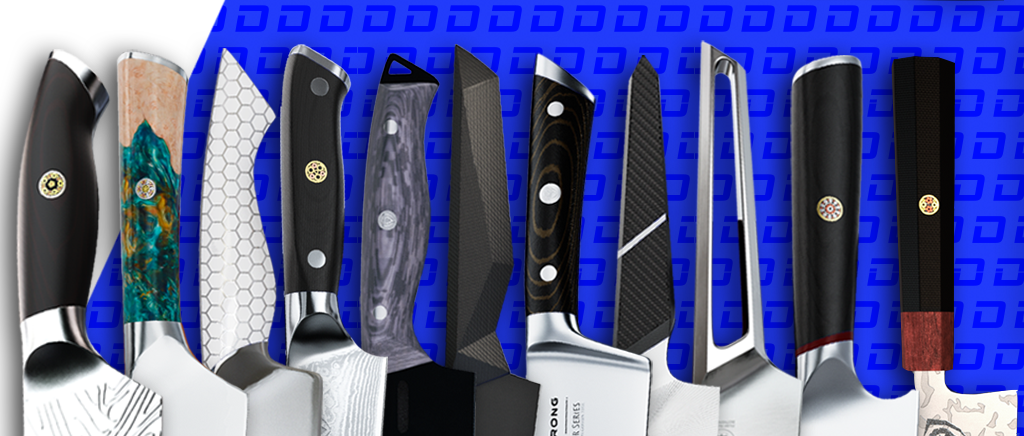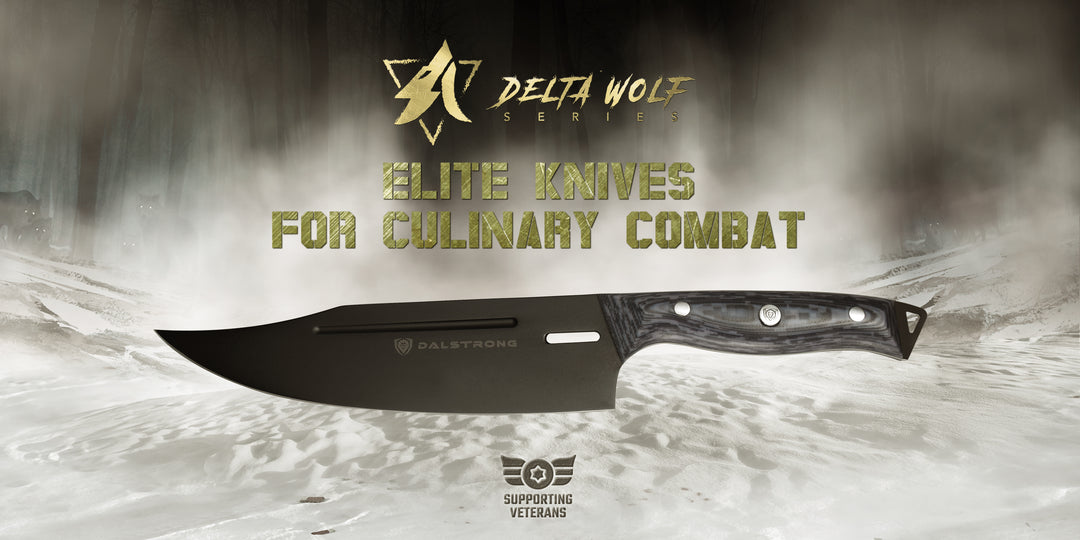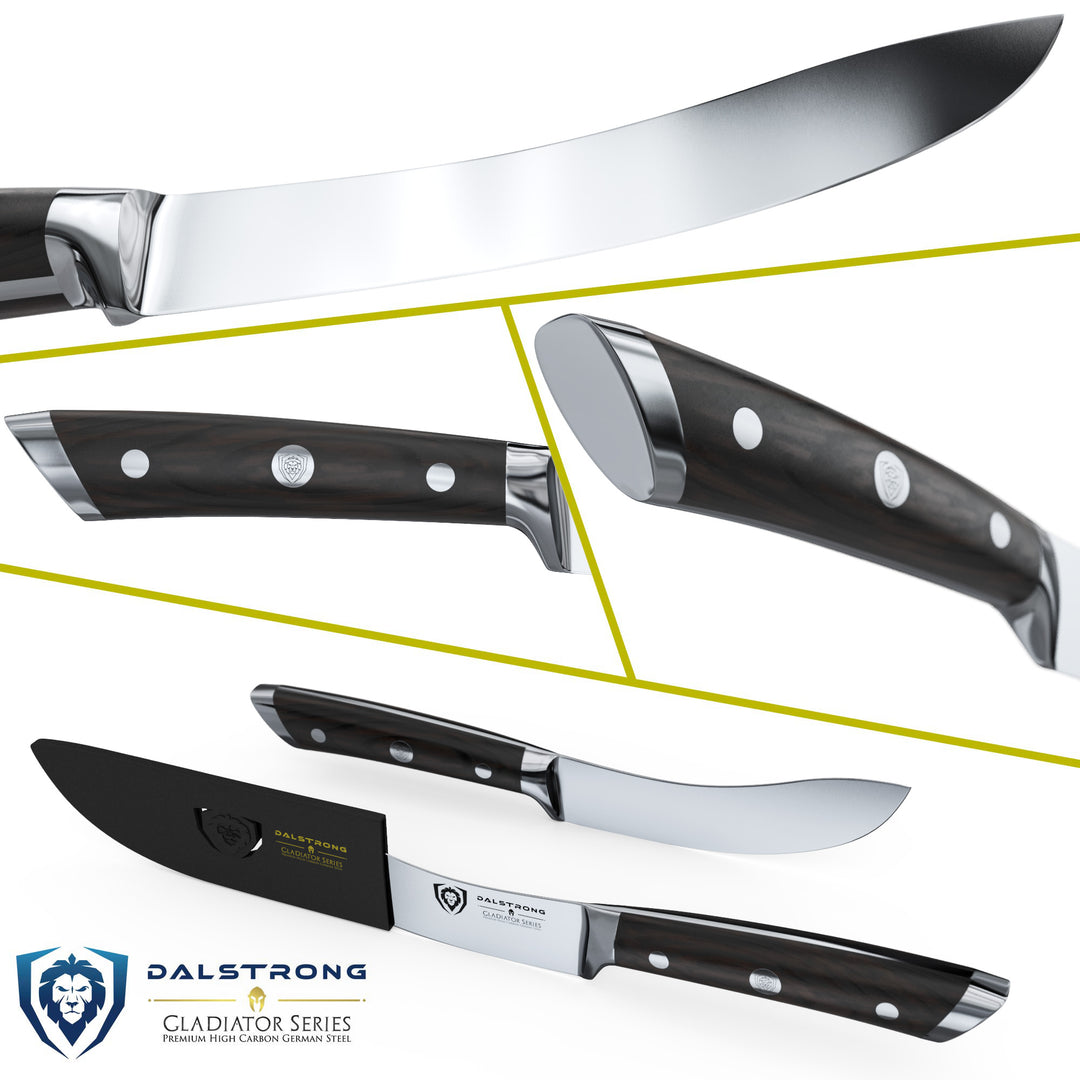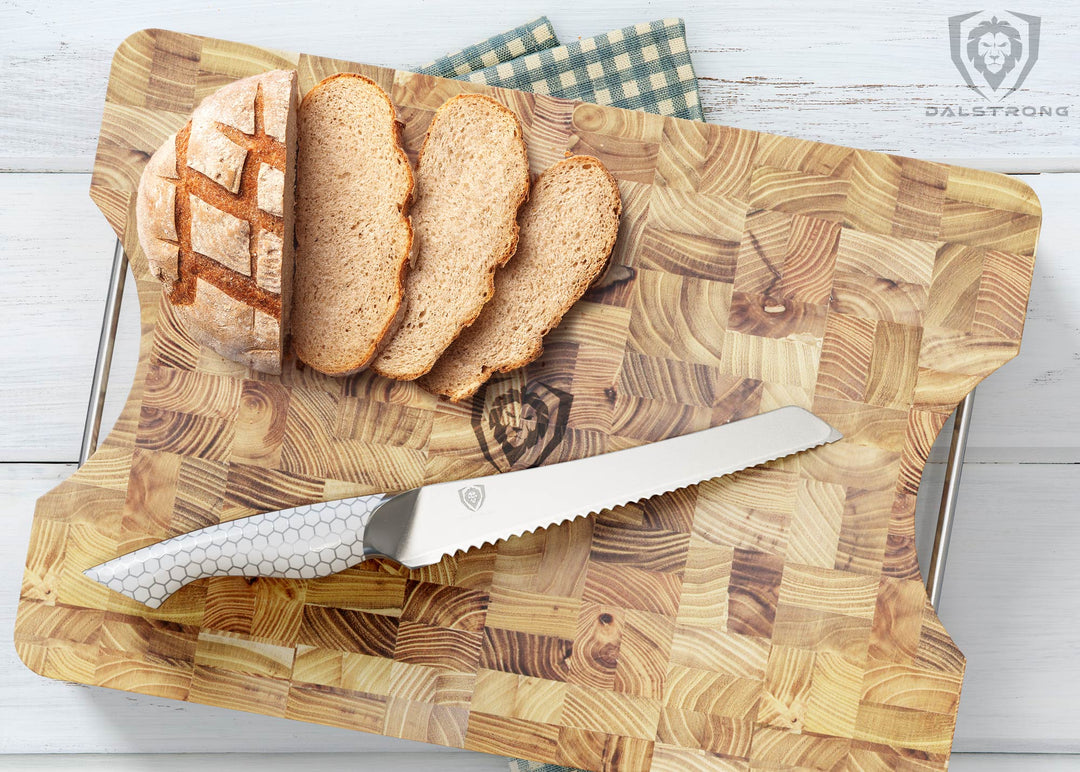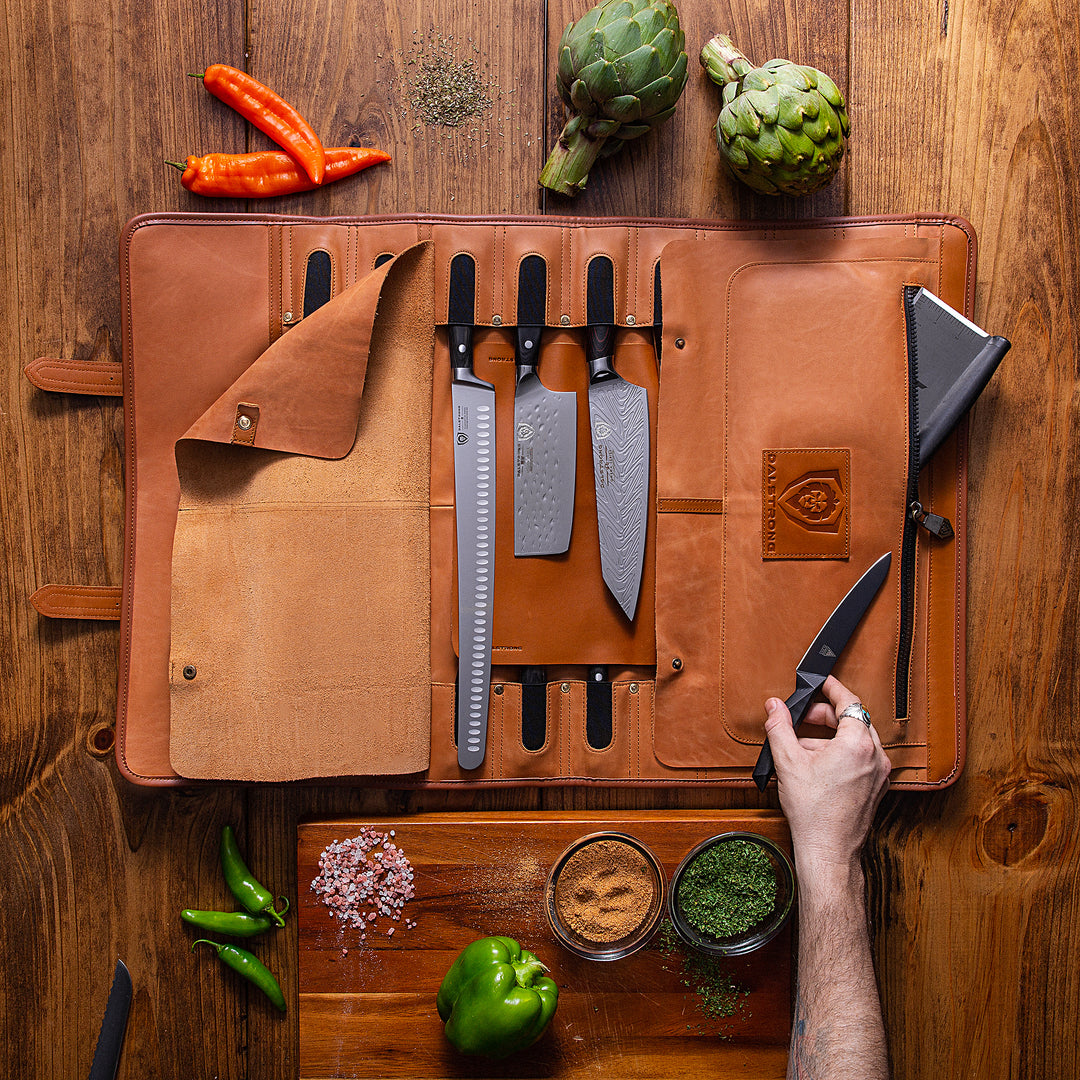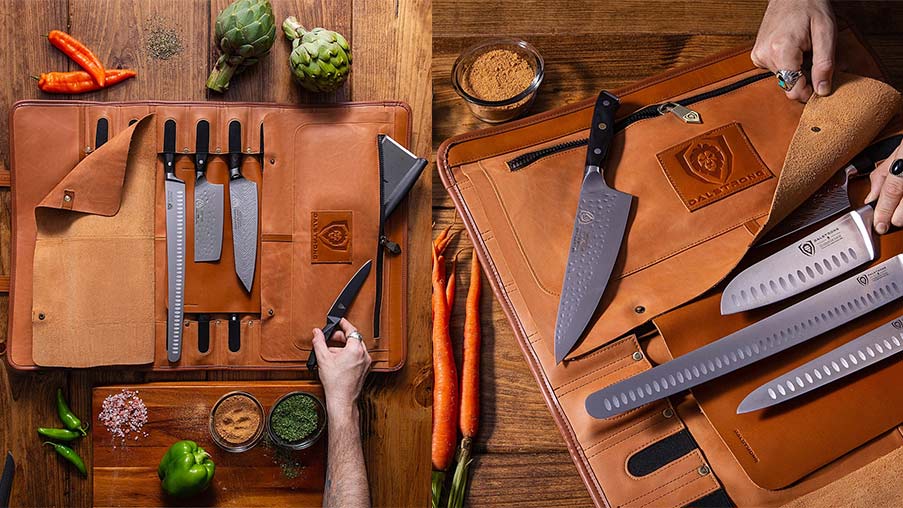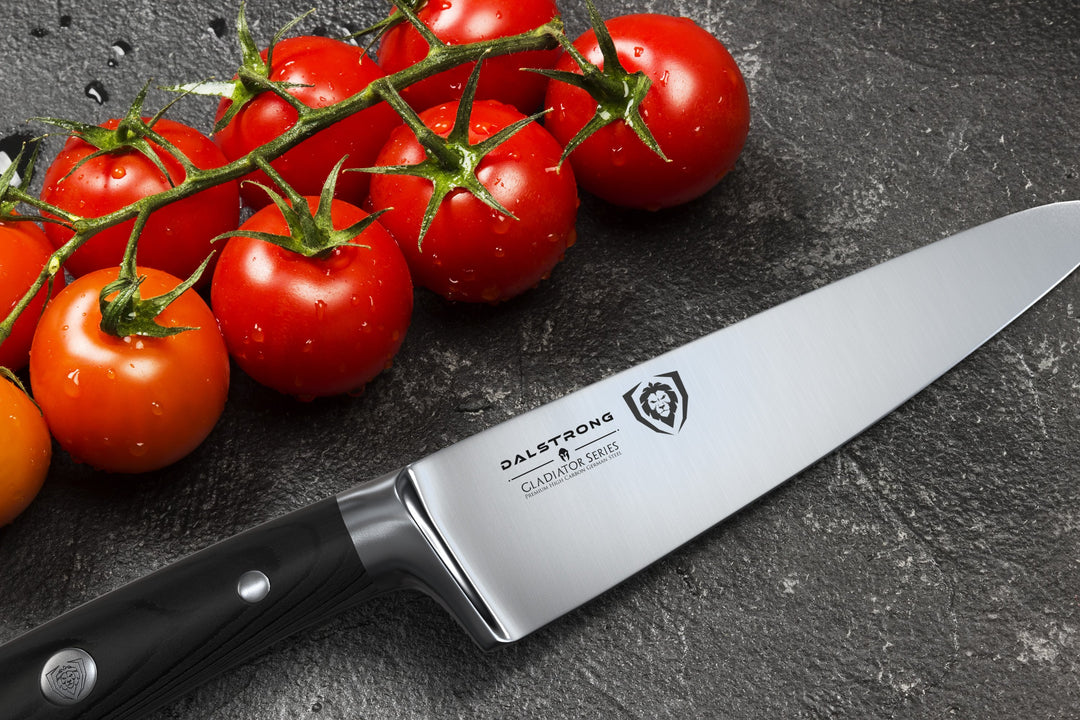Japanese Knife VS Western Knife: Here’s What You Need To Know
 Usuba Knife 7”- Ronin Series | Dalstrong
Usuba Knife 7”- Ronin Series | Dalstrong
Compared to Western-style knives, Japanese kitchen knife-making traditions are known for their unique and diverse style, design, and quality materials. Japanese knives are popular for their versatility like the Gyutos and Santokus. There are also highly specialized knives such as the Yanagiba knife and Deba knife. The way these knives are produced also varies. While some are mass-produced, you can also find knives that have more character and are entirely made by hand.
As mentioned, Japanese knives only use the highest quality steel and are usually heat-treated to even higher levels of hardness compared to Western-style knives. Japanese knives became known to perform better than their western counterparts because of their keener edge and more acute bevel angles.
Let me take you through the different types of Japanese knives and see what makes them a cut above traditional western blades.
1. What is a Japanese Knife?
 Yanagiba Slicer 9.5”- Phantom Series | Dalstrong
Yanagiba Slicer 9.5”- Phantom Series | Dalstrong
Over the years, Japanese chefs and sushi masters have popularized these knives not only within the professional community but also among those that are passionate about food and cooking. Typically, Japanese knives are lighter than their Western counterparts and have a straight blade that is thinner and sharper. This makes cutting softer foods more precise.
However, unlike your ordinary knives, Japanese knives do not have the natural rock which makes repetitive cuts like chopping and dicing slightly difficult. Because of their thin blade, they will require more care and sharpening as they can chip or dull faster.
2. History of Japanese Knives
 6'' Nakiri Knife | Shogun Series | Dalstrong ©
6'' Nakiri Knife | Shogun Series | Dalstrong ©
Japan is a prominent knife-making country in Asia, particularly in Seki and Sakai. Japan values tradition and is very prominent and widely observed in its knife-making process. This process is passed on from generation to generation for hundreds of years. The Japanese knife-making technique was initially developed for making Katana or samurai swords. Japanese knives gained popularity because their blades were razor-sharp and hard. They usually have a hardness rating of 58 to 65 on the Rockwell scale while the Western German knives range from around 52 to 56.
However, because it contains more carbon, you have to be careful when washing and storing your Japanese knives. Also, many Japanese knives are single-beveled, which means they are sharpened only on one side.
Usually, this cutting edge is placed on the right side since most people are right-handed. But in very few instances, Japanese knife makers sell knives where the cutting edge is placed on the left side. Lefties will have to place a special order for the knife and have it custom-made to fit their hand.
3. Types of Japanese Knives And Their Uses
 Shadow Black Series 7'' Santoku Knife
Shadow Black Series 7'' Santoku Knife
When buying Japanese knives, it is very important to be clear about why you want a knife and what type of knife would you require to achieve that. Read on to know more about the different types of Japanese knives and their uses.
Gyuto Knife
Gyuto Knife is considered the chef’s knife in Japanese. What sets them apart from any Western knife is having a thin blade. Gyuto knives translate to “a cow sword” and were made for chopping large pieces of meat.
A Gyuto knife ranges around 150-390mm but the most common ones typically range around 210-270mm and have blade thickness around 1.5-5mm. This knife is so versatile that it can be used to cut, filet, and prepare meat or fish. The slim blade of this knife is perfect for intricate tasks like pull or push cuts.
Santoku Knife
Santoku is a multi-purpose Japanese knife that translates to “knife of three virtues”. It can be used for cutting vegetables, fish, and meat. Santoku is also sometimes spelled “Santuko” in different parts of Europe. Santoku has a wider blade and is more rounded. Santoku can be easily considered one of the most popular Japanese blades and now we know why! Santoku knives are versatile and can do any type of cutting task like a true master. Dalstrong’s 7” Santoku Knife is one stellar example of a Japanese blade you must add to your kitchen arsenal.
Kiritsuke Knife
Kiritsuke is single bevel-edged and is a very versatile knife used for cutting or slicing vegetables and fish. Just like Usuba, Kiritsuke also has a flat heel. But because this blade is a combination of two knives that were designed for very different tasks, using this knife can be tricky and would require some practice. In fact, it is usually only the head chef that is able to use a Kiritsuke in a lot of Japanese restaurants.
The Kiritsuke knife looks like a wider version of a Yanagiba. Both have a ‘clip point’ tip that is perfect for slicing meat precisely but the blade length is longer than most Usuba. 270-300mm sizes are the perfect tools to achieve long-drawn cuts. If you are an experienced chef and would like to invest in a Japanese slicer, then Dalstrong 8.5” Kiritsuke Knife is an absolute game changer!
Deba Knife
The word “Deba” in Japanese means “short fat tooth” and that perfectly describes the shape of this knife. A sushi chef usually uses a Deba Knife while preparing fish. This blade is popularly known for its ability to filet a whole fish and butcher boneless meat.
Deba Knife is a traditional Japanese blade that has a “single bevel” which helps achieve more precise cuts. You can find a Deba knife in different sizes, sometimes up to 12 inches. If your love for sushi has driven you to invest in one of these blades then Dalstrong’s 6” Deba Knife is the edge you need.
Nakiri Knife
This knife comes with a rectangular and thin blade for cutting vegetables and is mainly intended for home use. Nakiri or “cutting greens” sit flat on cutting boards and can cut through without the rocking motion.
While a Nakiri knife is perfect for vegetables but not for butchering meat or cutting through big vegetables. Dalstrong 7” Nakiri Knife is what you need to cut up your leafy greens and veggies.
Usuba Knife
The Usuba or ”thin blade” is another famous traditional Japanese-style knife for slicing vegetables. This Dalstrong 7” Usuba Knife will not only help you retain the freshness of cut vegetables but will also make your meals look visually stunning.
Yanagiba Slicer
The Traditional Japanese Yanagiba has a long and thin blade intended for cutting thin slices of fish. This slicer can be used for cutting large pieces of meat as well.
Typical Yanagiba knives range between 240-360mm in length and can be used for different precision tasks in the kitchen. This knife resembles a willow leaf, hence it is called “Yanagiba”. A Yanagiba is unique and different from other slicers because of its unique Japanese handle and chisel ground blade with a small angle. You should check out Dalstrong’s 9.5” Yanagiba slicer if you are experienced with handling blades and are passionate about sushi.
4. Japanese knives VS Western Knives
 Nakiri Knife 6.5" | Frost Fire Series
Nakiri Knife 6.5" | Frost Fire Series
Below are some factors that make Japanese Knives different from Western knives:
The Blade
One of the biggest differences between these 2 types of blades is the sharpness of their blades. Western-style knives are sharpened on both left and right sides of the blade or what they call a “double-bevel”.
Their Japanese counterparts are mostly sharpened so that only one side of the knife holds a cutting edge. This is known as “Single-bevel".
The Design
Japanese knives have long and straight blades that allow clean cuts. Their blade shape also prevents smashing ingredients. Japanese knives help ingredients remain fresh for longer by protecting them from discoloration or loss of flavor.
Western-style knives had more curved along the blade and provides a rocking motion. Japanese knives also allow perfect and precise pressure to specific areas of the blade.
The Weight
Because they have thin blades, Japanese knives are lightweight and have good balance. Several different types of handles are used that can serve as their French and German counterparts such as traditional wood handles, D-shaped, and other variations.
Steel Hardness
Japanese knives are very sharp, able to hold an edge longer, and are typically made with harder steel than the usual stainless steel used by many Western knives. It is highly recommended to only use whetstones when sharpening Japanese blades.
Bevel
A lot of Japanese knives today have a 50/50 edge balance making them suitable for both left and right-handed usage. Traditional Japanese knives were usually made with the cutting edge on only one side just like in making swords.
Although a few traditional Japanese knife styles like Yanagiba or Usuba only have one edge, many modern knives have a 70/30 balance allowing the user for steeper cutting angles.
5. Factors To Consider Before Buying A Japanese Knife
 Crusader Series 7'' Santoku Knife
Crusader Series 7'' Santoku Knife
Here are some of the factors that you have consider if you’re planning to buy a Japanese knife:
Steel
The most important thing to consider when buying a Japanese knife is steel. Japanese steel is popular for its durability, sharpness, and ease of sharpening.
For example, one of the most expensive steel used to make these knives are high-carbon steel (also called blue or white steel). They are much harder but they tend to chip easily and require a lot more maintenance than other steel.
Get a Damascus stainless steel knife if you are looking for an entry-level Japanese knife. Damascus knives are widely known to be more durable and don't rust as easily compared to other types of steel. So if you’re just starting your Japanese knife collection, I highly suggest starting with affordable knives to practice and then investing in a more luxurious blade.
Handle
The shape and material of the handle are other important factors you need to consider. Make sure to get a knife that feels comfortable and has great balance when you hold it. Test and hold the knives before buying them to make sure that the handle fits perfectly with your hands. This will help prevent any accidents and injuries in the kitchen.
Usage
Lastly, you have to consider what purpose you need the knife for. For example, a Deba knife is what you need to purchase if you need a knife to help you filet and prepare fish, and a Nakiri knife if you need help on a wider range of kitchen tasks such as preparing vegetables.6. How To Care For Your Japanese Knives?
 Quantum 1 Series 7'' Santoku Knife
Quantum 1 Series 7'' Santoku Knife
- Wash and dry your Japanese knives immediately after use. Carbon steel core knives are more prone to rust.
- Always hand wash your Japanese kitchen knives. Avoid using dishwasher detergent as it can seriously harm your knives.
- Store your knife safely. Always protect it with a blade guard or sheath. Do not store your knives in a drawer. Your knives can be dull and damaged when they get in contact with other steel objects inside.
- No matter how sharp, there will come a time when your knives will need sharpening. A dull blade will force you to apply more pressure and increase the risk of accidents. Do not wait for your knife to get dull before deciding to sharpen them. Regularly sharpen your knives with whetstone. This helps enhance your knives’ durability and longevity.
- If the knife handle is made of wood, season it with wax or oil after a few months of use. Mineral oil is the most popular oil to season wooden handles.
7. Unique Dalstrong Japanese Knives You Should Try
Dalstrong is hands down one of my favorite knife brands. Check out some of the cooking knives you must add to your kitchen arsenal.
1. Santoku Knife 7”- Firestorm Alpha Series | Dalstrong
This Japanese blade truly lives up to its name and can be used in a lot of ways; slicing, dicing, and mincing to name a few. This versatile and maneuverable knife is slightly smaller than a traditional chef's knife. You can use this chef's tool in preparing fruits, vegetables, and even boneless cuts of meat and fish. The pointed tip feature of the knife can also be used for coring out tomato stems.
Pros:
- The double bevel blade is ruthlessly handcrafted and sharpened to 8-12 degrees perfect for thin slicing. This knife will allow you to strike with confidence in the kitchen.
- The robust handle is reinforced with stabilized wood and a G10 Ring that adds durability and provides full control as you rapidly move from task to task.
- The knife is made of high-carbon steel or blue steel that is forged to enhance strength and increase the lifespan of the knife dramatically.
Cons:
- If you are looking to tackle large chunks of meat or vegetables, you might want to use a longer blade.
- If you are planning to invest in a Japanese knife for the first time, you might want to pick a blade that is a little easier on your pocket like this 5” Santoku knife.
2. Kiritsuke Chef’s Knife 8.5”- Shogun Series | Dalstrong
This push-cut master features a long, straight edge and sword-shaped tip. Considered the Japanese version of a multi-purpose Western chef’s knife, this blade fuses the design of both a traditional Japanese Yanagiba and Usuba knife.
Pros:
- This knife is double beveled, making it easier to use and maintain.
- The super-steel core possesses extra high carbon levels, making it scalpel-like sharp and have exceptionally long-lasting edge retention.
- The carefully designed ergonomic handle is designed for superior hand control and comfort.
Cons:
- This 8.5-inch blade can be a little intimidating to use especially if you are new to using Japanese kitchen blades.
- The straight edge of this blade does not allow for the rocking motion that you would require to slice and mince vegetables.
3. Nakiri Knife 7”- Gladiator Series | Dalstrong
Combining the elements of a chef's knife and a vegetable knife, this 7” Nakiri knife from our Gladiator Series is a double-bevel vegetable specialist. The square tip and flat profile of this Nakiri knife make it perfect for push cuts, whilst having an extra width perfect for assisting food transfer.
Pros:
- The edge of this vegetable knife is painstakingly hand crafted and sharpened to 16-18 degrees on both sides, providing a perfect balance of blade sharpness and maximum resilience.
- The tall blade height gives knuckle clearance to assist with food preparation and chipping activities.
- The tapered design of the blade provides it with hardness and flexibility.
Cons:
- These vegetable knives are not very versatile and can be mainly used to prep vegetables and fruits. However, it is not ideal for meat or fish.
- These kitchen knives cannot be used with the rocking chop motion.
- Nakiri knives are shorter than other kitchen knives.
4. Usuba Knife 7”- Ronin Series | Dalstrong
This Usuba knife is the ultimate tool of choice for professional chefs that are looking to cut shockingly thin slices of fruits and vegetables with accuracy and speed. This 7” Usuba knife is forged with a single piece of ultra-sharp Japanese super steel and is hand finished at an acute 15 degrees angle using the traditional 3-step Honbazuke method.
Pros:
- This razor-sharp knife finely cuts raw fruits and vegetables by minimizing cell damage and discoloration due to oxidation.
- The knife is precision forged from a single piece of ultra premium Japanese high-carbon steel that is laminated on either side for stain resistance and durability.
- The “Liquid-Kusari” pattern on the blade minimizes drag and stuck on food while maximizing your slicing efficiency.
Cons:
- This knife cannot be used to cut up or slice meats and bones.
5. Yanagiba Slicer 9.5”- Phantom Series | Dalstrong
This blade is a Sashimi slicing pro. Featuring a long and narrow blade that ensures paper-thin slices of fish, this very sharp knife sails through fibers in the flesh without any tear or pull. This blade is thicker than the usual standard kitchen knives and provides heft, rigidity, and pushes the sliced piece away from the fish or body of meat.
Pros:
- This Asian knife is gaining popularity in the west and is being used for boneless proteins like raw poultry, flank, pork tenderloins, and other tender cuts of meat.
- The blade is precision forged from a single piece of ice-tempered steel. This blade also features a narrower width for improved agility and maneuverability.
- This knife cleans easily and is simple to maintain.
- The pakkawood handle of the knife allows for a comfortable pinch grip.
Cons:
- This 9.5” beast can be slightly tricky to use and would require practice before you start using it for your food preparation.
- If you are looking to cut up fruits and vegetables, this knife might not be the one for you. In that case, you may want to opt for a Ususba or Nakiri knife.
8. Frequently Asked Questions
What is a Japanese Knife called?
Yanagi is a single-beveled traditional Japanese knife used in a long drawing motion to cut precise slices of sushi, sashimi, and also Crudo.
What is a traditional Japanese knife?
Japanese knives are usually fitted with traditional Japanese wooden handles and have blades with tapered tangs that fit inside a hole and burn into the wood.
What is the most versatile Japanese knife?
Gyuto is the most versatile type of Japanese knife. Damascus Gyuto can be used to prepare a lot of things including beef, fish, or vegetables.

